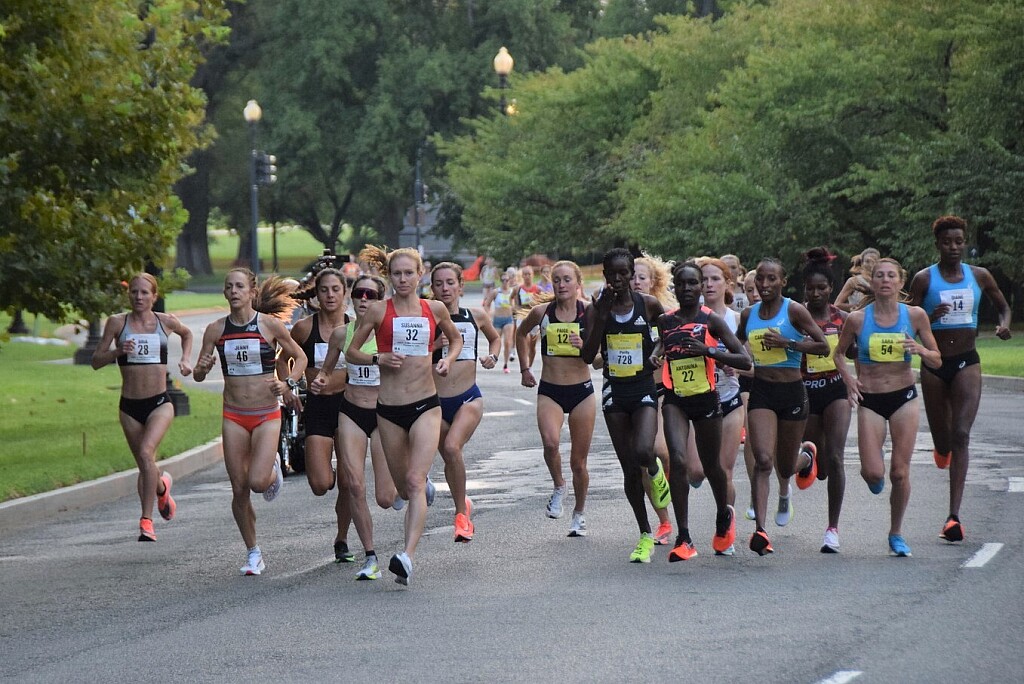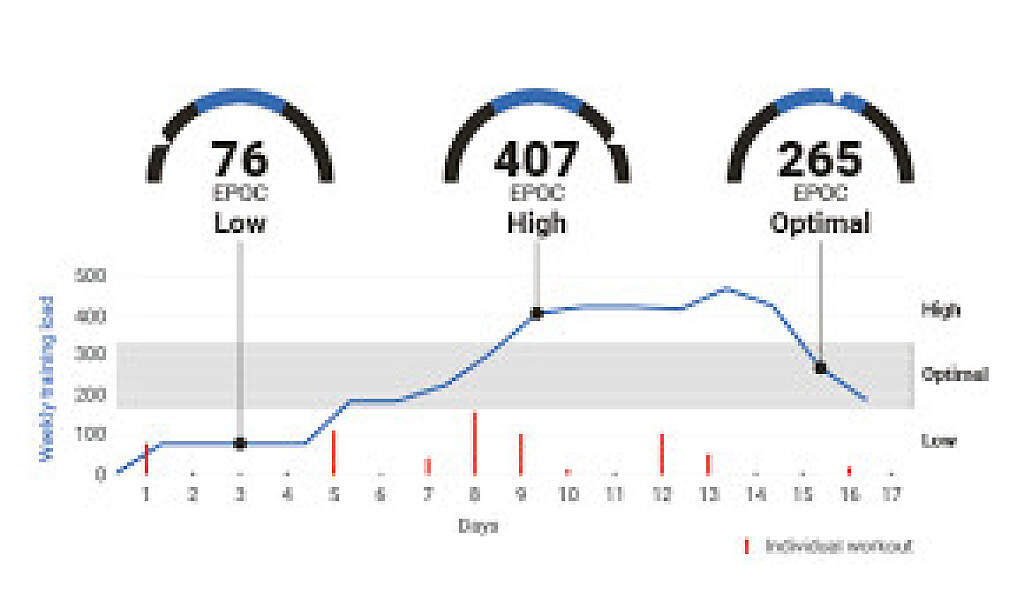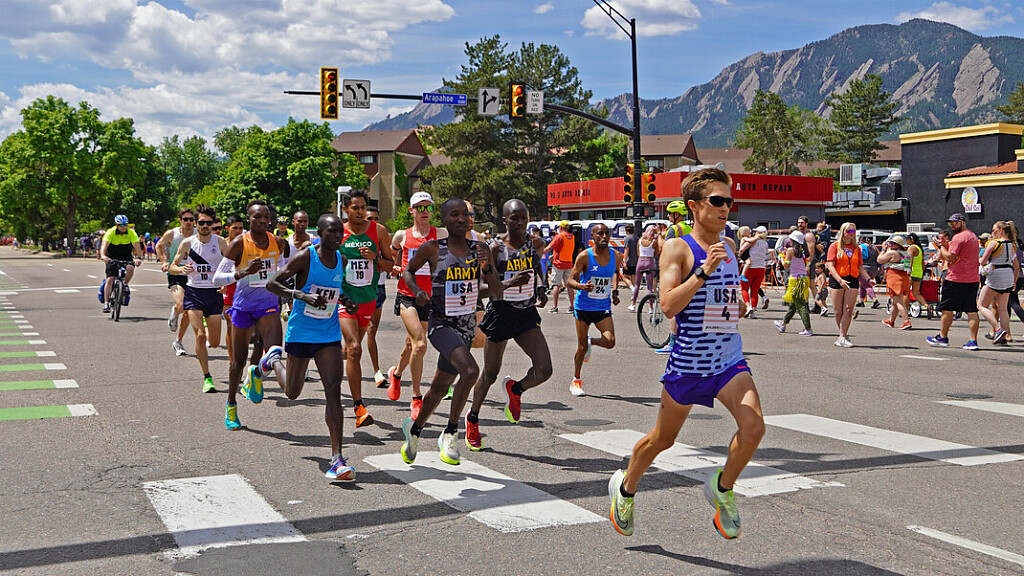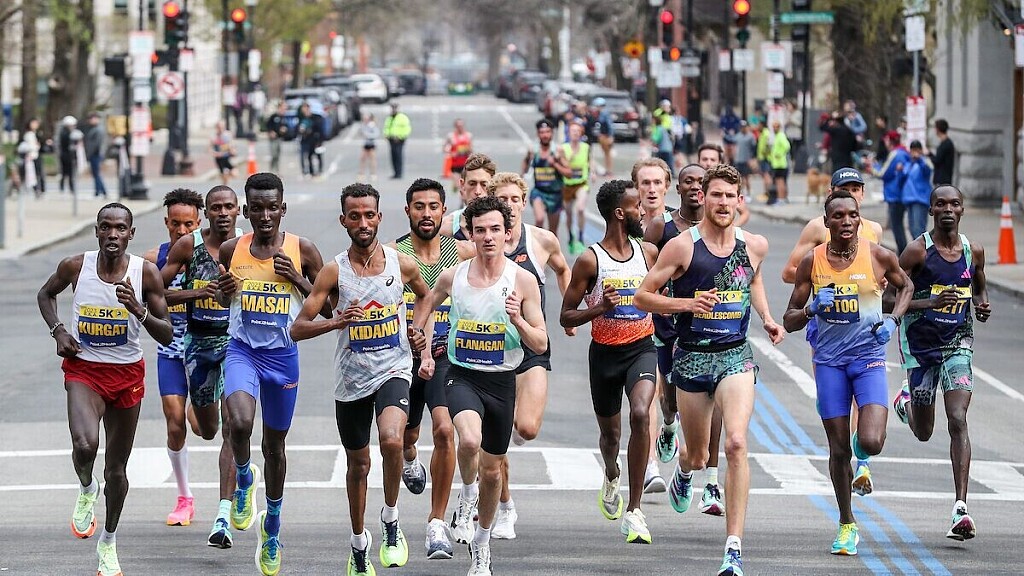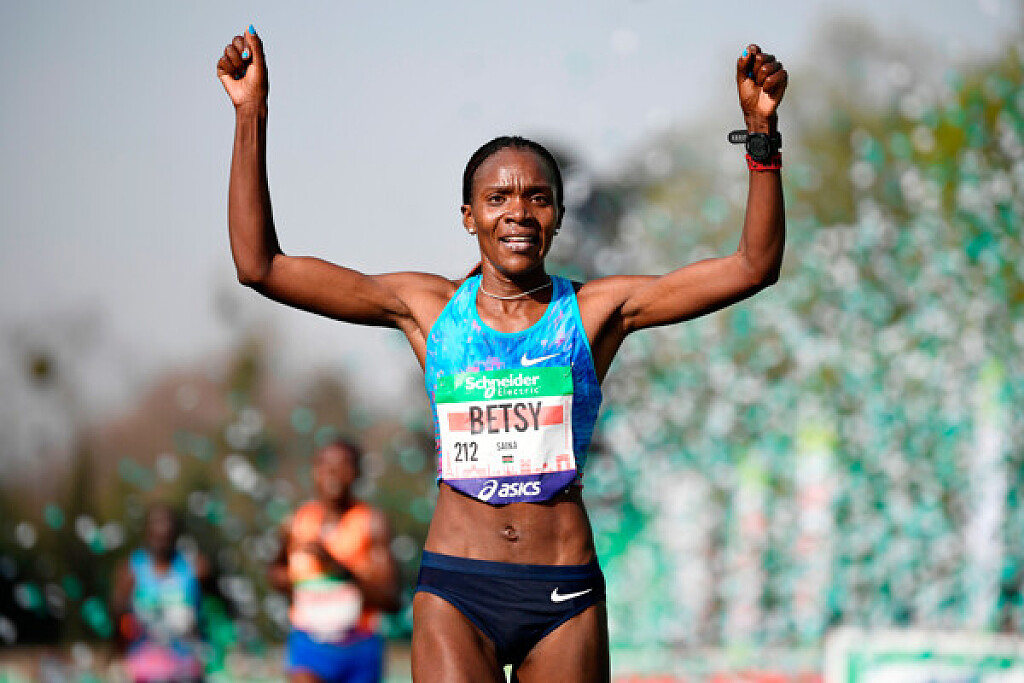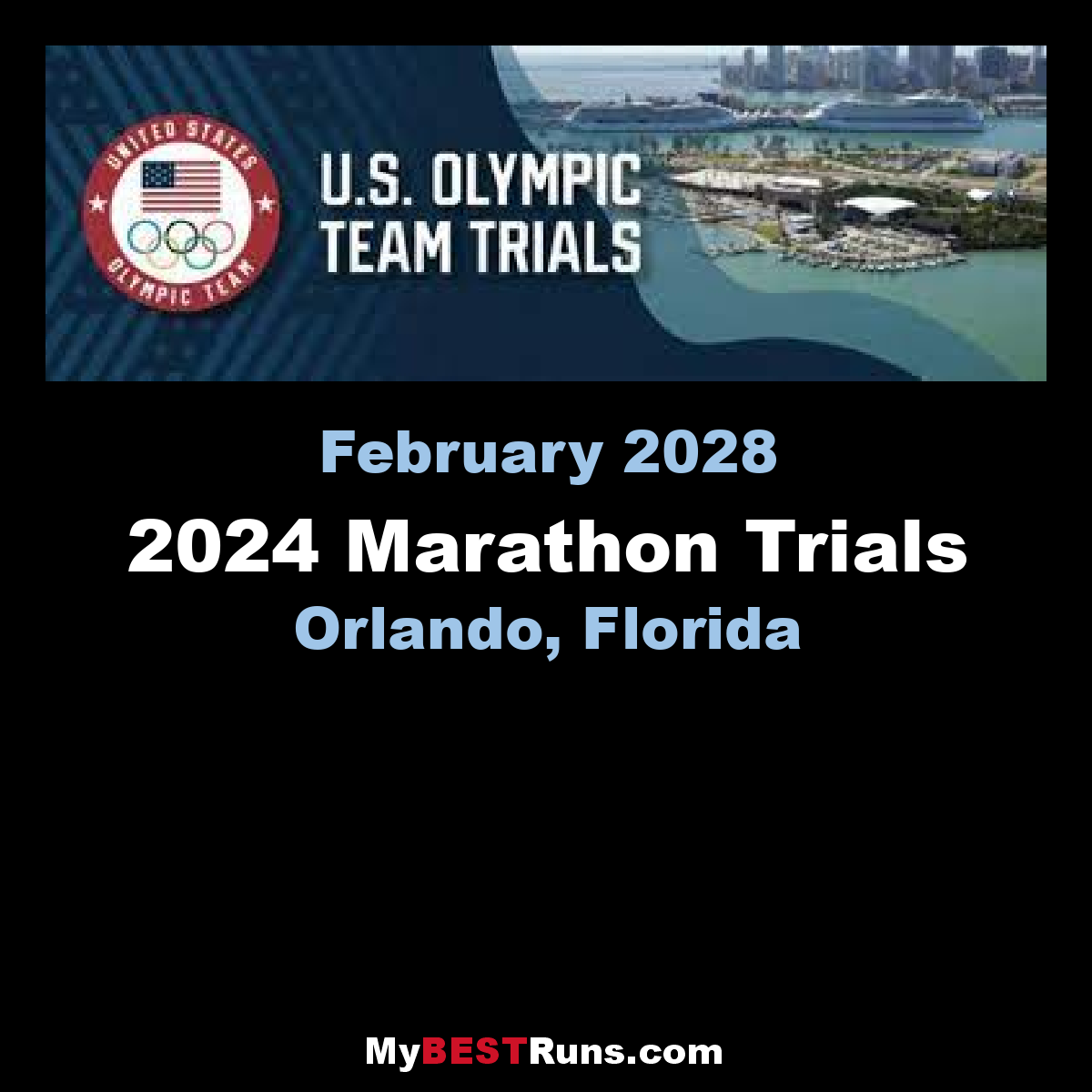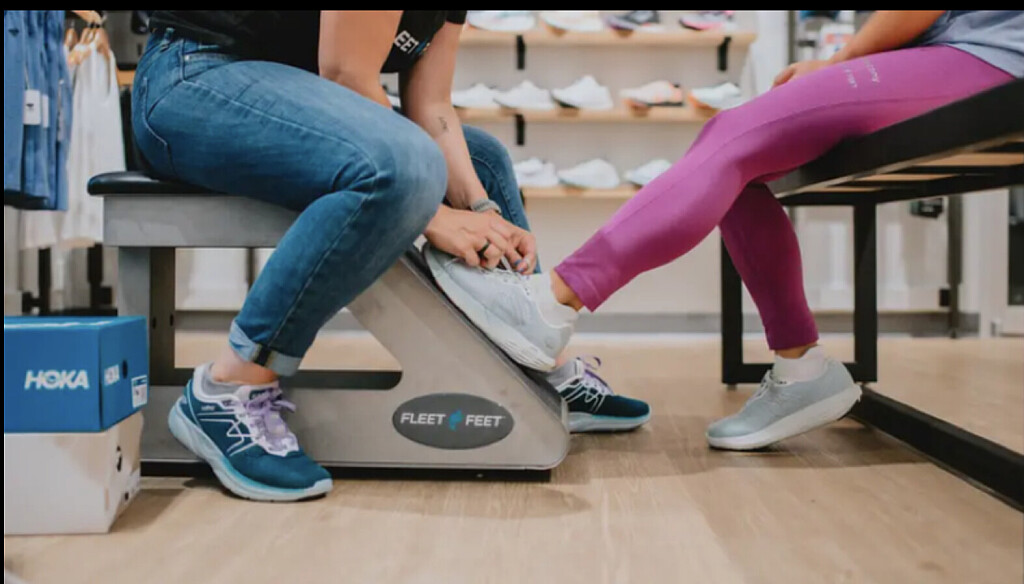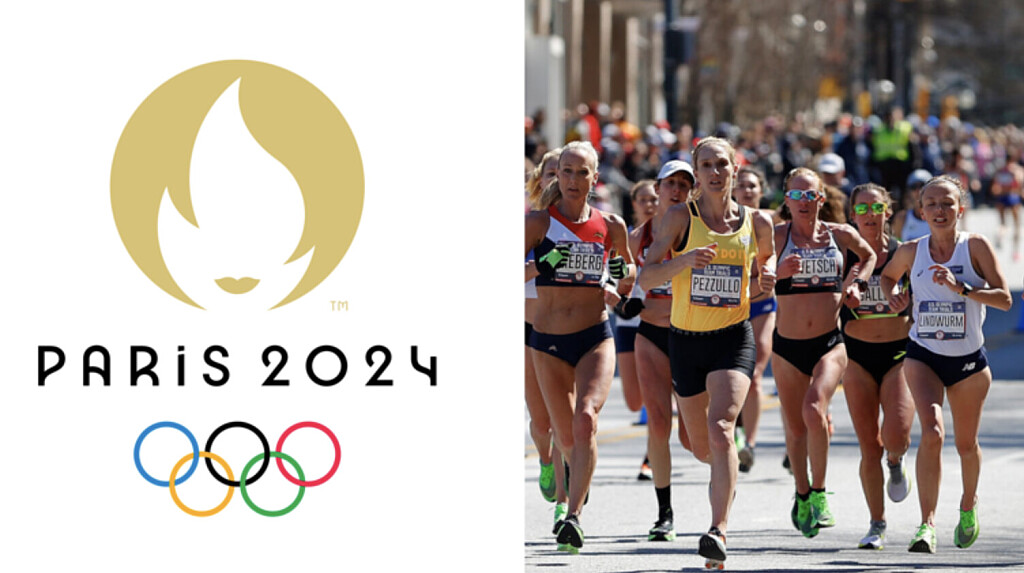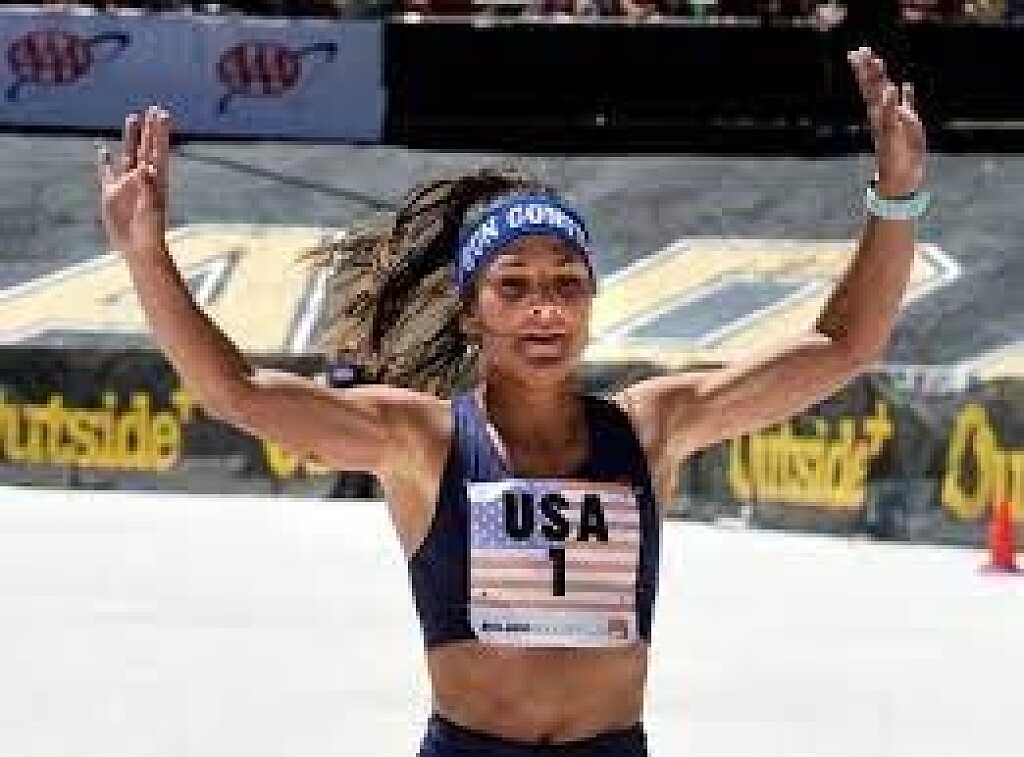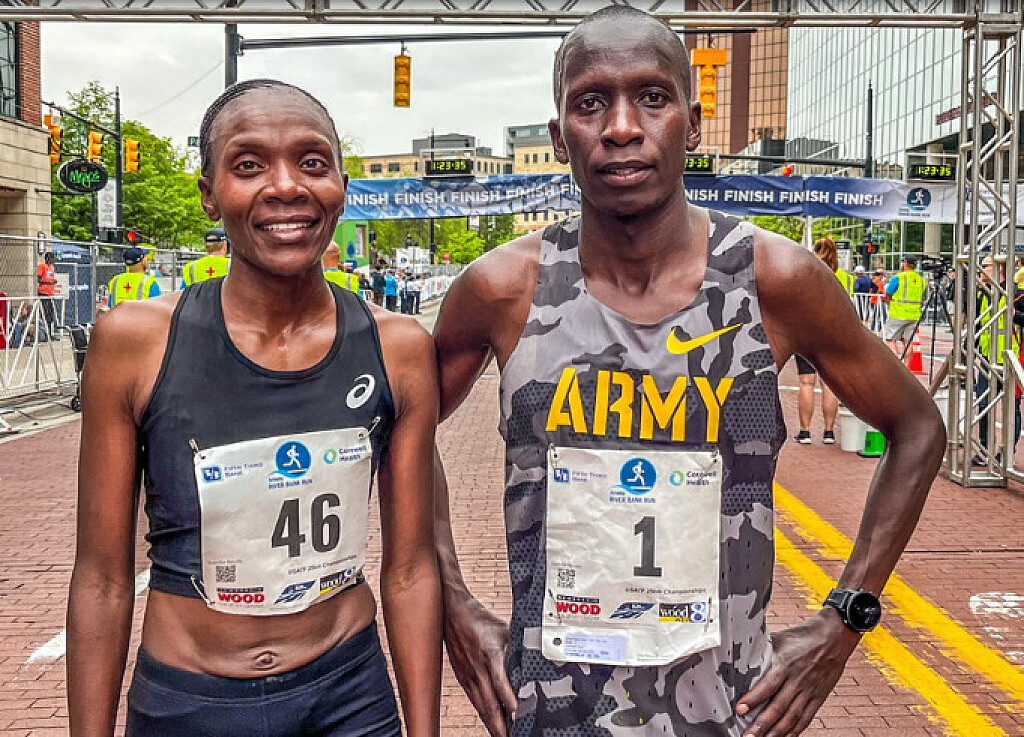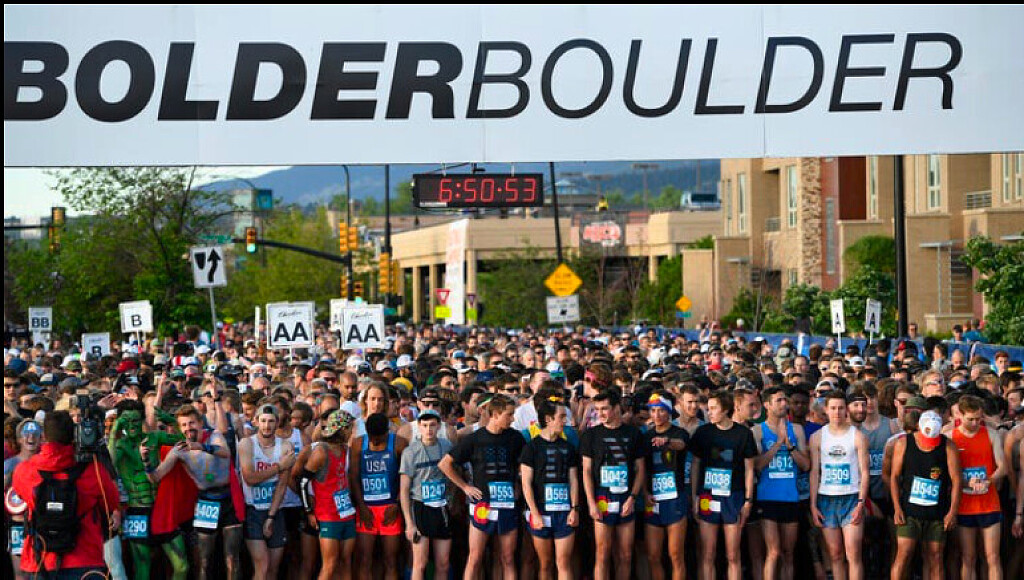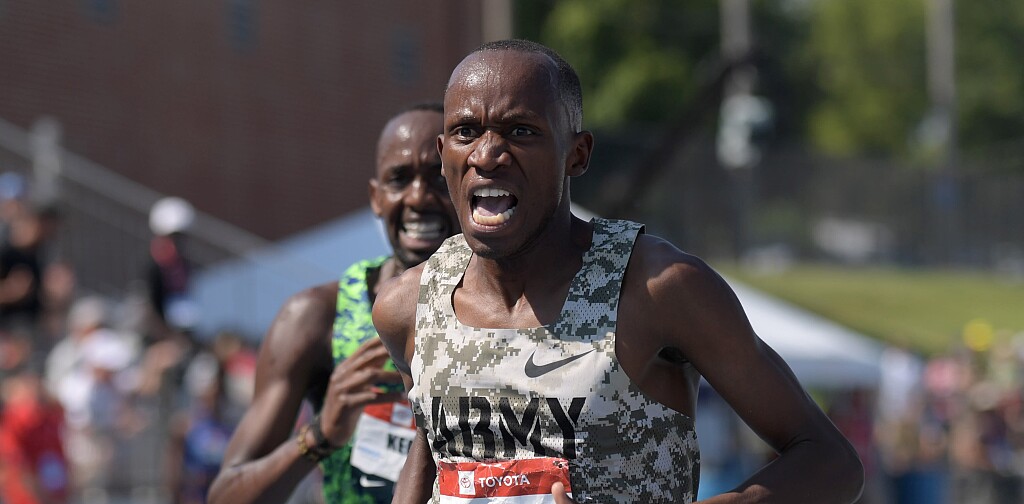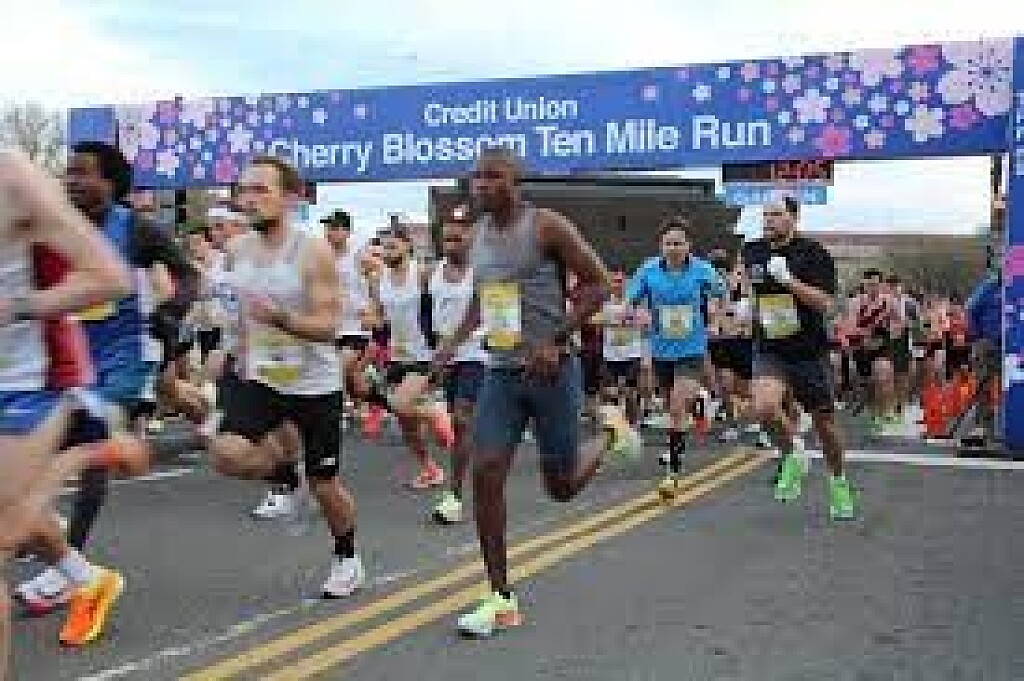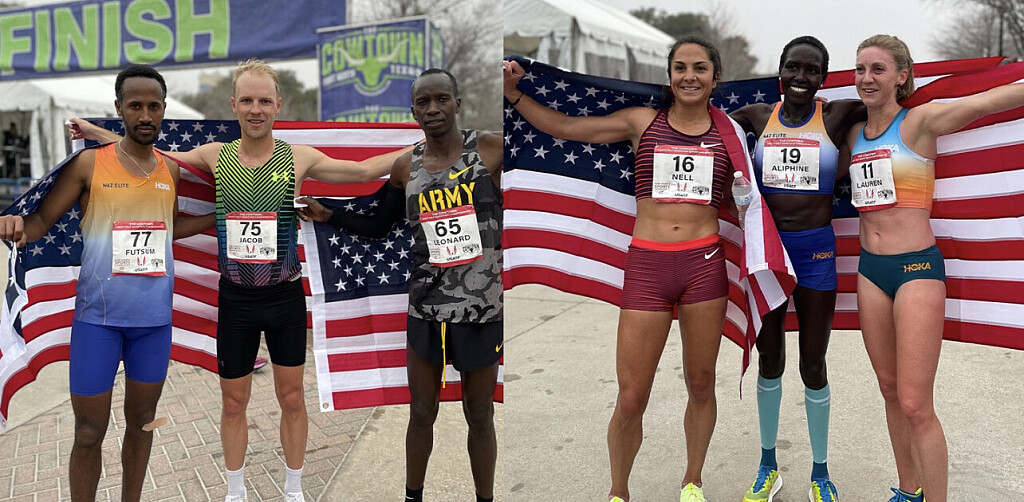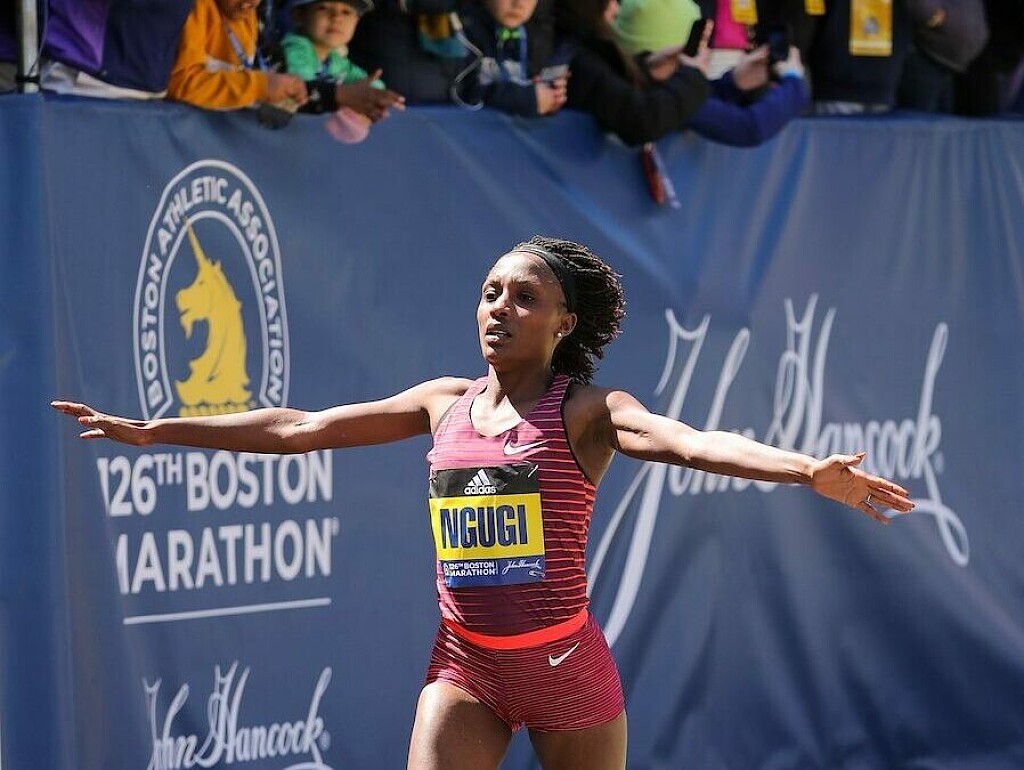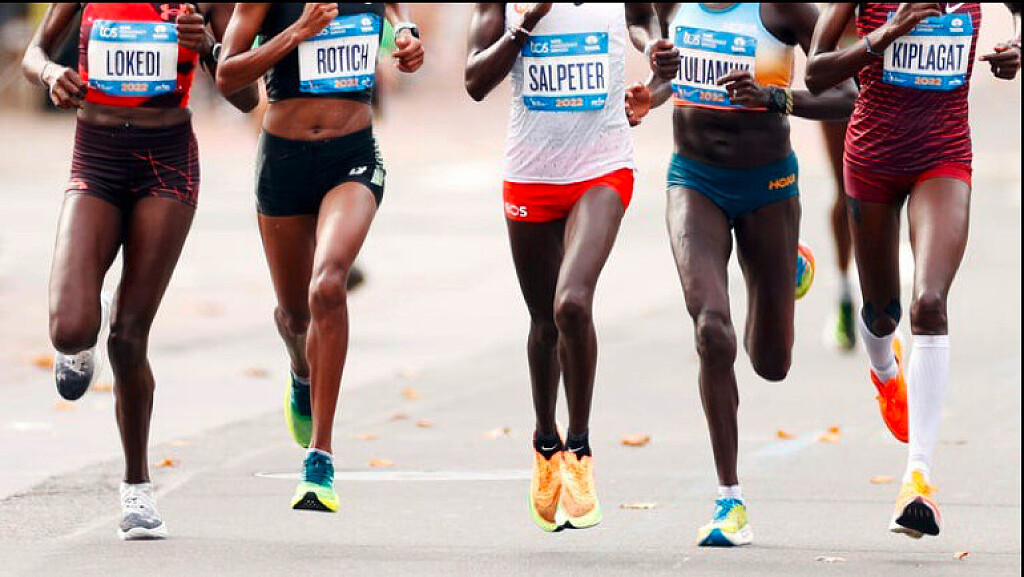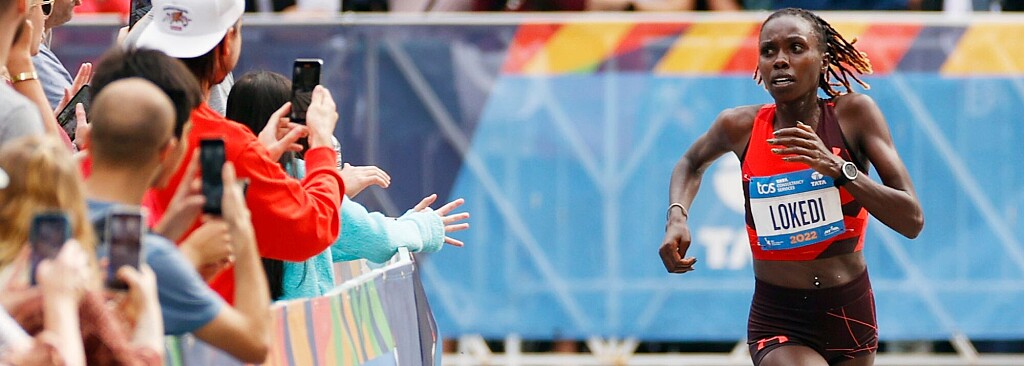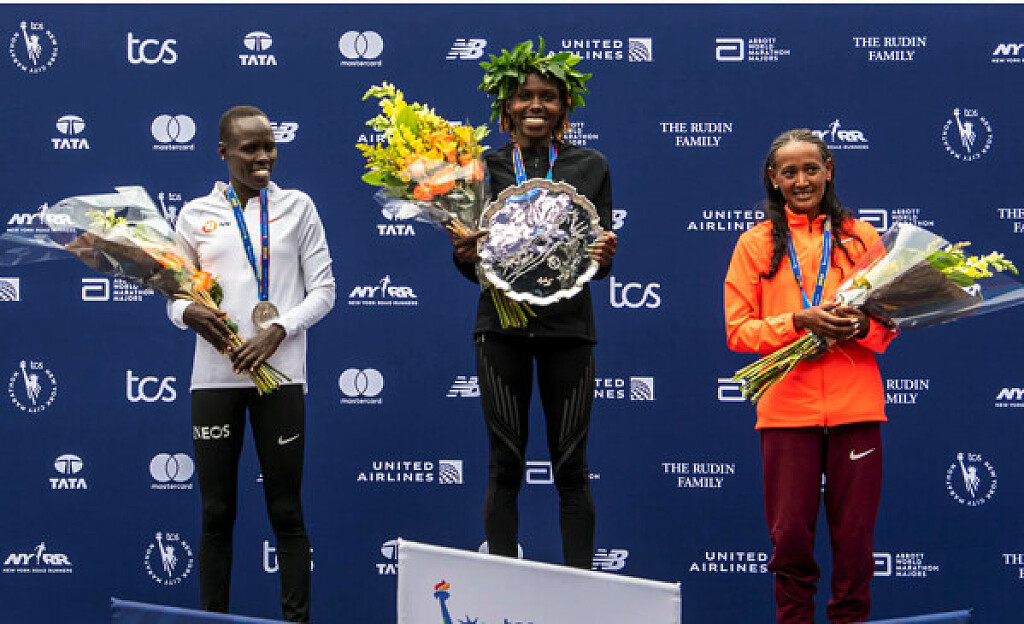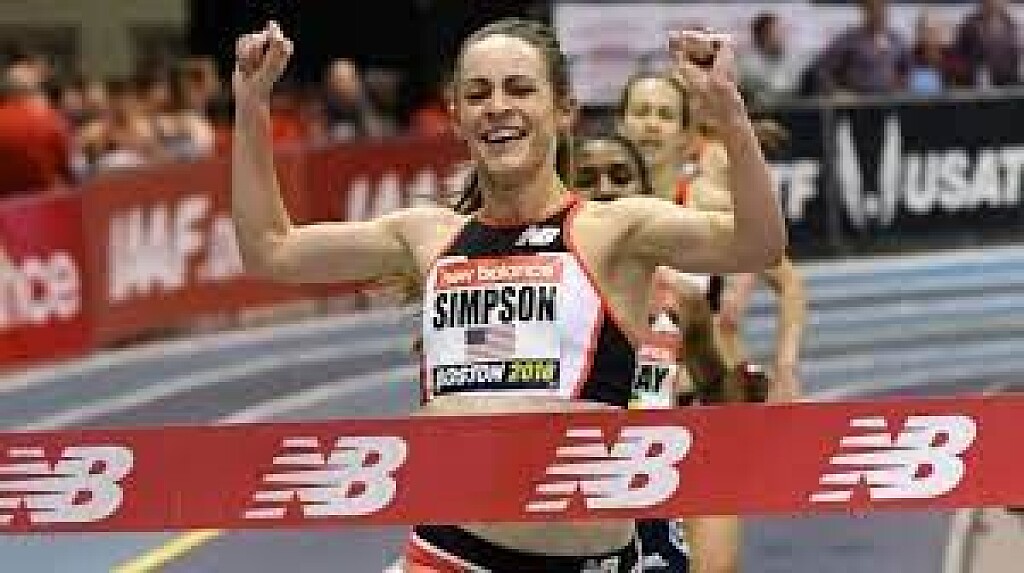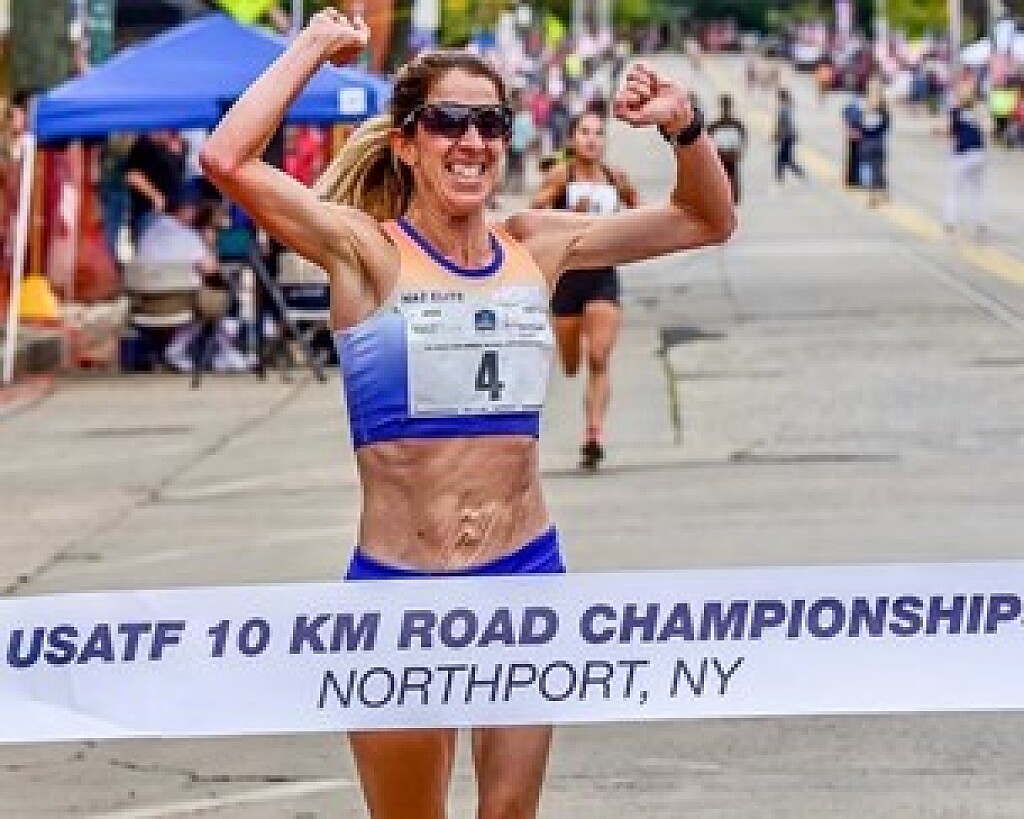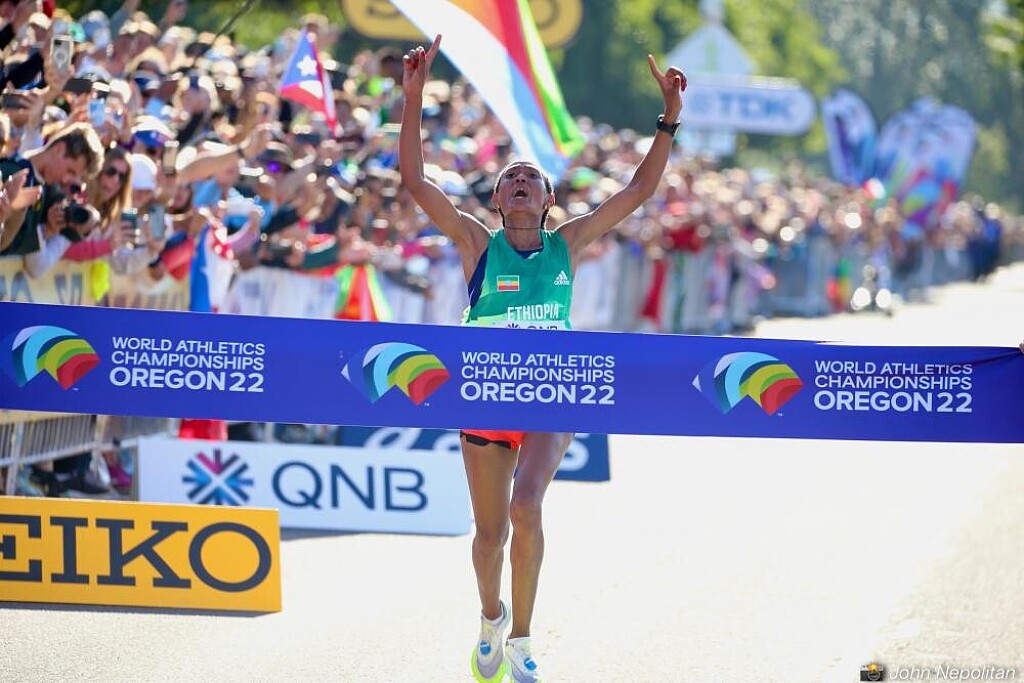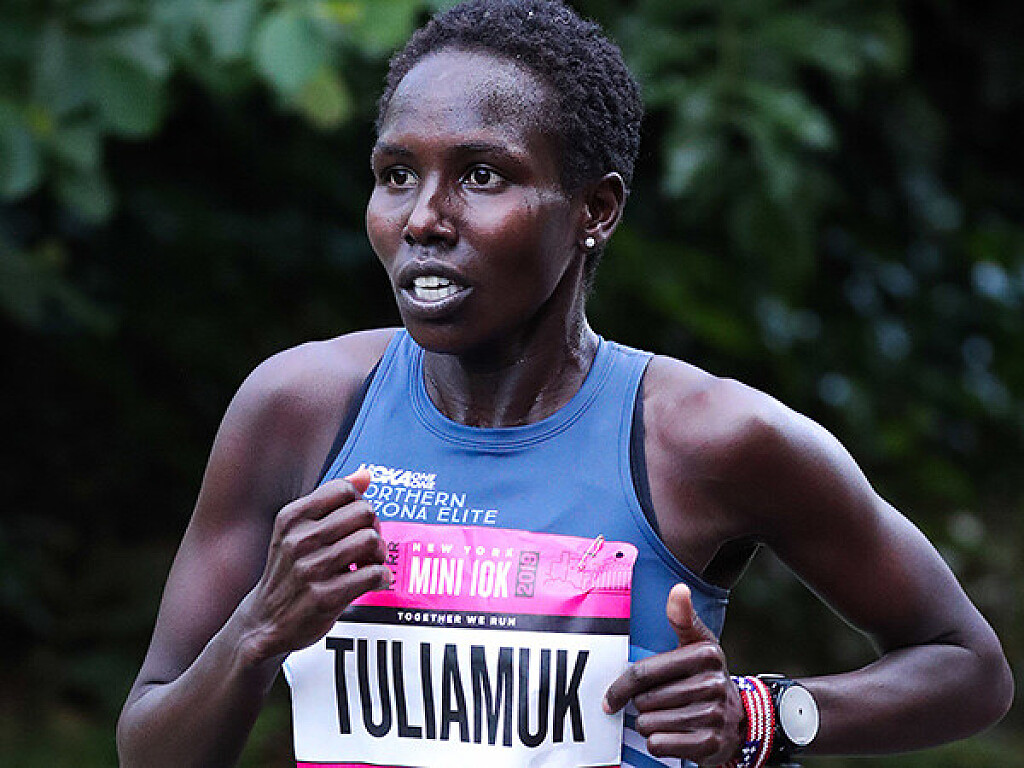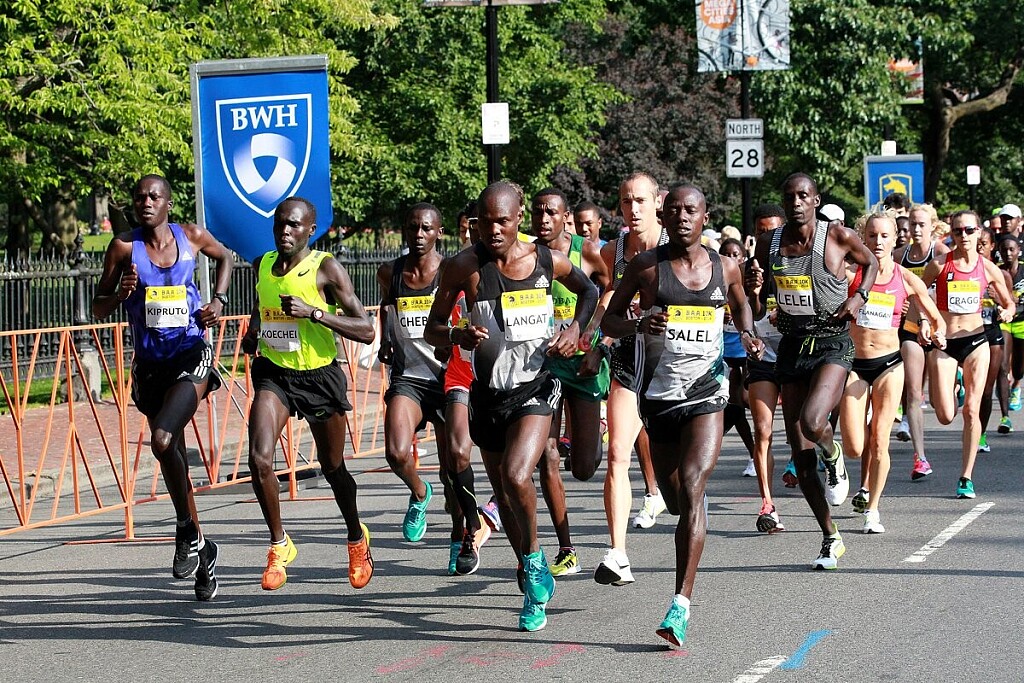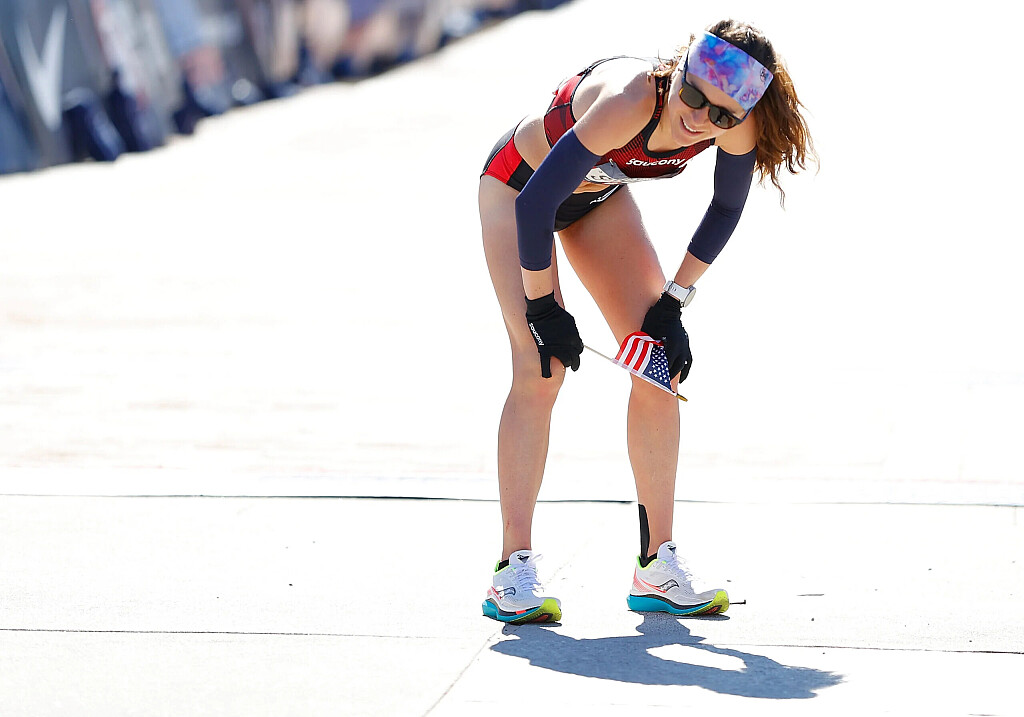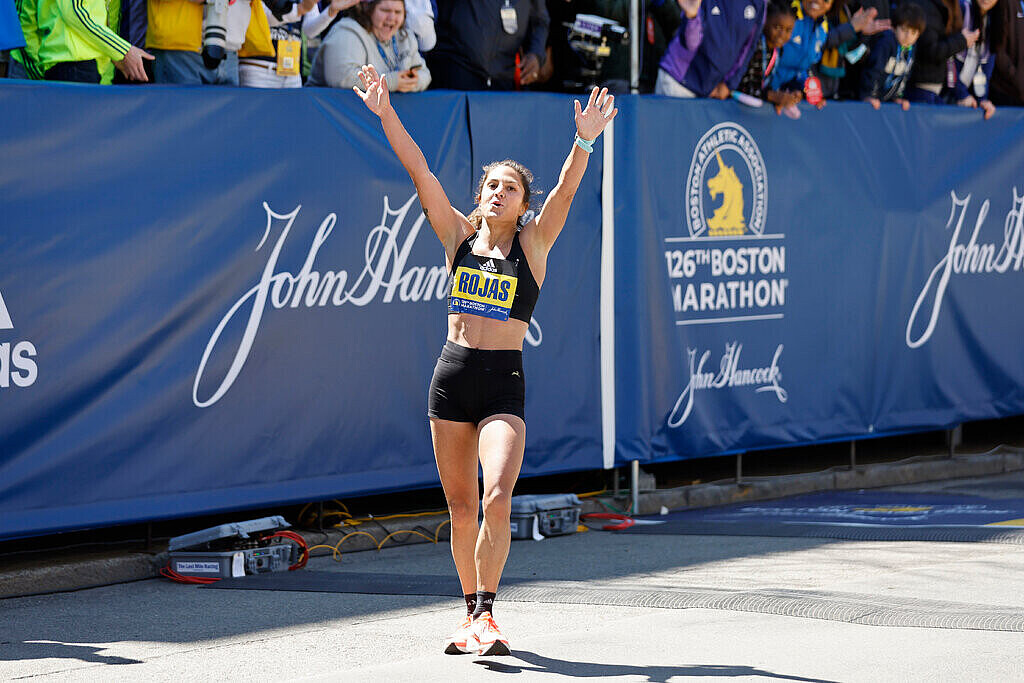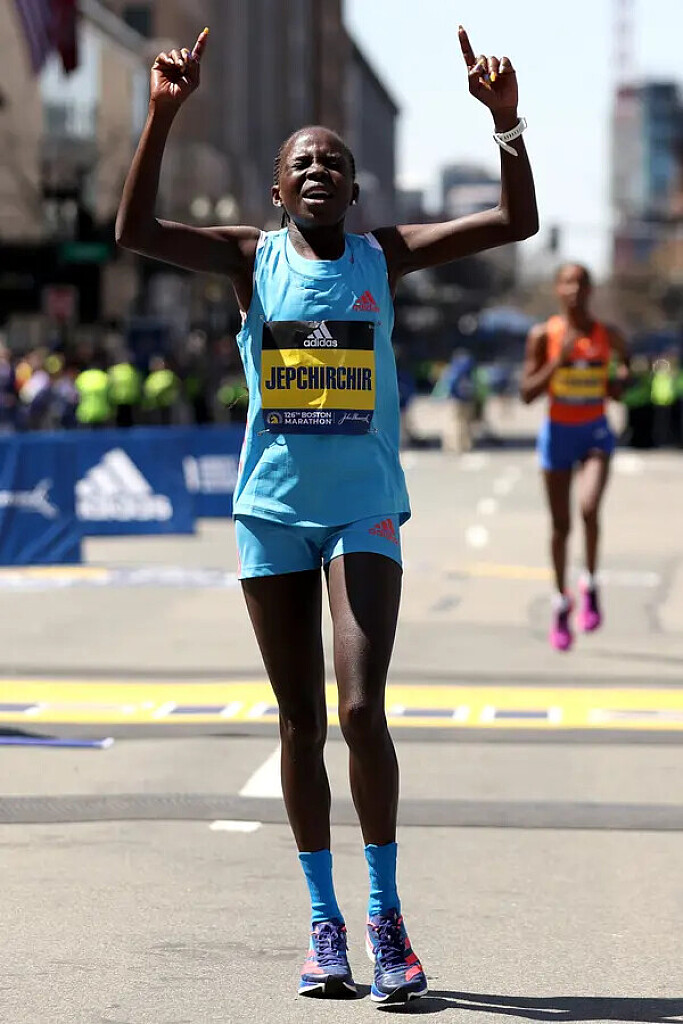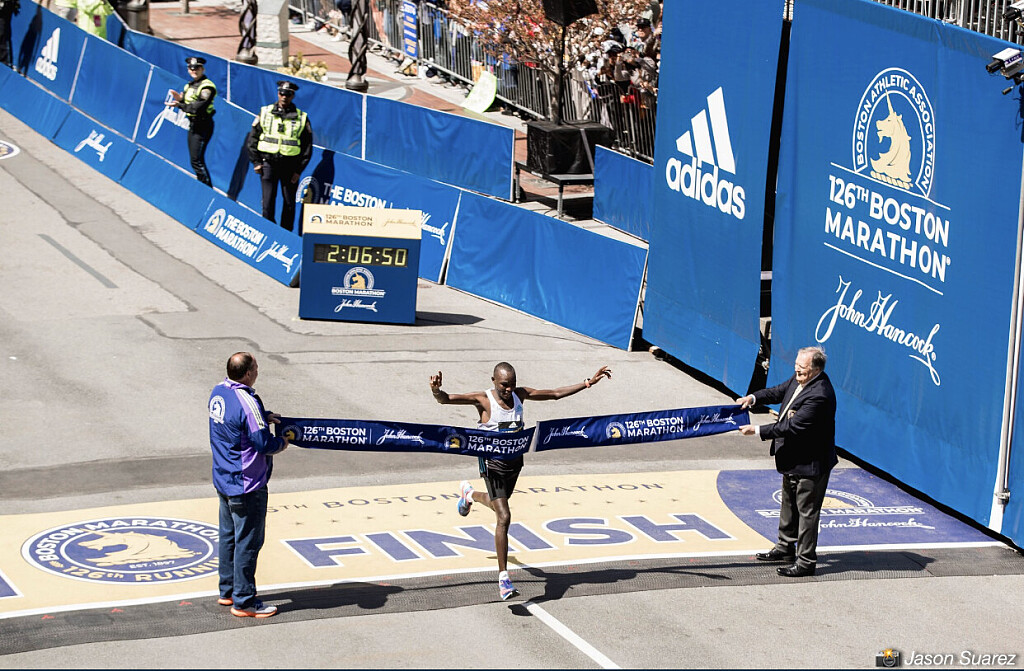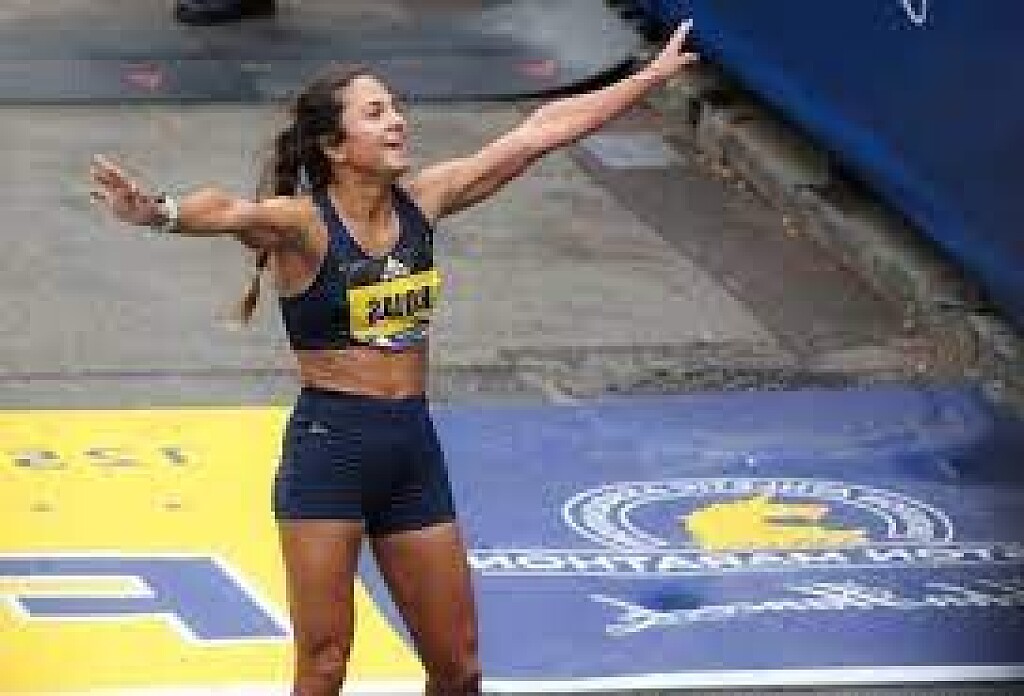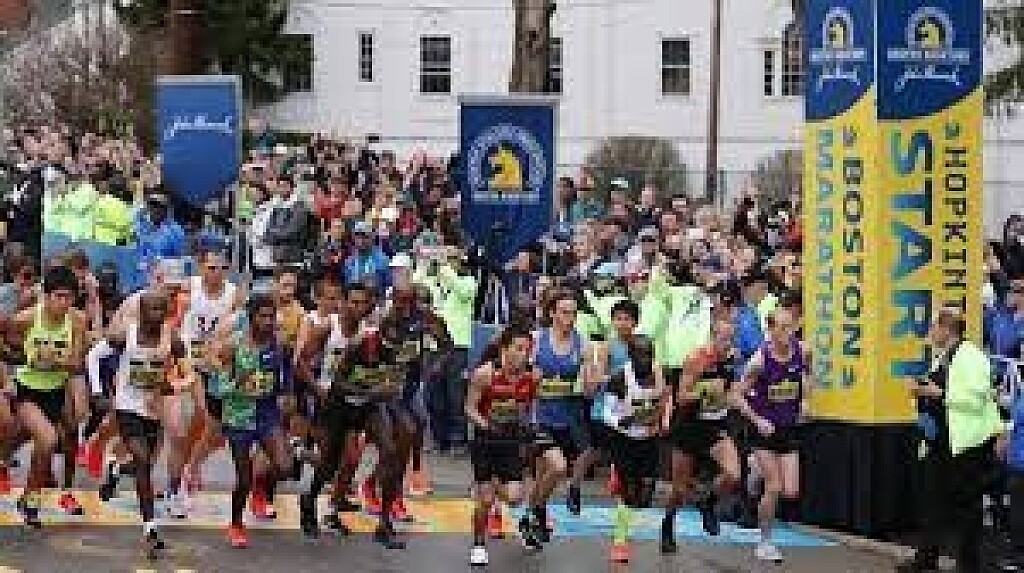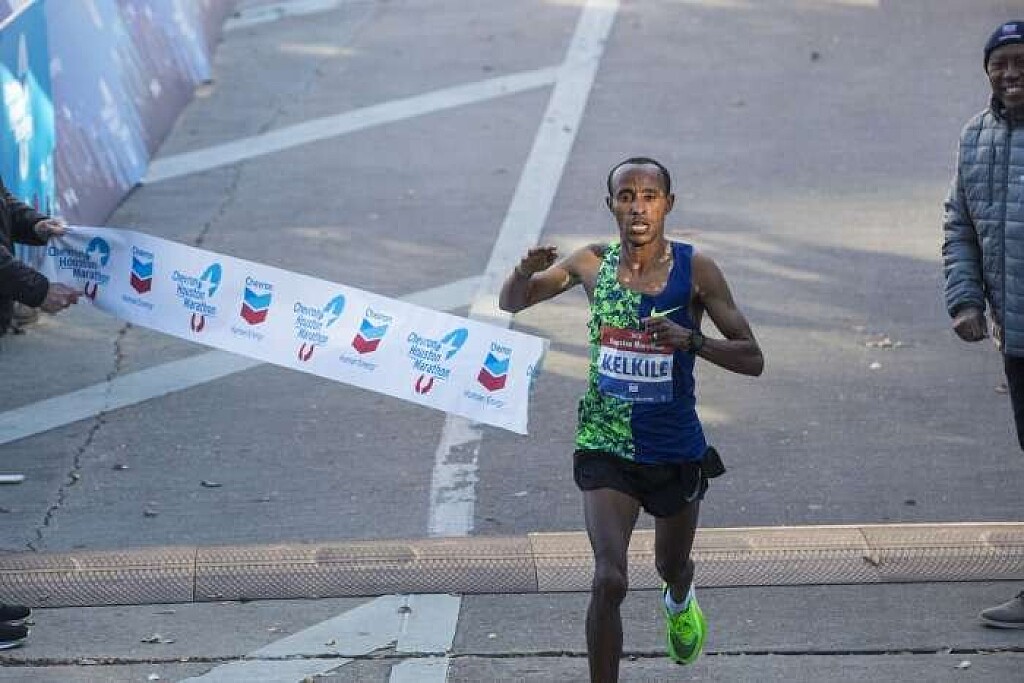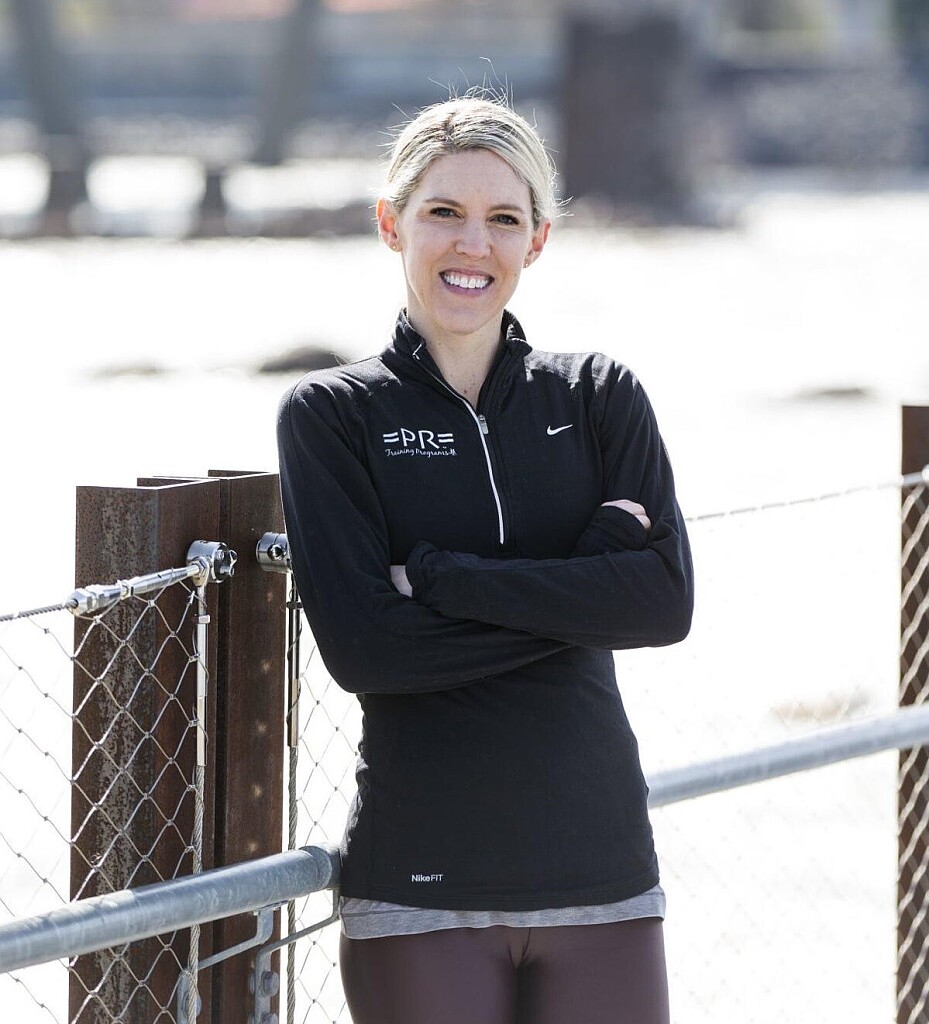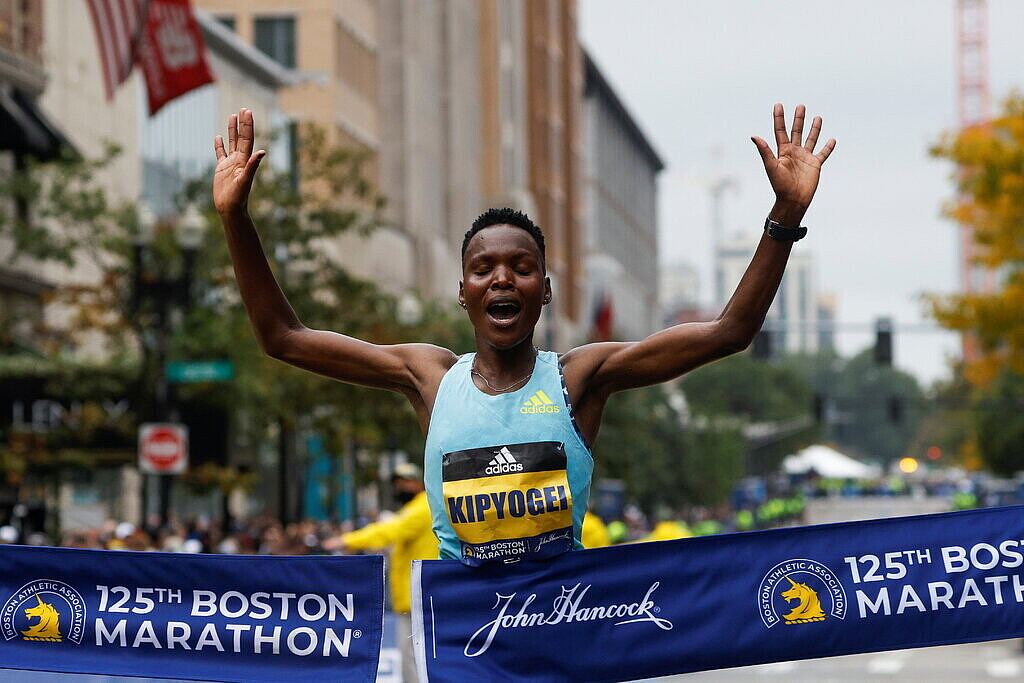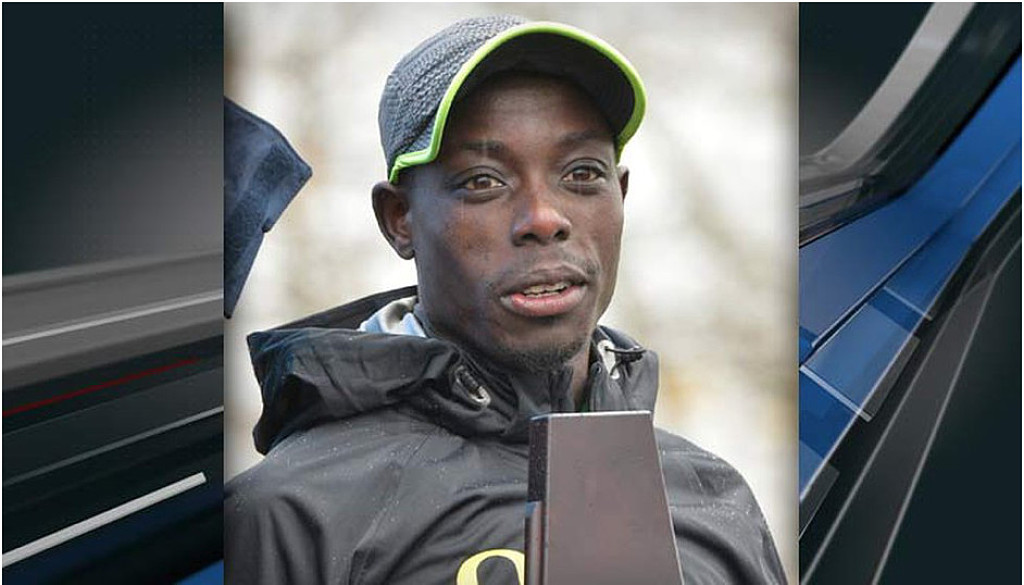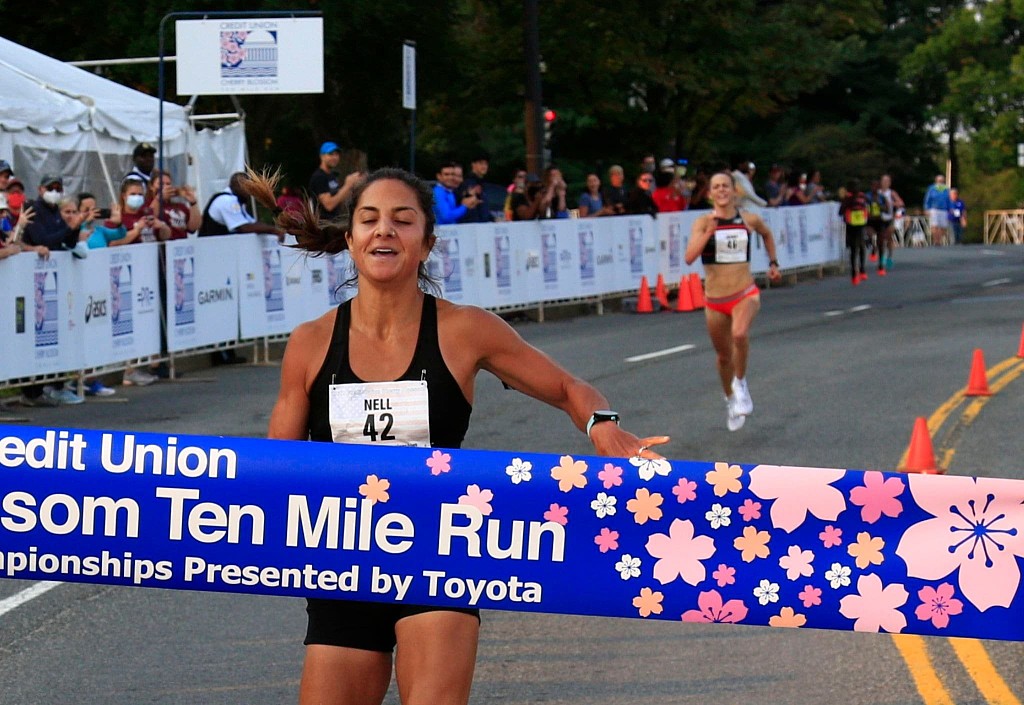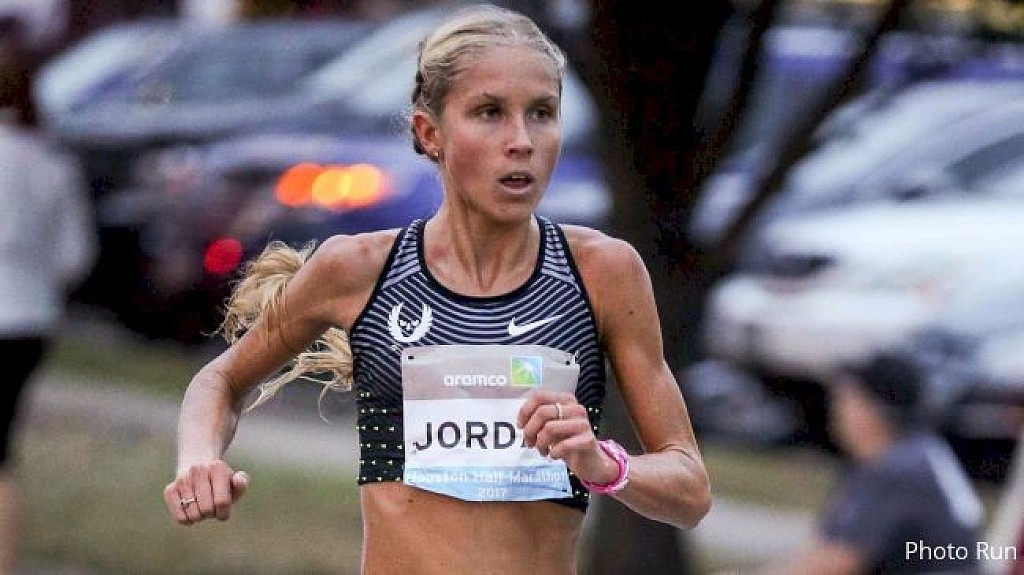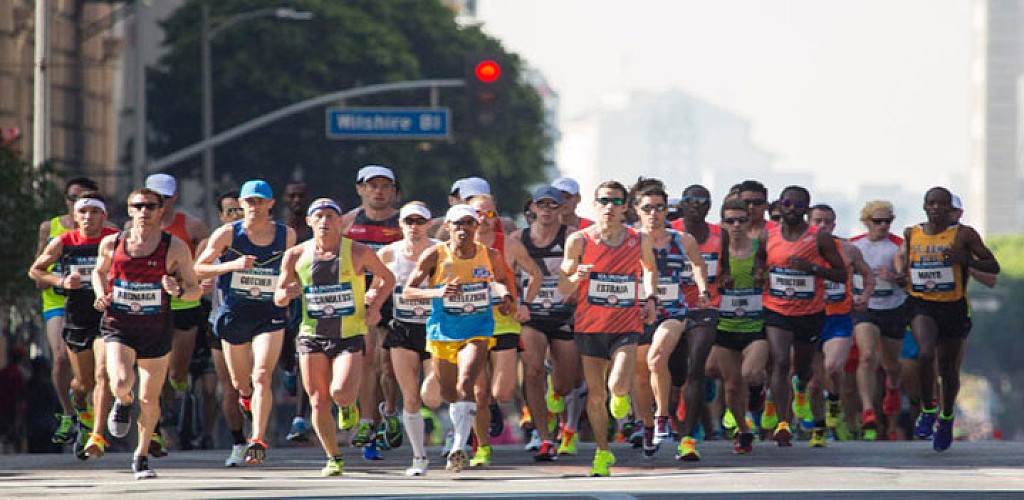Running News Daily
Running News Daily is edited by Bob Anderson. Send your news items to bob@mybestruns.com Advertising opportunities available. Train the Kenyan Way at KATA Kenya and Portugal owned and operated by Bob Anderson. Be sure to catch our movie A Long Run the movie KATA Running Camps and KATA Potato Farms - 31 now open in Kenya! https://kata.ke/
Index to Daily Posts · Sign Up For Updates · Run The World Feed
Articles tagged #Nell Rojas
Today's Running News
What the elites eat: Marathon Edition
Curious about what elite marathoners eat to fuel their peak performance? From carb-loaded pre-race meals to post-race burger feasts, here’s an inside look at what the elites eat before, during, and after a marathon.
As runners and human beings, we’re naturally curious, slightly nosy people. With information instantly available with the twitch of a finger across our iPhone screens, this curiosity has never been easier to satisfy. Plus, many of our favorite runners are more transparent than ever about their training blocks, pulling back the blinds through social media to show what it takes to be the best. Which is why we’re ever-fascinated by the race-related nutrition strategy of elite runners, who often perform at superhero-like levels.
We asked a few elite marathoners what they eat surrounding race day—pre-race dinner, pre-race breakfast, and post-race celebration—so you don’t have to.

Note: One sentiment echoed among all of the athletes interviewed was that their diets are personal and have gone through lots of trial-and-error to be finessed to their specifications. No lifestyle should be replicated exactly.
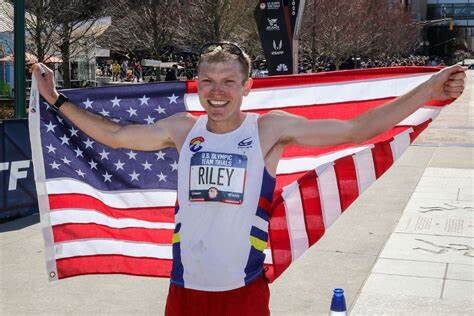
35, Boulder, Colorado
About him: First American and ninth overall finisher in the 2019 Chicago Marathon (2:10:36). Placed second at the 2020 U.S. Olympic Trials Marathon (2:10:02); Finished 28th in Tokyo Olympics marathon (2:16:26). After a second round of double Haglund’s surgery in 2022, he’s back in top form and running the 2024 New York City Marathon on November 3.
The night(s) before a race:
“I start thinking about meals two nights out, and I go carb-heavy on both. For the first night, I like to have Thai food, usually a noodle dish, and a side of rice. The only thing I’ll really avoid is spice since I’ve had issues from it a couple times. The night before, I do pasta, usually a marinara (that’s what a lot of races provide for the elite athletes), but a good pesto sauce works well, too. I mostly stay away from the creamy sauces. I don’t like to get too much more specific—you never know exactly what’s going to be available, so I try not to make particular foods part of my routine.”
Race morning:
“Race mornings I’ll get up at least three hours before (I prefer four, but with 7 to 8 A.M. starts, that becomes a little counter-productive), I’ll go for a short walk with some skipping or something, just to get the body moving. My first choice for breakfast is oatmeal with peanut butter, honey, and a little fruit mixed in. And at least one, usually two cups of coffee. It’s not something to avoid, but I recommend making sure that you have more than just simple carbs (cereal, muffin, etc), I find that if there isn’t at least some protein, I start getting that ‘empty’ feeling during my warmup, and if that mixes with the adrenaline, I feel real queasy. If I’m taking gels, I take one on the start line, maybe five minutes before. I also like Generation UCAN, which I’ll sip as I’m going through my drills, maybe half an hour out.”
During the race:
“I like to get my calories from gels and have just electrolytes in my bottles. Most major marathons provide drink stations every 5K, and I’ll drink about 8-10 oz of SOS per bottle (there can be splashing, and you never get it all out). I’ll take Roctane gels before every other drink station (every 30 minutes or so).”
Post-race meal:
“Most races I want a hash—lots of potatoes with some eggs, bacon, cheese, and veggies all mixed up, but after marathons my stomach takes a while to settle down, so I’m more in a lunch mood. So my go-to post-race meal is a big bistro bacon cheeseburger, ideally with an onion ring and barbecue sauce, side of fries, and a beer. I mostly stay away from fried foods during a build up, but I always take at least a week off after a marathon and at this point, that beer and burger is almost a Pavlovian ‘vacation time’ signal for my whole body.”
41, Flagstaff, Arizona
About her: She’s the fourth-fastest American woman in history based on her personal best (2:20:2) at the 2020 Marathon Project; Second-fastest American female half-marathon runner and former American record-holder (1:07:15). Most recently, she was 18th overall and the women’s master champion in the 2024 Chicago Marathon (2:30:12).
The night(s) before a race:
“Rice with chicken. I skip the veggies to not risk having to make a bathroom stop in the race.”
Pre-race breakfast:
“Two scoops of UCAN energy powder with whey protein, and a little bit of almond butter.” Bonus, Hall credits her husband, Ryan Hall, as being the best coffee maker, brewing pour-over, medium roast coffee blended with butter.
During the race:
Ketone-IQ—peach flavored.
Post-race meal:
“My favorite post-meal race is Thai food. I’m usually eating a lot of boring food before the race, so I want something spicy and more flavorful after.”
Bonus—Lunch during training blocks:
“Two scoops of UCAN powder, two pieces of gluten-free bread with Kerrygold Butter.”
36, Boulder, Colorado
About her: Won the 2019 Grandma’s Marathon and finished ninth in the 2020 U.S. Women’s Olympic Trials Marathon in 2:30:39. She was the top American finisher in the Boston Marathon in 2021 (fifth, 2:27:12, ) and 2022 (10th, 2:25:57). In January, she placed ninth in the Houston Half Marathon in a new personal best of 1:08:52.
The night(s) before a race:
“I always have the same thing. Basically, a couple cups of white rice and a chicken breast is where I tend to fall. White rice is going to fuel the most carbs per serving. I used to mix up potatoes and white rice, but for me, I digest white rice well, I feel better, it’s easy to find, simple, and works well.
I don’t care about spices—and I’m usually not making it myself if I’m not at home. Typically, before races, there’s a pre-race dinner, and chicken is an option. I wouldn’t do any cream-based sauces. If it tastes good, great. If it doesn’t, great. I don’t care.”
Pre-race breakfast:
“Typically it’s oatmeal with a tablespoon of peanut butter, a banana, and maybe honey. I’m not 100 percent satisfied with my pre-race meal, because sometimes it can feel a bit heavy in my stomach, because oatmeal does have some fiber. So I try to play around with things. Sometimes I’ll do a couple pieces of toast with a banana and peanut butter. I can switch between those two. Try to get 500-600 calories in, mostly from carbs, two-three hours before the race. Plus, I drink coffee with half-and-half.
Post-race meal:
“Immediately after the race, I honestly will grab whatever is available. Typically, after a race, we’ll be shuttled to a post-race holding area where you’re waiting, so there are usually refreshments there. I’ll slam Gatorade—anything with sugar and electrolytes. Maybe there’s my own bottle with Skratch in it. Banana, a protein shake. I’m pretty open, as long as it’s immediate.
And as far as later, it completely depends. I’m trying to do a better job at this—especially after a major marathon—but it kind of takes a while. You might get drug-tested, then shuttled back to your hotel, shower, then six hours later you’re like, ‘I need to eat.’ If it’s a marathon, I love a big burger with fries—the classic stuff, lettuce, tomato, onion, and tons of ketchup and mayo. That’s something my body would crave. Fries are my favorite food ever that I don’t typically eat during a marathon cycle.”
35, Louisville, Colorado
About her: Finished sixth in the 2017 London Marathon (2:25:38), seventh in the 2019 New York City Marathon (2:28:23), eighth in the 2019 Chicago Marathon (2:29:06), eighth in the 2021 New York City Marathon (2:27:00). Most recently, an Achilles injury forced her to pull out of the 2024 Chicago Marathon days before the race.
The night(s) before a race:
“I do 72-hours of carb-loading. So, obviously, in the build to that, carbs are key. Three days out from the race is when I start it. It is always the same. The night before, I have pasta with marinara sauce, and I don’t do a lot of protein with that. I do love angel hair, that’s my go-to. I also like rigatoni. Plus, I’ll have some type of bread and salad.”
Pre-race breakfast:
“The morning of, I always do a plain bagel and peanut butter with a banana. I’ve done that since high school. And I do an Americano with two shots. I eat that threeish hours out from the race.
During the race:
“I’ll take my first gel 15 minutes before the start of the race. I’ve been all over the place with what I take, but right now, Neversecond. Big fan of their Cola C30 gels. They worked wonders for me during this build. I had some stomach issues earlier in the build with long runs and couldn’t quite figure out what was going on, so I switched up my nutrition during, so never second has been a godsend.”
Post-race meal:
“After the race, it’s hard because usually my stomach is a mess. Not only did you just run really hard for two and a half hours, but you’re taking all this fuel during, so I have a really hard time eating solids immediately after the race. My choice if I can get it is soda. I’m not a big soda drinker, but after a marathon, all I want is a Coke, Sprite, or Ginger Ale. I’m always really thirsty when I finish.
Then later when I feel like eating, I always do a burger (stacked with all the fixings—sometimes adding bacon) and sweet potato fries with ranch. I never opt out of Ranch. Anything I can dip ranch in is a plus for me. And I order a Blue Moon. I’m not a beer drinker, but that’s what I want after a marathon.”
by Mallory Arnold
Login to leave a comment
Training Load Helps You Find the Balance Between Under and Overtraining—Here’s How to Measure It
Most wearables track this metric, but it goes beyond simply paying attention to stats.
When it comes to running these days, wearables have become a part of the “uniform.” If you sift through race photos, you’ll probably see both recreational and professional runners looking down at their smartwatches at the finish line rather than glancing up to smile at the camera.
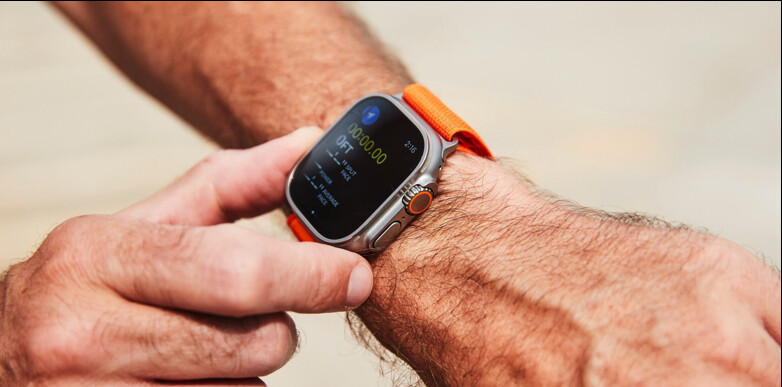
While most smartwatches capture basic metrics such as activity duration, heart rate, pace, and time, not all can measure the physiological effect of workouts over time or what’s known as “training load.” But with the new Apple training load feature, watchOS 11 will join the ranks of Garmin, Coros, and Polar and start providing insights into this metric.
So, if you’re considering buying a smartwatch—or you just want to better track your training and your progress—let’s learn about what training load is and how it can help or hinder your running.
What is training load?
Researchers of a scientific review published in Sports Medicine in 2017 define training load as the stress an athlete experiences after completing physical activities over a certain duration, most often a week. Another way to think about it is how hard you are physically working over time.
Training load is comprised of both an internal and external load. Internal load refers to the physiological and psychological effects of exercise on the body such as heart rate and rate of perceived exertion during exercise. The higher the heart rate or the harder a workout feels, the greater the internal load. External load refers to quantification of the work completed, such as pace and distance.
Sara Manderscheid, RRCA-certified endurance run coach and founder of Elevate Your Running, describes training load as the amount of stress that flows through the body in a training session or training season. “Every day is going to be different,” she says, referring to both the physical and psychological workload an athlete feels with both easy and challenging workouts.
Ric Rojas, head coach of Ric Rojas Running and coach with RISE Running in Boulder, Colorado—and father of pro runner Nell Rojas—highlights that both volume and intensity play roles in understanding an athlete’s perceived exertion. And that perception of exertion helps him determine whether training load is too high or too low. “Language and body language are the most important indices [of training load] that I use on a day-to-day basis,” he explains.
How do wearables measure training load?
Metrics used to estimate training load tend to differ among brands. For example, Garmin uses heart rate to estimate excess post-exercise oxygen consumption (EPOC), the amount of oxygen your body uses to return to homeostasis—a rested, refueled, and recovered state after a workout.
In general, EPOC accumulation is higher for more intense workouts and lower for easy efforts. EPOC measurements over a seven-day period equal your training load for the week. So, the higher your EPOC measurements, the higher your weekly training load.
Both Coros and Polar use training impulse (TRIMP) to estimate training load. TRIMP uses heart rate and workout duration to estimate effort during a workout with higher heart rates presumably reflecting higher efforts and higher TRIMP. Unlike EPOC, TRIMP may not be as reliable in estimating training load for strength training sessions, because it relies on metrics acquired during a workout rather than after.
Unlike Garmin, Coros, and Polar, Apple’s watchOS 11 will not provide a numeric value for training load. Instead, training load will be derived from workout duration and effort scores based upon a rate of perceived exertion scale from 1 to 10 with 1 equating to easy effort and 10 meaning an all-out effort. These scores can be generated automatically for 17 different workout types using an algorithm that incorporates age, height, weight, and performance metrics like GPS data, heart rate, and elevation. Scores can also be self-reported for any workout, a feature that distinguishes watchOS 11 from the rest of the pack.
After 28 days, the watchOS 11 algorithm establishes a training load baseline, and uses it to compare your training load over a seven-day period. The goal is to keep your seven-day training load or estimation of effort close to your 28-day baseline.
Can I use training load to build my workouts?
You certainly can! Many wearables prompt users with recommended workouts to help maintain training within an optimal load. Visual cues and graphics can also help users identify when fitness and fatigue are not balanced, which is an issue because too much fatigue can lead to overtraining, whereas workouts that may not be as challenging may hinder the ability to improve fitness.
Rojas uses heart rate data, pace, perception, recovery, and overall distance in a workout to generate the next workout (or workouts) and avoid overtraining. “I have to keep you healthy,” he comments. “I maintain an optimal training level to allow you to work out again without missing any time.”
To ensure balance in both training and recovery, Rojas also prioritizes an athlete’s perception of their effort during a workout. He will have athletes repeat the same workout every four weeks and evaluate how they felt at the prescribed paces. If the workout feels easier with time, they are likely building fitness. This should also correlate with heart rate: As you become more fit, your heart rate will get lower at the same pace—proof that “the training is taking you to the next level,” he says.
Manderscheid also uses perception more than the numbers, stating that communication is one of the best tools coaches have. “I feel that the mind is such a huge piece to training as a whole,” she says. She also emphasizes that it’s a fine balance of ensuring you do enough to gain fitness but don’t go overboard and set yourself up for injury.
Following Rojas’s and Manderscheid’s advice, you can use training load to schedule your own workouts by paying attention to effort and/or heart rate throughout a workout and throughout your week as a whole. You want a majority of easy efforts (RPE around 5 or 6 and heart rate around 60 to 70 percent) and a few harder efforts, like tempos or interval runs, mixed into your weekly schedule.
Keep in mind, if your typical paces start to feel hard or spike your heart rate, it could be an indication to lower your training load by taking an extra rest day or swapping a tempo run for an easy run. And if your typical paces start to feel too easy, it could mean you can increase your training load by adding more miles, faster paces, or another day of easy running.
Are there any downsides to tracking training load?
Metrics based upon algorithms have their pitfalls and training load is no different. Heart rate is one of the primary determinants of training load so anything that affects your resting heart rate (stress, sleep, etc.) can also influence training load.
Apple’s training load is also dependent on an effort rating system comparing seven-day training load to a 28-day baseline. So, if you rate a tough workout as a very easy effort, your watch will assume you are training below your baseline training load, which may prompt you to increase your effort. If you continue to rate hard efforts as easy, you may set yourself up for insufficient recovery, overtraining, and injury (especially if the workouts weren’t truly easy).
On the flip side, if you rate easy workouts as feeling hard, your watch will suggest you are training above your baseline, prompting you to decrease effort. As a result, you may not see fitness gains, because without a sufficient physiologic stimulus, you’ll likely plateau or lose fitness.
Both Manderscheid and Rojas note that there is incredible potential for over and undertraining when following training load on wearables in isolation for your workouts and progress tracking.
Manderscheid says training load is “one piece of the puzzle,” noting that it is easy for athletes to get bogged down in the analytics of their watch. “Can we stop, pause, and listen to our bodies? If we can connect a little bit more to that mind-body side of things, we are going to be stronger athletes,” she says.
What if you don’t have a wearable? How can you track training load?
If you don’t have a wearable, you don’t need to run out and get one; most of these devices are not cheap. Perceived effort—similar to what the Apple Vitals app is using to generate training load—is a free, easy, and reliable way to determine whether your workout is too easy, too hard, or just right.
Remember: You want a mix of both easy days and hard days on your calendar, without tipping too far in one direction. Both Rojas and Manderschied advise running easy efforts most days and incorporating harder efforts or intensities twice a week as a general guideline.
Manderscheid suggests going a step further than just mentally noting efforts and writing down how you felt at a particular workout. “At the end of the week, take a look, how did you feel: Did you feel good, strong, or terrible? Monitor that. Play around with it and experiment,” she explains.
Numbers are just a part of the puzzle in terms of how you can progress. “Keep the long view in mind,” Rojas says. Patience and perception work together to generate resilient, recovered runners capable of stacking training cycles. You can certainly be one of them, as long as you listen to your body—not just your watch—when it comes to your workout efforts and not going too hard or too easy all the time.
by Runner’s World
Login to leave a comment
Bolder Boulder: Kenya’s Grace Loibach Nawowuna cruises to win in women’s pro race
Emily Durgin came to the 44th Bolder Boulder on Monday to try to defend her title. She had to tip her cap to Kenya’s Grace Loibach Nawowuna, however.
The 20-year-old Nawowuna got off to a fast start and never let up in winning the women’s title of the International Pro Team Challenge. She finished in 32 minutes, 45.3 seconds — the ninth-fastest time in race history and the best since Mamitu Daska of Ethiopia in 2018 (32:36).
“In this race, if you get to mile four and you’re separated, you’re pretty much home free,” said Durgin, who finished fourth, in 33:34.15. “Once she got to mile four, I kind of knew. I mean, that woman is a 29-minute 10K runner.”
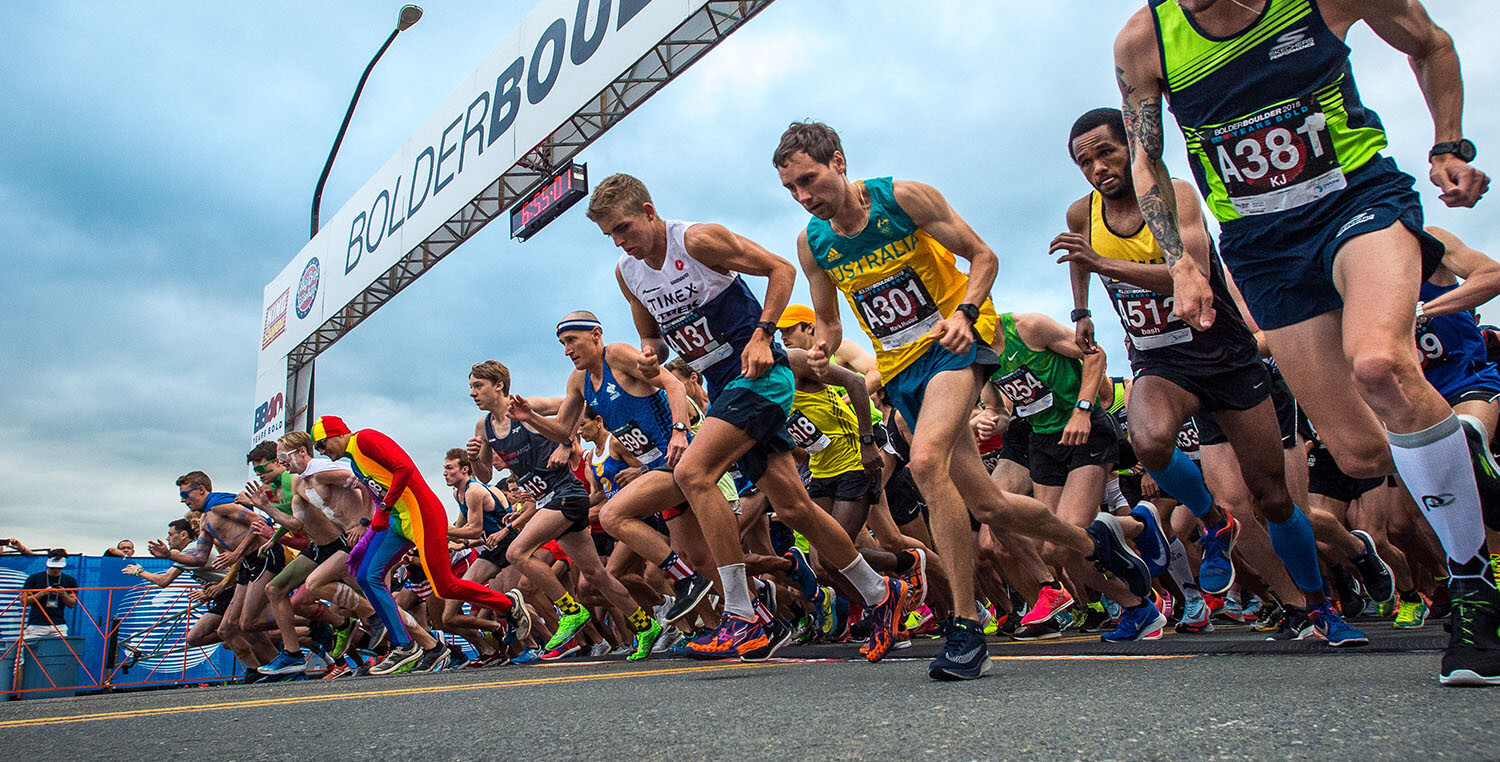
Nawowuna posted a 10K time of 29:47.42 — the 11th-best in history — almost a year ago, on June 3, 2023, in The Netherlands. On Saturday, she was in Eugene, Ore., posting a 10K time of 30:34.86 at the Prefontaine Classic.
Nawowuna didn’t arrive in Boulder until Sunday night. She went to the medical tent immediately after her race and was not available for comment on Monday, but she sent a message with her legs.

She posted the fastest split of the day in the opening mile (4:51) and pulled away quickly. Ethiopia’s Siranesh Yirga was second, in 33:19.60.
“I knew (Nawowuna) was going to be able to go out in 4:40 and it not crush her, whereas all of us going under 5:00 at altitude, it does take a little bit more from us,” Durgin said. “She was honestly like an elite, high level athlete. So yeah, it was fun to at least go head to head with those women.”
Led by Nawowuna, Kenya won the team title for the first time since 2016. She teamed with Sarah Naibei (seventh, 33:53.62) and Daisy Kimeli (ninth, 34:30.96) to score 17 points.
Ethiopia, led by Yirga and fifth-place finisher Mulugojam Birhan (33:48.21), was second in the team standings, with 20 points. The United States team, led by Durgin, was third.
Durgin was only nine seconds off her pace from last year (33:25) but said this year’s race was a tough one, because of the pace set by Nawowuna, Yirga and Mexico’s Anahi Alvarez, who was third (33:25.52).
“It was hard this year,” Durgin said. “It was really windy and (the competitors) spread out really, really early. So, we were all running alone and all had a headwind.
“(Nawowuna) separated herself enough and then (Yirga), she was looking back. I knew she was dying, but we were all dying.
“Every year is a little different.”
Durgin was joined by Sarah Hall (10th, 34:35.19) and Nell Rojas (11th, 35:02.02) on the United States team.
In addition to the USA team, there was a team of University of Colorado alums that placed fourth in the team standings. That group was led by sixth-place finisher Makena Morley, who posted a time of 33:49.64.
Also running for the CU team was Carrie Verdon (eighth, 33:54.69) and Sara Vaughn (15th, 36:32.37).
by The Denver Post
Login to leave a comment
BOLDER BOULDER
In 1979 we dreamt of attracting a few hundred of our friends to race though the streets of Boulder, Colorado to celebrate Memorial Day with our families. Fast forward almost 40 years and the Bolder BOULDER has grown to become one of the largest and most highly acclaimed 10K’s in the world. Almost 1.2 million runners, joggers, walkers and spectators...
more...U.S. Olympic Marathoners Will Race the Bolder Boulder 10K as a Pre-Paris Tune-Up
Conner Mantz, Clayton Young, and Leonard Korir will run in the International Pro Team Challenge on May 27.
Memorial Day is always an exceptional celebration for runners in Boulder, Colorado, but this year, it will have some extra special Olympic flair.
On Monday, May 27, more than 40,000 runners will run through the city that’s known for the iconic Flatirons rock formations, the Pearl Street pedestrian mall, and an exceptionally active population in the annual Bolder Boulder 10K. Now in its 44th year, it’s been one of the top road running races in the U.S. since its inception, and this year will serve as one of the final tune-ups for the men’s U.S. Olympic marathon squad before racing in the Paris Olympics later this summer.
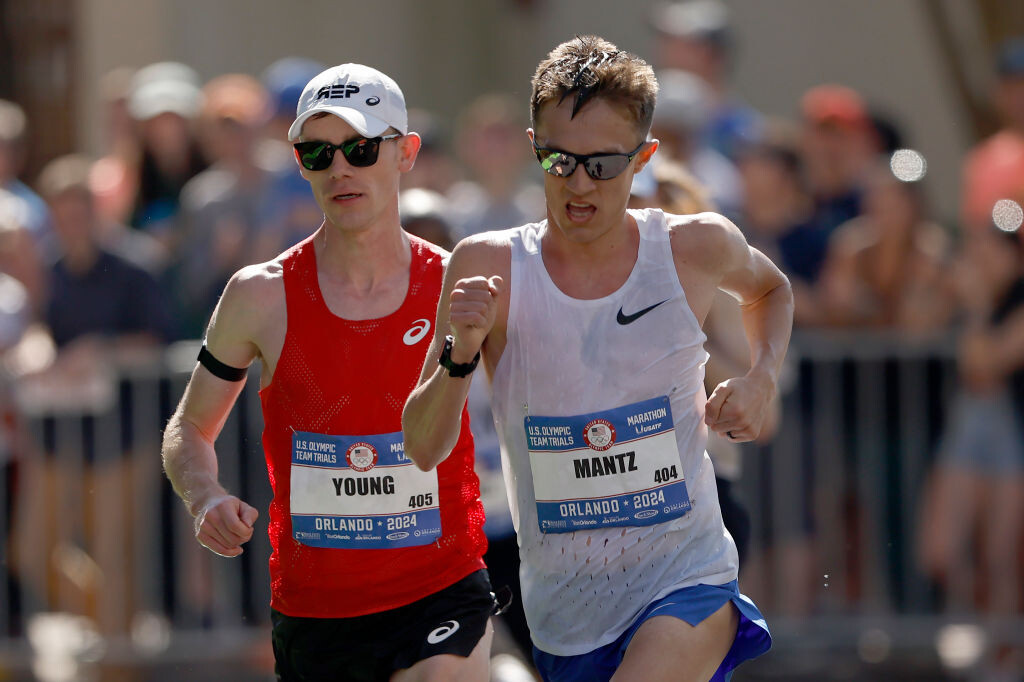
Conner Mantz, Clayton Young, and Leonard Korir, the top three finishers in the 2024 U.S. Olympic Trials who will be racing the marathon in the Paris Olympics on August 10, will be competing as Team USA Red in the Bolder Boulder’s International Pro Team Challenge that follows the citizen’s races. (Korir is expected to officially be named to the U.S. team in early May based on final pre-Olympic international rankings.)
The pro race, which has a prize purse of $83,700 before potential bonuses, is one of the things that makes the Bolder Boulder so unique. After all the runners in 98 citizen waves have completed the race, professional men’s and women’s international teams from more than a dozen countries compete on the same course for team and individual titles. The races feature a staggered start, with women beginning 15 minutes before the men so the winners of each race will finish about 10 minutes apart inside the University of Colorado’s Folsom Field football stadium.
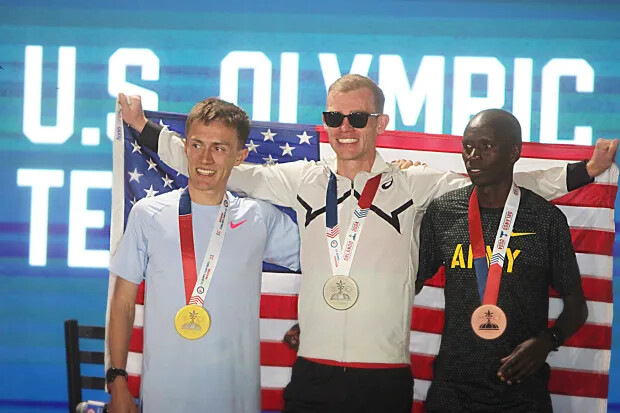
The finishing moments are among the thrilling spectacles in American running. By that point, the stadium is filled with a near-capacity crowd of roaring runners, family, and friends who have been watching the action play out on the massive video screens.
“The finish in the full stadium is like nothing else in the sport,” says Mantz, 27, who won the men’s race last year in 29:08 with a thrilling late-race surge to pass Kenya’s Alex Masai in the final 200 meters before the finish. “It was pretty electric. It took away all the pain you’re feeling mid-race. I was like, ‘Just race as hard as you can.’”
Team USA Red will have plenty of competition, from Team USA White, the secondary American team of Jared Ward, Futsum Zienasellassie, and Sam Chelanga, as well as teams from Kenya, Ethiopia, Mexico, and Rwanda. Teams are scored like a cross country race, with points awarded on the basis of finishing place, which means the team with the lowest combined score for all three runners is the winner. Ties are decided by the positions of the third-place finishers.
The women’s Team USA Red team will be led by defending champion Emily Durgin, along with Sara Hall and Boulder native Nell Rojas. Durgin finished ninth at the U.S. Olympic Trials in February and won the USATF 10 Mile Championships on April 7 in Washington D.C. At last year’s Bolder Boulder, she stormed to victory in 33:24, winning by 24 seconds over Kenya’s Daisy Kimeli.
Hall placed fifth in the U.S. Olympic Trials Marathon on February 3 in a U.S. master’s record (2:26:06) and 15th in the Boston Marathon on April 15. The women’s Team USA White roster will be composed of an all-University of Colorado alumnae squad—Makena Morley, Sara Vaughn, and Carrie Verdon.
“I can’t wait to be back in Boulder for the best day of the year,” says Durgin, 29, who will compete in the U.S. Olympic Trials 10,000 meters on the track in late June with the hopes of making the U.S. Olympic team. “Competing with Nell and Sara will make the experience even better.”
The women’s U.S. Olympic marathon team of Fionna O’Keefe, Emily Sisson, and Dakotah Lindwurm were invited to race in the Bolder Boulder but each runner declined, citing scheduling timing conflicts or a disinterest in racing at Boulder’s lofty altitude (5,430 feet). All of the runners who are racing for the U.S. teams in Boulder live at 4,500 feet or higher.
An Olympic Legacy
Boulder is known as one of the top running meccas in the U.S., in part because elite-level American and international runners have made it their training base since Olympic gold medalist Frank Shorter arrived in the early 1970s. Emma Coburn, Jenny Simpson, Yared Nuguse, Joe Klecker, Jake Riley, Hellen Obiri, and Edna Kiplagat are among the many top-level runners who are currently training in Boulder. Shorter, the 1972 marathon gold medalist, was a co-founder of Bolder Boulder 10K in 1979, and helped it grow into one of the country’s largest races.
Since then, numerous U.S. Olympians have raced in the Bolder Boulder, including Deena Kastor (a three-time women’s champion), Aliphine Tuliamuk (the 2022 women’s winner), Alan Culpepper, Elva Dyer, Ryan Hall, Abdi Abdirahman, Jorge Torres, Shalane Flanagan, Amy Cragg, Magdalena Boulet, and Libby Hickman, as well as Korir (who won it in 2022), and Ward (who was fourth in 2022).
Thanks to Boulder’s robust running community and the prestige of the race, the Bolder Boulder has also always featured fast sub-elite runners competing in the early citizen waves. Yet, the race has also celebrated dedicated middle-of-the-pack runners, as well as the first-time runners and walkers in the later waves. It was one of the first races to have bands playing along the course (as well as belly dancers and other entertainers), runners dressed up in costumes, elite wheelchair races, and in recent years, it has been known for a mid-race slip-and-slide and unofficial bacon aid station.
For the past 25 years, the Bolder Boulder has organized a special Memorial Day tribute—one of the largest in the country—that honors military veterans and new cadets.
The U.S. men’s Olympic marathon team competing in this year’s Bolder Boulder will be a legacy moment for the race, says Bolder Boulder race director Cliff Bosley.
“Having the three men that will represent our country in the marathon at this summer’s Paris Olympic Games is something we are extremely proud of,” Bosley says. “All three ran here last year, and to have them back is just incredible for the race, the city of Boulder, and the sport of running.”
by Brian Metzler
Login to leave a comment
More Than 100 Professional Athletes to Race Boston 5K
Fast fields featuring Olympians, Paralympians, rising stars, and recent B.A.A. event winners will take center stage at the Boston 5K presented by Point32Health and B.A.A. Invitational Mile on Saturday, April 13. The deepest professional field in race history will include more than 100 accomplished athletes from 19 nations, set to square off for prize money and awards in the open, wheelchair, and Para Athletics Divisions.
“More than 40,000 athletes will take part in B.A.A. races across Boston Marathon weekend,” said Jack Fleming, President and Chief Executive Officer of the B.A.A. “Saturday’s Boston 5K and B.A.A. Invitational Mile fields feature some of the fastest American and international stars, many who are aiming to compete at the Olympics and Paralympics in Paris.”
A new champion will be crowned and the stage is set for another close race at the Boston 5K. Ben Flanagan (Canada), Edwin Kurgat (Kenya), and Alex Masai (Kenya) – all top-five finishers a year ago – will return. They were at the front of an exciting finish a year ago that saw the top 13 men come across the line within ten seconds of the winner.
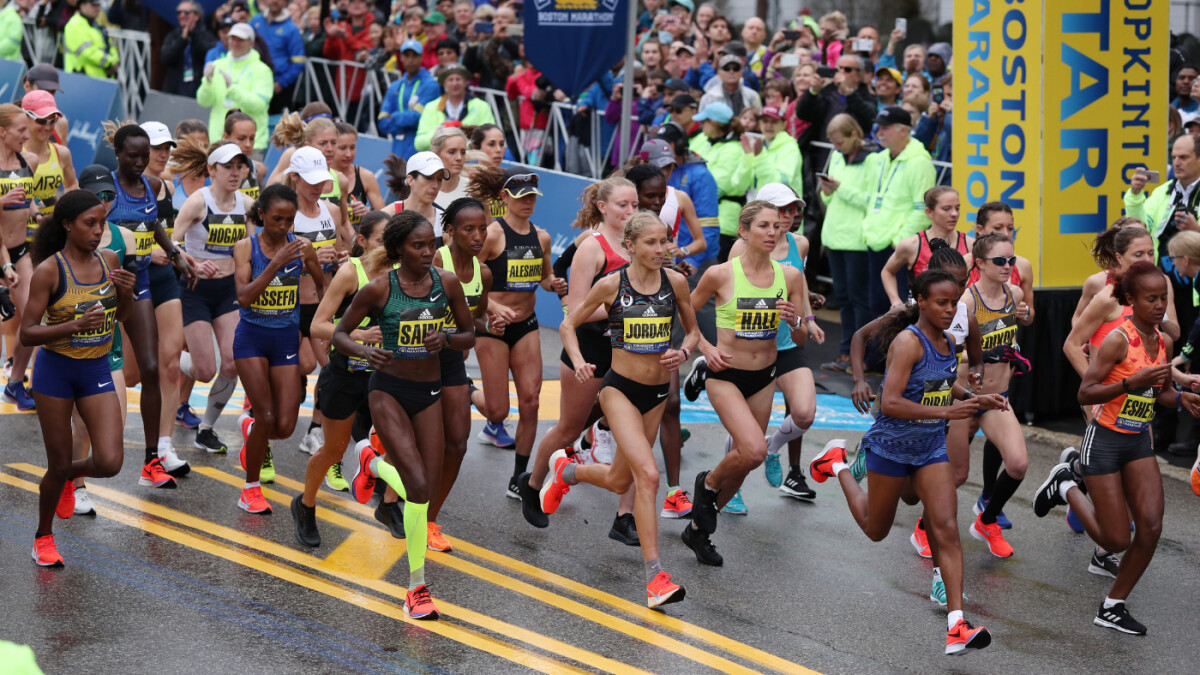
Top Americans Cooper Teare, Zach Panning, and Drew Hunter look to be at the front of the field. Teare is the reigning U.S. club cross country national champion, while Panning led a majority of February’s USA Olympic Team Trials – Marathon and Hunter is a former national champion indoors at 2 miles. B.A.A. High Performance Team members Eric Hamer and Barry Keane will be racing their hometown event.
Also on the start line will be Ben Kigen, an Olympic steeplechase bronze medalist in 2021; Simon Koech, last year’s Diamond League winner in the steeplechase; and Merhawi Mebrahtu, the 5,000m World Junior Championships silver medalist. Ethiopians Getnet Wale and Addisu Yihune are the two fastest men in the field, having gone sub-13:00 on the track for 5,000 meters.
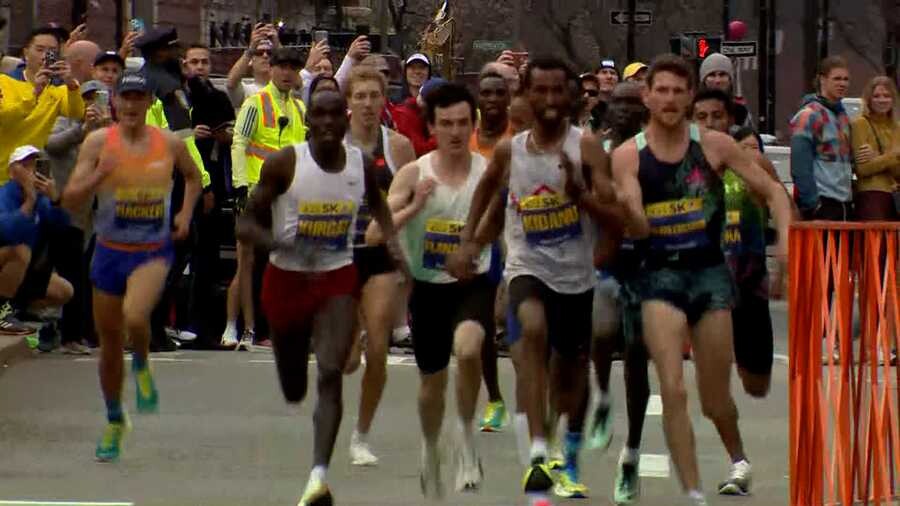
Leading the women’s field is USATF 5K National Champion and B.A.A. High Performance Team member Annie Rodenfels. Joining her are 2024 Team USA Olympic marathoner Dakotah Lindwurm, former American marathon record holder Keira D’Amato, perennial top-American Boston Marathoner Nell Rojas, as well as Team B.A.A. runners Abbey Wheeler, Bethany Hasz Jerde, and Megan Hasz Sailor.
Uganda’s Sarah Chelangat, the Cherry Blossom 10 Mile champion in 2023, and Mercy Chelangat, a former NCAA Cross Country and 10,000m winner, are both entered. Reigning B.A.A. Half Marathon champion Fotyen Tesfay of Ethiopia also comes back to Boston seeking another win.
In the wheelchair division, course record holder and six-time Boston Marathon champion Marcel Hug (Switzerland) will square off against Americans Daniel Romanchuk and Aaron Pike. Brazil’s Vanessa de Souza – the 2018 Boston 5K winner – is the women’s wheelchair division favorite. Perennial Para Athletics Division contenders El Amine Chentouf (T12, vision impairment), Brian Reynolds (T62, lower-limb impairment), and Marko Cheseto (T62, lower-limb impairment) will vie for prize money and podium placings. This will be the largest professional Para Athletics Division field in event history.
Nearly 10,000 participants will take part in the Boston 5K, serving as the first race of the 2024 B.A.A. Distance Medley series.
KRISSY GEAR LOOKS TO REPEAT IN B.A.A. INVITATIONAL MILE
Krissy Gear earned a hard-fought B.A.A. Invitational Mile win last year and now comes in with the target on her back as defending champion. Four of the top five finishers from 2024 return, including Susan Ejore (Kenya), Jazz Shukla (Canada) and Taryn Rawlings (USA). Micaela Degenero, the 2022 NCAA Indoor Mile champion, and 4:23.94 Helen Schlachtenhaufen are entered as well.
Massachusetts high school standout Ellie Shea will take on the professionals. The Belmont High School student-athlete finished 10th at last year’s B.A.A. Invitational Mile.
Massachusetts native and 3:52.94 miler Johnny Gregorek leads the men’s field of competitors. Melkeneh Azize of Ethiopia, the world junior champion at 3000m in 2022, and Harvard’s Vivien Henz, a national champion in Luxembourg, will each make their B.A.A. road racing debuts.
In addition to the professionals, student-athletes from each of the eight cities and towns that make up the Boston Marathon route will compete in a Scholastic Mile and Middle School 1K.
Login to leave a comment
B.A.A. 5K
The B.A.A. 5K began in 2009, and became an instant hit among runners from far and wide. Viewed by many as the “calm before the storm,” the Sunday of Marathon weekend traditionally was for shopping, loading up on carbohydrates at the pasta dinner, and most importantly- resting. But now, runners of shorter distances, and even a few marathoners looking for...
more...For Betsy Saina, the U.S. Olympic Trials Marathon Presents a Chance to Represent Her Son
For much of last year, Betsy Saina had a plan. She would race the Chicago Marathon in October, eager to run alongside Emma Bates (who placed fifth at last year’s Boston Marathon in a new personal best of 2:22:10) in pursuit of breaking Emily Sisson’s American record of 2:18:29, set the previous year at that same race.
Saina, 35, a naturalized U.S. citizen who represented Kenya in the 2016 Olympics in Rio de Janeiro—she placed fifth in the 10,000 meters 30:07.78—had reason to be confident. Last spring, she set a new personal best of 2:21:40 with her fifth-place finish at the Tokyo Marathon, which wound up being the fastest marathon by an American woman in 2023 and made her the eighth-fastest U.S. female marathoner of all-time, solidifying her position as a top U.S. Olympic marathon team contender.
The Chicago Marathon had assured Saina’s agent, Tom Broadbent, that she was in for the race. But when the elite field was announced in August, Saina learned she had not been accepted, which not only threw a wrench in her fall training plans, but made for a lot of stress as she was planning her U.S. Olympic Marathon Team Trials buildup.

“I was shocked and spent three days looking at myself and trying to find any mistakes I made to not make the field, especially after running 2:21 in Tokyo,” Saina says. “I had never been rejected from a race before, and never got a response or an explanation as to why I didn’t make it. Being denied to run in Chicago honestly was one of the most disappointing things I’ve experienced in my career.”
Saina looked into entering the Berlin Marathon the following month, but had no such luck getting in with it being so late in the game. She was ultimately accepted into the Sydney Marathon (which shares its sponsor, ASICS, with Saina) on September 16. Unlike Chicago—with its fast, flat course that ended up having ideal racing conditions with temperatures in the 40s—Sydney has a hilly course and race-day weather was on the hotter side, with a starting temperature of 68 degrees.
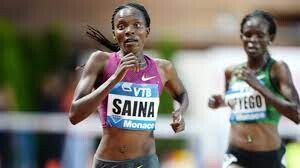
Despite the conditions, Saina proved herself once again, winning the race in 2:26:47. This sealed her confidence as she began to look ahead to the Olympic Trials in Orlando on February 3. If she’s one of the top three finishers in the women’s race in Florida, she’ll earn a spot on the U.S. team that will compete in the marathon at the Paris Olympics on August 11.
“Challenges make people strong, and running a good marathon on a harder course made me come back feeling motivated,” she says. “[Even though it wasn’t the faster time I originally wanted], it didn’t stop me from being a better version of myself.”
Transcendent Transplant
Despite her impressive performances in 2023, Saina has remained largely under the radar in terms of media coverage and fan predictions leading up to the Trials in Orlando, similarly to what fellow Kenyan-born marathoners Aliphine Tuliamuk and Sally Kipyego (both of whom made the last Olympic marathon team) experienced in 2020. The lack of attention relative to her competitors hasn’t fazed Saina, however.
“I know how to deal with pressure, having been in the sport since 2013, so as long as my training is going well, I don’t pay too much attention to what people say,” Saina says. “I’m just more excited to see many of the U.S. women [who are also] my friends, like Emily Sisson, Sara Hall, and Keira D’Amato, and to be racing so many amazing U.S. athletes for the first time.”
Saina’s result in Tokyo was only about a minute faster than her debut at the distance at the 2018 Paris Marathon, which she won in 2:22:56 (after dropping out of the 2017 Tokyo and New York City Marathons). It was also a confidence boost for Saina because it was also her first marathon since giving birth to her son, Kalya, now two, in December 2021, after previously running 2:22:43 and 2:31:51 at the 2019 Toronto Waterfront and Honolulu Marathons, respectively.
Saina—who originally came to the U.S. to attend Iowa State University where she trained alongside Tuliamuk and was a three-time individual NCAA champion and 11-time NCAA All-American—has remained in her hometown of Iten, Kenya, for the majority of the time since having her son, as her husband, Meshack Korir, is a doctor completing his postgraduate education there.
Although Saina became a U.S. citizen in late 2020 and has a home base in Colorado Springs, she made the decision to return to Kenya to have additional family support and childcare as she worked to come back from pregnancy and childbirth to prepare for the Olympic Trials, which she’ll return for just a few days before the race. Saina also keeps busy managing a couple of guesthouses, which she regularly rents out to visiting athletes and tourists. She also works with Cross World Africa, a nonprofit that sponsors underprivileged children in pursuing secondary and higher education.
“Before I came from Kenya, my family was struggling and we had to fundraise for my flight ticket to come to the U.S. Being here has changed my family in a different way—I have two sisters who are now nurses in the U.S., and my parents can now more easily fly to visit us, and while it is not where I began running, the U.S. where I began competing at such a high level,” she says. “My son also gives me so much motivation and is my inspiration. When I see him, I see beauty in myself and see myself getting better when I’m running. So I am excited both to compete and represent my son, and to hopefully wear the U.S. uniform because it has so much meaning for me.”
Back in Iten, Saina has been training in a group with personal pacemakers alongside 2019 New York City Marathon champion Joyciline Jepkosgei, which she describes as game-changing for her progress in the marathon. Both Saina and Jepkosgei, who is also the former world-record holder in the half marathon and Saina’s best friend from high school, are coached by Jepkosgei’s husband, Nicholas Koech.
“Sometimes you will train with people who don’t want to help someone else get better, but [Jepkosgei], who has run 1:04 [in the half marathon] and 2:17 [in the marathon] is unique in that she has sacrificed a lot, which I don’t think a lot of women will ever do for each other, and I don’t think I would either,” Saina says. “But she has been pushing me a lot since the first day I joined her, and I think that’s the reason I came back and I’ve had better races. I have someone to chase and it’s like competition in training, but in a good way.”
American Original
Saina returned to the U.S. twice last year, to race the USATF 25K Championships in Grand Rapids, Michigan, (where she took the win in 1:24:32 for her first U.S. title, narrowly beating D’Amato) and to be inducted into Iowa State’s Athletics Hall of Fame in September. Saina had planned to do some shorter U.S. races, including the Bolder Boulder 10K in May and the NYRR Mini 10K in June, following her national championship title in the 25K. However, she ultimately decided she couldn’t bear to be away from her son any longer.
“As a mom, when you’re away, you are so worried because you’re like, ‘How is he doing right now? How can I handle the pressure, being away from him?’” Saina says. “This year, it’s really different for me because the only race I want to travel to without Kalya is the Olympic Trials. He is growing now and getting better, so I want to travel with him afterward to compete in the USATF circuit. That’s the biggest goal for 2024, to travel with my son.”
Later this year, Saina hopes to also run the April 7 Cherry Blossom 10-Miler in Washington, D.C., the Mini 10K on June 8 in New York City, and a fast spring half marathon to pursue the current American record (which was broken yet again by Weini Kelati on January 14 in Houston), before running another marathon in the fall. In the meantime, she noted that she is especially eager to compete in one of the deepest fields ever assembled for the Trials.
Although Bates withdrew from the Trials, Saina figures to be one of the favorites in Orlando along with Sisson, Hall, Tuliamuk, D’Amato, and Seidel. However, Lindsay Flanagan (ninth in last summer’s world championships), Sara Vaughn, Susanna Sullivan, Gabriella Rooker, Dakotah Lindwurm, and Nell Rojas are all sub-2:25 marathoners, and thus top contenders, too.
“The U.S. is no longer small and non-competitive. Look at Molly Seidel. She got bronze at the Tokyo Olympics, and I remember when Amy [Cragg] was a bronze medalist at the 2017 World Championships. If you put that in perspective, it has changed even more right now compared to that time,” she says. “The competition [to make the U.S. team] is no longer as easy as the way some people [thought], and I’m super excited to be competing with a lot of solid women. There is no difference between the U.S. and other countries right now—it’s not just to go compete at the Olympics; they’re going to compete for the medals, just like other countries.”
by Emilia Benton
Login to leave a comment
2028 US Olympic Trials Marathon
Most countries around the world use a selection committee to choose their Olympic Team Members, but not the USA. Prior to 1968, a series of races were used to select the USA Olympic Marathon team, but beginning in 1968 the format was changed to a single race on a single day with the top three finishers selected to be part...
more...Can AI Find Your Perfect Fitting Running Shoe?
This new tech startup aims to provide an expert fit, all from your phone
A shoe can make or break your run, no matter your fitness level. Ill-fitting shoes can cause blisters so bad you can’t run anymore, while some shoes just don’t serve your specific gait, compromising your performance.
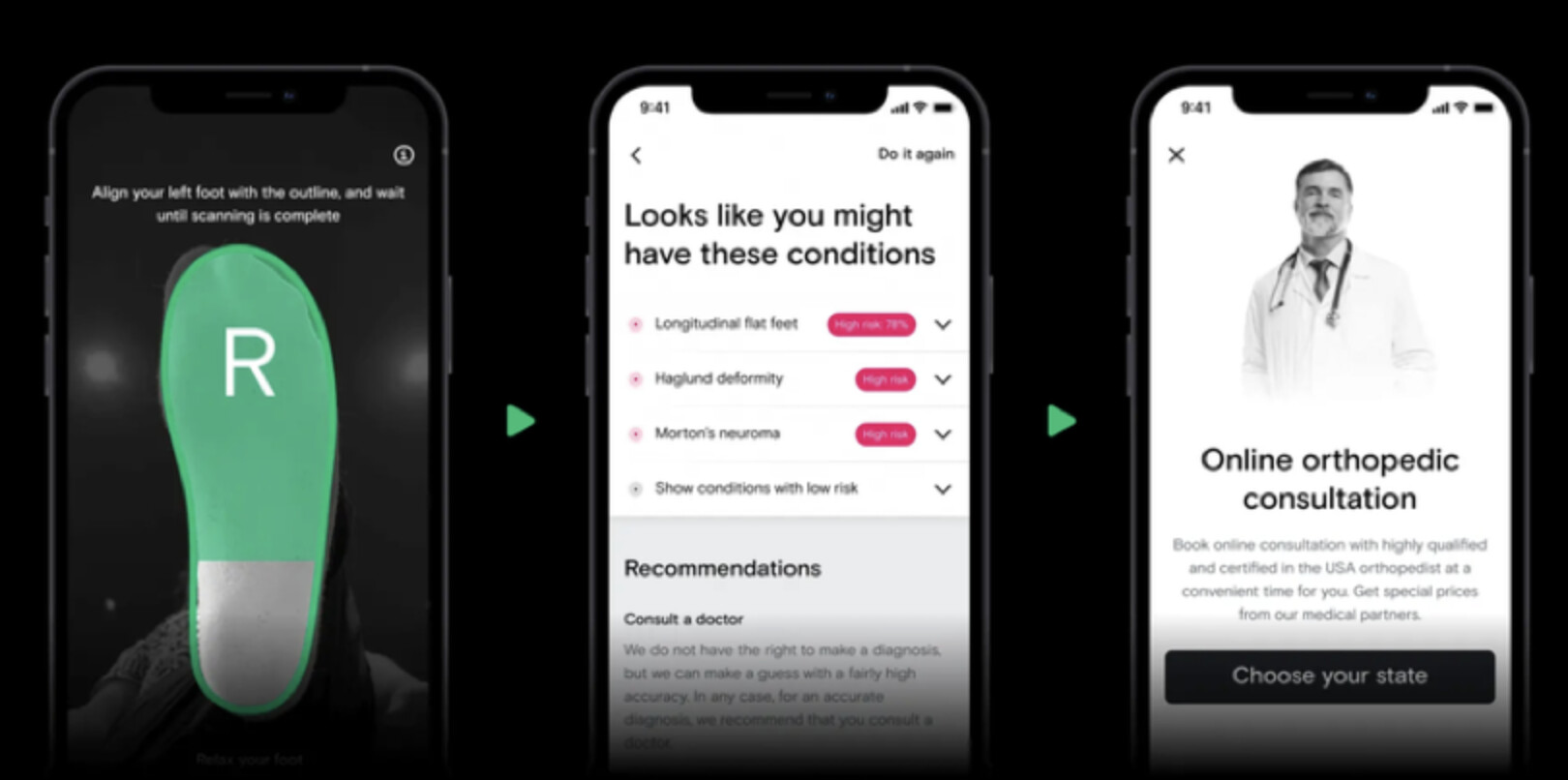

That was the case when pro marathoner Nell Rojas made headlines for breaking her coveted contract with Adidas. She cited issues with Adidas’ Adizero Adios Pro 2 for the split in 2022.
“I know that shoe is an amazing shoe, and I know world records have been set in it and marathon winners run in it, but for whatever reason it didn’t work for me and my stride,” she told Women’s Running. “I raced in it and didn’t have good results. I was having a hard time recovering and dug myself into a huge hole, and I think a lot of it was because of the shoe change earlier this year.”
What if runners could save themselves from training in shoes that are ultimately bad for them? What if a software, powered by artificial intelligence (AI), could recommend the perfect shoe for you?
While pros are bound to a single brand, the rest of us are burdened with choice. Do you choose whatever your speediest friend is wearing? What looks the best? Do you choose one that has excellent online reviews? Or do you visit a running shoe store and rely on a random salesperson’s expertise?
Maybe you’ve done all of the above and still felt disappointed with the performance of your footwear. For many runners, finding the right shoe is tricky and frustrating. It’s also paramount to success in the sport.
“It’s the only equipment for running that needs to be perfect,” says Tim McConnell, who owns West Seattle Runner alongside his wife, Lori. Together, they’ve been fitting runners in shoes for more than a decade. Lori is also a certified running coach and licensed mental health counselor. They agree that wrong shoes can not only make running uncomfortable, but they can also cause serious injuries up the chain.
So why is the perfect shoe so elusive? For one, just getting sizing correct is a complicated mess. To start, our feet change over time. As we age, feet flatten as ligaments and connective tissue loosen, causing feet to change size. Hormones during pregnancy do the same.
“Even as you get into that run, your foot swells,” says Mark Bouma, a Seattle-based physical therapist. This means your feet will be smaller in the store when you’re trying on shoes than they will be out on the pavement.
Sizes are also not precise and vary from brand-to-brand. In women’s running shoes, for example, it is estimated that 40 percent are not true to label size according to data recorded from Volumental–a company that makes 3D foot scanners for shoe stores.
Many running stores are equipped with 3D foot scanners that measure heel-to-toe-length, ball width, ball girth, heel width, arch height, and instep height. The scanners help store employees recommend shoe size, can generate custom insoles based on the readings, and use AI to recommend shoe models.
While this is a quick, simple, and free service that stores provide to the community, it’s an extra step that some consumers aren’t interested in or otherwise don’t have access to if they don’t live near a retailer. Instead, consumers purchase shoes online, hope they fit, and return if they don’t. It’s a cycle that causes friction for all parties–retailers, manufacturers, and consumers.
No one is surprised to hear that the trend of online running shoe shopping is not likely to go away. As Forbes reports, eCommerce continues to grow steadily and is expected to balloon to 24 percent of all retail sales by 2026.
What if there were a way to buy shoes online better? According to research from Salesforce, product recommendations powered by artificial intelligence can potentially affect $194 billion in online sales.
Artem Semjanow, founder and CEO of the running shoe app Neatsy.ai, agrees that artificial intelligence and augmented reality can ease pain points for shoppers. His app allows users to scan their foot from their phone to receive the kind of recommendations they’d get in a running store as well as physical therapy recommendations related to any pain they are having.
As someone who suffered from debilitating foot pain, Semjanow wanted to create a tool that would help people, not just runners, get access to affordable foot care and personalized shoe recommendations. Prior to founding his tech company, Semjanow was at Prisma Labs developing AI photo-editing software.
“I decided that I got tired of improving people’s selfies,” he says. “It’s a cool job, don’t get me wrong. And people pay for self-improvement. But I wanted to make something more meaningful for the world.”
Through his own experience and what he knew from doctors in his own family is that when you go in with a problem, doctors will always try to take a more conservative approach to addressing your problem before suggesting an invasive treatment. What if he could develop an app that went through those conservative approaches to save users time and money?
What that looks like on Neatsy.ai is giving guidance about basic foot ailments, suggesting physical therapy treatments, and recommending the shoes that you can purchase from the app.
The system uses augmented reality to create a 3D scan of the foot and artificial intelligence to make the recommendations and answer questions users have, similar to ChatGPT. Arguably more reliable than ChatGPT, Neatsy.ai has been trained using real medical cases in partnership with Harvard Foot and Ankle Research and Innovation Laboratory.
“They helped us collect the anonymous set of data of different cases for people—pretty much all the 3D foot shapes, and what real doctors have thought that the problem might be and what treatment and shoes doctor recommends in that particular case,” says Semjanow.
The team will soon publish research on the process of training AI using a mix of in-app scans and obtained medical cases.
When a store associate is conducting a shoe fitting, they are taking a lot of qualitative data into consideration: your running goals, your history with injury. They are watching you run in the shoe to see how your gait is affected.
“We even listen to the sounds of the runner,” says Lori McConnell. If the footfall is particularly loud or slapping, that might lead them to recommend a different shoe.
Shoe fit is an intricate puzzle when you consider the dynamic nature of the foot, says Craig Fox, D.P.M., an Illinois-based podiatrist. Then you add in the extra layer of performance goals or other tangible variables. “We know the size of your foot changes dynamically as you walk or run. What if you change socks? That may have an effect on shoe size. Even with 13 points of measurement, the challenge persists.”
It’s unlikely that any scan will understand how your foot moves under load, unless it is taken in motion, says Bouma. “If it’s just scanning your foot, you really don’t know what the other joints around the foot are doing.”
Another complication comes in the changing landscape of shoe design itself. Jon Teipen, principal footwear product line manager at Brooks, notes that shoes are more dynamic than they once were, which changes what we know about fit.
“You’re looking at more engineered materials that are a lot more intelligent, so they just have a little bit more give to them,” he says. In older designs, shoes would have a repeating mesh pattern with polyurethane (PU) overlays that made the upper more static and less accommodating to different feet. “[Now,] as you put your foot in there, the materials can expand out a little bit more than they used to be able to with all the extra overlays on it.”
He believes that extra level accommodation gives AI an advantage in spitting out a closer-fitting recommendation, as long as the internal measurements are right.
“On the other side, too, is that the materials have some flexibility and stretch to them. There’s some variants of the actual shoe structure itself that the program’s probably not going to be able to decipher either,” says Teipen. Dr. Fox notes that the same issues persist with foot scanners in store that are designed to narrow in on foot size and not much more. “Just because the shoe ‘fits’ on your foot, does not mean it is the best footbed for your foot type.”
Even running store owners agree in regard to the tech they use everyday.
“The scan gives us credibility,” says Tim McConnell who is used to customers not believing him when he suggests they’re wearing the wrong sized running shoe. But many of his recommendations are based on his experience and not necessarily because of the technology. “A footscan might get you halfway there,” he says.
A lot of that push back has to do with lack of education–adults not understanding that their feet can get bigger–and what industry experts call ‘vanity sizing’ –consumers holding on to a standard of femininity or masculinity attached to confining within a certain shoe size.
Teipen also sees how a technology like AI can help runners get beyond vanity sizing issues. “Tools like this that are a little bit more objective, might be good for people to get over any mental barriers they have,” he says.
Semjanow also recognizes the limitations of Neatsy’s use of AI in such a broad category. With so many new shoe models released each year, the app is unable at the moment to recommend the newest, perhaps most advanced shoe models, as it relies on user reviews to generate recommendations.
“For example, HOKA introduced a new running model for summer 2024, and we just don’t have any data for that,” says Semjanow. Which means app users are more likely to be given recommendations for older models, rather than new ones. “We want to establish more partnerships with shoe brands to actually get the data for different kinds of shoes before they are launched.”
It’s important to note that the company does receive a commission from shoes sold on the platform. But according to Semjanow, the commission is the same across the board, so there is no incentive for them to push one brand over another.
AI may not be the perfect shoe conversion tool right now. But there are other ways AI will revolutionize the running shoe industry.
“The future of footwear lies in reimagining the selection process, focusing not on the shoe as a whole but as a sum of its parts,” says Dr. Fox. “Analogous to selecting eyeglasses, where frames are chosen and lenses are made to specifications, the concept of prioritizing the insole before the shoe itself could revolutionize the shoe buying experience.”
Brooks is in the early stages of utilizing AI in a generative design process.
“It’s starting to open up where we can move faster,” says Taipen. When working on a blueprint of a shoe, for example, shifting from a 2D to 3D model, these technologies allow them to modify characteristics faster than the modifying hand drawn designs. “The hope is, as we move into the future, to be able to do actual digital testing.”
With the forthcoming Hyperion Elite 4, for example, Brooks has partnered with Arris, a manufacturing tech company focused on performance products, for the shoe’s carbon plating.
“What they’re able to do is lay down each fiber individually, so they can add a little bit more stiffness in some spots, a little bit more flexibility in some spots. And then they can run it through their computer and test it and see what the performance and functionality would be. So they can do a lot of iterative testing before actually even building a part.”
Teipen is encouraged that generative design in AI will only get better.Likewise, Dr. Fox is hopeful about AI and AR in shoe manufacturing and retail.
“After three decades in podiatry, I’ve witnessed countless patients lugging shopping bags filled with shoes that didn’t quite work. Their stories often echoed the frustration of finding a temporary solution, only to return to the online marketplace in search of the elusive perfect shoe–the unicorn of footwear.”
by Outside Online
Login to leave a comment
The Road to the Paris Olympics and here is What You Need to Know.
American runners are about to begin training for the U.S. Olympic Trials Marathon
It’s early October, which means it’s the peak marathon season for many runners. But with an Olympic year on the horizon, it also means America’s top marathoners are about to hit the road to Paris.
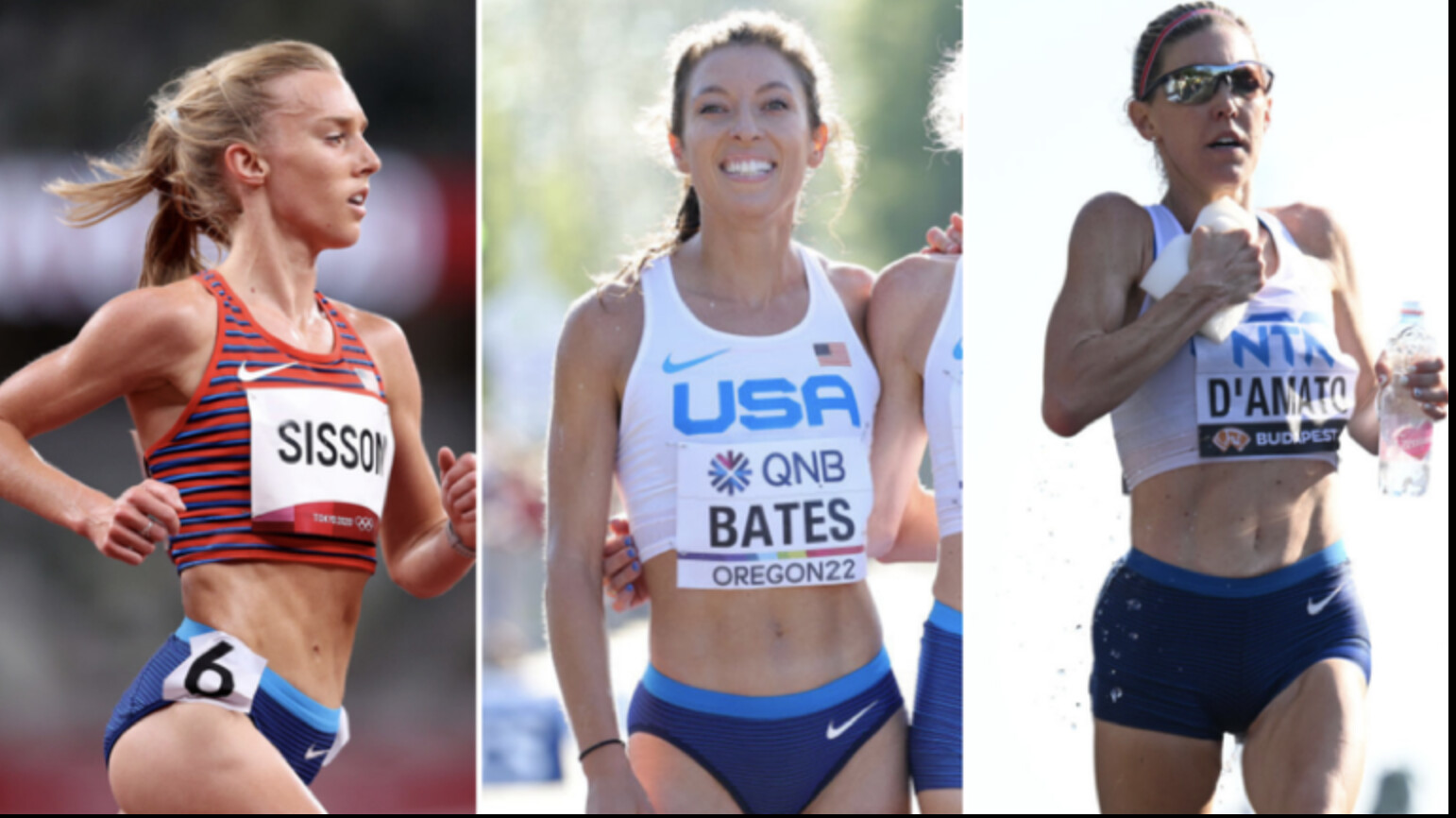

More specifically, the men’s and women’s 2024 U.S. Olympic Trials Marathon races—scheduled for February 3 in Orlando, Florida—are just four months away. And that means the top U.S. runners hoping to represent their country at next summer’s Olympics are about to begin preparing for the all-or-nothing qualifying race that decides which six runners will represent Team USA next summer on the streets of Paris.
Although several top American runners are racing the Chicago Marathon on October 8, even they have their eyes on a much bigger prize next February.
“There’s nothing in my mind that compares with being an Olympian and being in the Olympic Games,” says 26-year-old Utah-based Nike pro Conner Mantz, who returns to Chicago after finishing seventh last year in 2:08:16 in his debut at the distance. “So putting that first has been the plan for a long time. We’re just putting that first and we’re working backwards through the season with other races.”
Registration will open for the U.S. Olympic Trials Marathon in early November for runners who have surpassed the qualifying times in the marathon (2:18:00 for men, 2:37:00 for women) or half marathon (1:03:00 for men, 1:12:00 for women). The qualifying window extends through December 3—the race date of the last-chance California International Marathon, which for decades has been one of the most popular Olympic Trials qualifying races.
In 2020, a record 708 runners—465 women and 243 men—qualified for the U.S. Olympic Trials Marathon in Atlanta just before the onset of the Covid-19 pandemic. But USA Track & Field lowered the women’s qualifying standard by eight minutes from the more attainable 2:45:00 plateau, which means there will most likely be a much smaller women’s field this year.
But even so, amid the handful of runners who have a legitimate shot at making the Olympic team, there will also be dozens of dreamers, wannabes, and just-happy-to-be-there elite amateurs who have worked hard, put in the miles, and earned the chance to be on the start line of the deepest and most competitive U.S. distance-running races that only happen once every four years.
The men’s and women’s races will run simultaneously with the men beginning at 12:10 P.M. EST. and the women starting 10 minutes later. Runners have complained that a high noon start means they will be forced to race in hot, humid conditions. Over the past decade, the average temperature on February 3 in Orlando has been 69.6 degrees Fahrenheit at noon, rising to 73.3 at 4 PM. But actual temperatures have varied drastically, from 81 degrees Fahrenheit at 2 P.M. last year to 56 at the same time the year before. USATF officials have responded by saying that the start times are to accommodate live coverage on NBC and to match the expected conditions in Paris.
Here’s an update and overview of what’s next, who the top contenders are, the course, and what to expect in the next four months.
The 26.2-mile U.S. Olympic Trials course runs through downtown Orlando and consists of one 2.2-mile loop and three eight-mile loops. The marathon course will run through several neighborhoods, main streets, and business districts in Orlando, including Central Business District, City District, South Eola, Lake Eola Heights Historic District, Lake Cherokee Historic District, Lake Davis Greenwood, Lake Como, North Quarter, Lawsona/Fern Creek, SoDo District, and the Thornton Park neighborhood. It will then head east to and around The Milk District neighborhood and Main Street. (Notably, the course will come close to Disney World, which is about 15 miles to the southwest.)
Unlike the Olympic Marathon course in Paris, which will challenge runners with significant hills in the middle, the Orlando course is mostly flat. Each loop has a few minor variations in pitch, but only 38 feet separate the high and low points on the course. Ultimately, though, it’s a spectator-friendly route with chances for family, friends, and fans of runners to see the action several times.
The top women—based on personal best times and recent race results—are Emily Sisson, Emma Bates, Keira D’Amato, Betsy Saina, and Lindsay Flanagan. But the U.S. Olympic Trials races almost always produce surprises with a few great runners having off days and a few good runners having exceptional days, so there is reason to expect the unexpected.
Sisson lowered the American record to 2:18:29 last year when she finished second in the Chicago Marathon. She’s running Chicago again on October 8 along with Bates, who has said she’s hoping to break the American record. In January, Sisson, 31, chopped her own American record in the half marathon in Houston with a 1:06:52 effort, and most recently won the U.S. 20K Championships (1:06:09) on September 4 in New Haven, Connecticut. Bates, also 31, hasn’t raced at all since her sterling fifth-place effort at the Boston Marathon in April, when she slashed her personal best to 2:22:10.
While Chicago will be another good place to test themselves, both have unfinished business after Bates was seventh at the 2020 Trials and Sisson dropped out near the 21-mile mark.
The same goes for Flanagan, 32, who has been one of America’s best and most consistent marathoners for the past five years. She placed 12th at the trials in 2020. She had a breakthrough win (2:24:43) at the Gold Coast Marathon in 2022 followed by a strong, eighth-place finish (2:26:08) at the Tokyo Marathon earlier this year. In August, she ran perhaps the best race of her career, when she finished ninth (2:27:47) at the world championships in Budapest amid hot, humid conditions.
The 38-year-old D’Amato, meanwhile, just capped off another strong season with a 17th-place showing (2:31:35) at the World Athletics Championships in Budapest, a year after finishing eighth in the world championships and setting an American record 2:19:12 at the 2022 Houston Marathon. She was 15th at the Trials in 2020 in 2:34:24, just two years into her competitive return to the sport after having two kids and starting a career in real estate in her early 20s.
“It’s such a huge goal of mine to become an Olympian,” says D’Amato, who lowered Sisson’s U.S. record in the half marathon with a 1:06:39 effort at the Gold Coast Half Marathon on July 1 in Australia. “It’s really hard for me to put words into this because my whole life, wearing a Team USA jersey has been like a huge dream. And when I left the sport (temporarily), I felt like I said goodbye to that dream and I kind of mourned the loss of being able to represent my country. I feel like it’s the greatest honor in our sport to be able to wear our flag and race as hard as possible.”
Saina, a 35-year-old Kenya-born runner who ran collegiately for Iowa State University, became a U.S. citizen in late 2021. She placed fifth in the 10,000-meters at the 2016 Olympics in Rio de Janeiro while competing for Kenya. She’s spent the past several years splitting time between Kenya and Nashville, Tennessee, where she gave birth to a son, Kalya, in December 2021.
She’s returned with a strong fourth-place 1:11:40 result at the Tokyo Half Marathon last October and a fifth-place 2:21:40 showing at the Tokyo Marathon in February. In May, Saina won the U.S. 25K Championships in Michigan. Two weeks ago she broke the tape at the Blackmores Sydney Marathon in Australia in 2:26:47.
Other top contenders include but are not limited to Tokyo Olympics bronze medalist Molly Seidel (who’s personal best is 2:24:42), 2022 U.S. Olympic Trials champion Aliphine Tuliamuk (2:24:37, 11th in Boston this year), Susanna Sullivan (2:24:27 personal best, 10th in London this year), two-time Olympian and 2018 Boston Marathon winner Des Linden (2:22:38), and Sara Hall (2:20:32, fifth at last year’s world championships), plus Kellyn Taylor (2:24:29), Nell Rojas (2:24:51), Sarah Sellers (2:25:43), Lauren Paquette (2:25:56), Dakotah Lindwurm (2:25:01), Annie Frisbie (2:26:18), Sara Vaughn (2:26:23), Tristin Van Ord (2:27:07), and Jacqueline Gaughan (2:27:08).
The list of potential men’s top contenders isn’t as clear-cut, partially because there are so many sub-2:11 runners and several fast runners who are relatively new to the marathon. But all that suggests a wide-open men’s race where more than a dozen runners are legitimately in the mix for the three Olympic team spots. That said, the top runners on paper, based on both time and consistent results over the past few years, are Scott Fauble, Jared Ward, Galen Rupp, Conner Mantz, Leonard Korir, Matt McDonald, and C.J. Albertson.
The 31-year-old Fauble, who was 12th in the Olympic Trials in 2020 and owns a 2:08:52 personal best, has finished seventh in the Boston Marathon three times since 2019 and also finished seventh in the New York City Marathon in 2018. Ward is a 2016 U.S. Olympian and has three top-10 finishes at the New York City Marathon and a 2:09:25 personal best from Boston in 2019. He’s 35, but he just ran a 2:11:44 (27th place) at the Berlin Marathon in late September.
Rupp, who won the past two U.S. Olympic Trials Marathons and earned the bronze medal in the marathon at the 2016 Olympics, is nearing the end of his competitive career. He boasts a 2:06:07 personal best and has run under 2:10 more than any American in history, including when he finished 19th at the world championships (2:09:36) last year. He’s a bit of a wild card because he’s 37 and hasn’t raced since his lackluster 17th-place showing at the NYC Half Marathon (1:04:57) in March, but the world will get a glimpse of his fitness in Chicago this weekend.
Mantz followed up his solid debut in Chicago last fall with a good Boston Marathon in April (11th, 2:10:25) and solid racing on the track and roads all year, including his recent runner-up showings at the Beach to Beacon 10K in August and the U.S. 20K Championships in September.
McDonald, 30, who was 10th in the 2020 U.S. Olympic Trials, has quietly become one of the best marathoners in the U.S. while serving as a postdoctoral associate in chemical engineering at M.I.T. His last three races have clocked in at 2:10:35 (Boston 2022), 2:09:49 (Chicago 2022), and 2:10:17 (Boston 2023). The only other runner who rivals that kind of consistency is Albertson, 29, who has run 2:10:23 (Boston 2022), 2:10:52 (Grandma’s Marathon 2022) and 2:10:33 (Boston 2022) in his past three marathons and was seventh in the U.S. Olympic Trials in 2020 (2:11:49).
The men’s race will likely have a mix of veteran runners and newcomers who have run in the 2:09 to 2:10 range since 2022. Among those are 2020 U.S. Olympic Trials runner-up Jake Riley (2:10:02 personal best), who is returning from double Achilles surgery; 2016 U.S. 10,000-meter Olympian Leonard Korir (2:07:56), who ran a 2:09:31 in Paris in April; Zach Panning (2:09:28, plus 13th at the world championships in August); U.S. 25K record-holder Parker Stinson (2:10.53); Futsum Zienasellassie who won the California International Marathon last December in his debut (2:11:01) and then doubled-back with a new personal best (2:09:40) at the Rotterdam Marathon in the spring; Abbabiya Simbassa, who ran a solid debut marathon (2:10:34) in Prague this spring; and Eritrean-born Daniel Mesfun (2:10:06) and Ethiopian-born Teshome Mekonen (2:10:16), who both received U.S. citizenship within the past year; and solid veterans Nico Montanez (2:09:55), Elkanah Kibet (2:10:43) and Nathan Martin (2:10:45).
Additional sub-2:12 runners who will be in the mix are Andrew Colley (2:11:26), Clayton Young (2:11:51), Brendan Gregg (2:11:21), Josh Izewski (2:11:26), Jacob Thompson (2:11:40), and Kevin Salvano (2:11:49).
As noted previously, some top contenders will season their marathon legs one final time at the flat and fast Chicago Marathon on October 8. An even more select few will opt for the New York City Marathon on November 5. After that, nearly every American with eyes set on an Olympic berth will double-down over the holiday season for that one final, critical marathon training cycle. Expect to see a wide range in heat training, from sauna protocols, to warm weather training trips, to simply an adjusted race day strategy.
Of course, with the Olympic Marathon falling under the purview of World Athletics, qualifying for the U.S. Olympic Marathon team is not quite as simple as finishing on the podium in Orlando. Any American looking to have a breakout performance and finish within the top three at the U.S. Olympic Trials Marathon will need to have run under 2:11:30 for men and 2:29:30 for women within the qualification window, which spans from November 1, 2022 to April 30, 2024. Given the possibility of oppressively hot and humid temps on February 3 in Orlando, they’re best bet is to secure that time now.
These qualification standards are in accordance with a new rule from World Athletics, which allows national Olympic committees to circumvent the typical Olympic qualification process of running under 2:08:10 for men and 2:26:50 for women, or being ranked among the top 65 in the world on a filtered list of the top three athletes from each country. The catch, though, is that three other runners from said country must have met one of these two standards. If this sounds complicated, that’s because it is.
For the hundreds of elite amateurs on the cusp of hitting that coveted U.S. Olympic Trials qualifying time, it’s do or die mode. While a few made the cut at the Berlin Marathon on September 24, one of those opportunities was lost when the Twin Cities Marathon was canceled on October 1 because of excessive heat. Temperatures are shaping up for an auspicious day in Chicago this weekend, and many more will give it a final shot at the Columbus Marathon on October 15; Indianapolis Monumental Marathon on October 28; the Philadelphia Marathon on November 18; and the last-call California International Marathon, a point-to-point race ending in Sacramento, California on December 3.
Ultimately, only six American runners will likely continue on along the road to Paris and earn the chance to run in the men’s and women’s Olympic marathons next August 10-11. For a handful of younger runners, the 2024 U.S. Olympic Trials will be a motivation to reinvigorate the Olympic dream or keep a faint hope alive, at least until the 2028 U.S. Olympic Trials that will determine the team for the Los Angeles Olympics. But for many runners, the journey to the U.S. Olympic Trials in Orlando will lead to the end of their competitive road running careers as new jobs, young families, a switch to trail running, and other priorities will take hold.
“I think the Olympic Trials is an important part of American distance running,” says Kurt Roeser, 36, a two-time U.S. Olympic Trials Marathon qualifier who works full-time as a physical therapist in Boulder, Colorado. “I’m glad that they kept it the same event for this cycle and hopefully for future cycles because it gives people like me a reason to keep training. I’m older now and I’m not going to actually have a chance to make an Olympic team, but for somebody that’s fresh out out of college and maybe they just barely squeak in under the qualifying time, maybe that’s the catalyst they need to start training more seriously through the next cycle. And maybe four years from now, they are a serious factor for making the team.”
by Outside Online
Login to leave a comment
Stacy Ndiwa debuts World Marathon Majors in Chicago
Seven months after winning the Los Angeles Marathon, Stacy Ndiwa will be returning to American soil in search of her first World Marathon Majors title at the Chicago Marathon on October 8.
The former Commonwealth Games 10,000m silver medalist, will be up against top marathon runners across the world led by the defending champion Ruth Chepngetich.
Chepngetich has a personal best of 2:14:18. Another Kenyan Joyciline Jepkosgei (2:17:43) will also be competing.
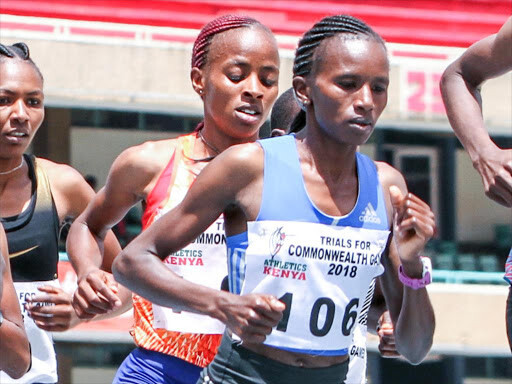
Ndiwa, who is now training in Iten, said her preparations are in top gear and she is hoping to return good results.
“This will be my first time to compete in World Marathon Majors and I am ready for the world,” she said.

The former Africa 10,000m champion made her debut in the 42km race last year, placing fourth at the Istanbul Marathon in 2:31.53 and went ahead to win the Los Angeles Marathon in 2:31.00 in March last year.
In May, Ndiwa won the second edition of the Iten 15km Road race and went ahead to finish second at the Boston 10km in 31:25 behind champion Hellen Obiri (32:21) with Sheila Chepkirui (31:27) third in an all-podium Kenyan sweep.
“This time, I have had a very busy schedule and I need to crown it all by posting better results in Chicago,” said the athlete who compete for the National Police Service.
“This will be an avenue for me to enter into the big marathon big league. Competing at the World Majors Marathon is not a walk in the park and I really need to work hard,” she said.
Others in the race will be the Ethiopian quartet of Genzebe Dibaba (2:18:05), Tigist Girma (2:18:52), Sutume Kebede (2:18:12) and Ababel Yesheneh (2:20:51).
Emily Sisson (2:18:29) will lead the home team consisting of Des Linden (2:22:38), Emma Bates (2:23:18), Aliphine Tuliamuk (2:24:37), Nell Rojas (2:24:51), Molly Seidel (2:24:42), Dakotah Lindwurm (2:25:01), Sara Vaughn (2:26:23), Gabriella Rooker ( 2:27:38), Diane Nukuri (2:27:50) and Maggie Montoya (2:28:07).
Reigning London Marathon champion Sifan Hassan (2:18:33) from the Netherlands will also be in the contest.
by Emmanuel Sabuni
Login to leave a comment
Bank of America Chicago
Running the Bank of America Chicago Marathon is the pinnacle of achievement for elite athletes and everyday runners alike. On race day, runners from all 50 states and more than 100 countries will set out to accomplish a personal dream by reaching the finish line in Grant Park. The Bank of America Chicago Marathon is known for its flat and...
more...Bolder Boulder names Ric Rojas, daughter Nell as official 2023 race starters
Nell Rojas has participated in just about every aspect of the Bolder Boulder throughout her life while evolving into one of the top women’s distance runners in the nation.
Her father, Ric Rojas, will forever be etched in the Bolder Boulder’s rich lore as the first winner of Boulder’s annual 10-kilometer running extravaganza.

This year, it will be one of the most recognizable families of the Boulder running scene that will spur the masses into their paces.
Nell Rojas, fresh off becoming the top American woman finisher at the Boston Marathon for the second consecutive time, and her father will serve as the official starters when the 43rd Bolder Boulder sets off on Memorial Day.
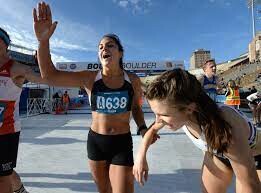
“It makes it just that more special that I get to do this with my dad,” Nell Rojas said. “I think it’s even more special for him more so because I think he’s very proud of me, but the Bolder Boulder also was a huge thing for him as an athlete, but also as a coach. He always pushed people in the Bolder Boulder since I was born. It’s a fun way to bring it around and have him have the opportunity to do this.”
Last month, Rojas completed the Boston Marathon with a personal-best mark of 2 hours, 25 minutes, 57 seconds, finishing 10th overall. Rojas also was the top American woman in the event last October.
A Boulder native and a graduate of Boulder High, Rojas ran the pro race at the Bolder Boulder for the first time last year, when the event returned from a two-year hiatus spurred by the COVID pandemic. The quick turnaround following the Boston Marathon made competing in this year’s race impossible, but Rojas was more than happy to jump at the chance to play another role as the official starter.
“I was pretty bummed not to run it,” Nell Rojas said. “I would love to come run it when I am in shape and when I can do well. I’d love to win the pro race some year. But any year I’m doing Boston, it’s just not feasible. I was bummed to say no. But when they asked me to start, that’s just so cool. And for my dad and my family, it’s such a family event and such a big part of our history, I’m super excited.”
Ric Rojas won the inaugural Bolder Boulder in 1979 and is the one-time world record holder in the 15K. He remains an elite running coach with his Boulder-based company, Ric Rojas Running. By tapping the father-daughter tandem as the official starters, the Bolder Boulder is bridging the generations between the race’s humble beginnings and a modern event that attracts elite runners from across the globe.
“Our first thought was, obviously she raced Boston and we watched her run closely,” Bolder Boulder race director Cliff Bosley said. “The first thought was to invite her for a spot on the pro team and represent the USA. But the Boston Marathon is an event that has kind of a long recovery. When she was talking to us we thought maybe not this year. So then we thought having Nell and her father as the official starters, that would really work.”
by Pat Rooney
Login to leave a comment
BOLDER BOULDER
In 1979 we dreamt of attracting a few hundred of our friends to race though the streets of Boulder, Colorado to celebrate Memorial Day with our families. Fast forward almost 40 years and the Bolder BOULDER has grown to become one of the largest and most highly acclaimed 10K’s in the world. Almost 1.2 million runners, joggers, walkers and spectators...
more...SAINA VICTORIOUS and KORIR REPEATS AT THE USATF 25 KM CHAMPIONSHIPS
GRAND RAPIDS, Michigan — It was a thrilling morning of racing in Grand Rapids on Saturday, as both the women’s and men’s races came down to the final mile, with Betsy Saina earning her first USATF title and Leonard Korir repeating as champion at the USATF 25 km Championships.
The USATF 25 km championships was hosted by the Amway River Bank and is the sixth stop on the USATF Running Circuit.
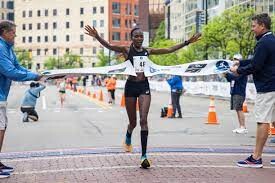
The women started first Saturday morning in Grand Rapids, and as the gun sounded it was USATF Running Circuit veteran Dakotah Lindwurm jumping to the early lead and setting a pace that immediately strung out the field. Lindwurm, along with other top competitors, would eventually pack up and run much of the front half of the race together.
As the lead pack passed the 10 km split, Lindwurm continued to drive the pace, while the remaining athletes in the group, Saina, Keira D’Amato, Jessa Hanson, Jeralyn Poe, and Nell Rojas all seemed content letting Lindwurm pace the way up front.
By 15 km, the trio of Lindwurm, Saina, and D’Amato were the remaining three runners up front, with Hanson and Poe running together a few seconds back. Eventually, D’Amato put in a surge to jump to the lead, as Lindwurm dropped off pace and connected with Hanson and Poe.
The move put D’Amato and Saina up front, claiming valuable seconds between themselves and the chase group as the final stages of the race were now upon them. D'Amato and Saina started to work together, and while Lindwurm and Hanson worked to try to maintain contact, their effort eventually couldn’t match that of the front running duo.
With just under a mile and a half to go, Saina put in a surge that D’Amato simply couldn’t match. Saina charged forward, never looking pack, working hard to create crucial space between her and D’Amato. As the finish came into view, Saina nearly missed the final turn, allowing D’Amato to regain a few seconds on her rival, but ultimately Saina held off D’Amato, claiming her first USATF title as she crossed the line in 1:24:32.
D’Amato claimed the runner-up spot at the USATF 25 km Championships for the second year running, this time crossing the finish in 1:24:39, adding another strong result to her young 2023 campaign. Behind the leading duo, Hanson held off Lindwurm for third, crossing the finish in 1:25:33, while Lindwurm held on over the final miles to claim fourth overall in 1:25:58. Rojas and Poe stayed close to the chase, as well, taking home fifth and sixth place in 1:26:19 and 1:26:32. With their third and fifth place finishes, Hanson and Rojas leapt Emma Hurley in the USATF Running Circuit overall standings, as the duo are now tied for first with 29 points.
Hurley now sits third with 22 points, having not raced Saturday in Grand Rapids. Breanna Sieracki took home seventh in 1:28:43, Mackenzie Caldwell claimed eighth in 1:29:19, Katrina Spratford-Sterling earned ninth in 1:30:13, and Joanna Stephens finished tenth for the second consecutive year with a 1:30:49 finish.
As the men’s race got underway, reigning champion Korir and Thomson jumped to the lead immediately, pushing the early pace and dropping the majority of the field within the first 5 km, leaving a small group of only eight men in the lead pack.
Over the next 5 km, Korir and Thomson would continue to lead, with USATF Running Circuit veterans Brian Shrader and Joel Reichow, along with Connor Winter, making a top group of five runners. Rolling along, the lead pack passed through 15 km, with Reichow dropping off the group, leaving four men to race the final 10 km in Grand Rapids. Winter would eventually fall off pace, making it a three-man race to the finish with less than 5 km to go.
With a mile to go, Korir started to push the pace, one that both Shrader and Thomson couldn’t match. Korir used his experience in Grand Rapids, picking it up around the curves of the final stages of the race, putting enough space on his competition to hold on to victory, repeating as USATF 25 km champion in 1:14:45.
Thomson was able to hold off Shrader over the final quarter mile of the race, taking second place in 1:14:49 to Shrader’s third place effort of 1:14:53. Korir’s finish pushed him into the top spot in the USATF Running Circuit overall rankings with 46 points. Thomson’s runner-up effort kept him in second, but moving ahead of Hillary Bor in points, totaling 43 points through six races on this year’s circuit. Shrader’s third place effort moved him up to fourth, five points behind Bor’s 31-point total with 26 points.
Winter held on to fourth place, running a magnificent race from start to finish, crossing the line in 1:15:30. John Dressel and Reichow finished fifth and sixth overall in 1:16:06 and 1:17:12 respectively. Rounding out the top ten, Jarrod Ottman ran to seventh in 1:18:58. Adam Walker and Will Norris both ran under 1:20:00, with 1:19:06 and 1:19:21 eighth and ninth place finishes. Brendan Gregg took home tenth in 1:22:27, outlasting two-time USATF 25 km champion Fernando Cabada, who took eleventh with the same time. The seventh and eighth stop on the 2023 USATF Running Circuit are the USATF Women’s 6 km Championships in Canton, Ohio, and the USATF Men’s 8 km Championships in Kingport, Tennessee, both events taking place on July 15.
Login to leave a comment
How the Bolder Boulder 10K Became One of the World’s Most Cherished Road Races
5,000 runners are expected to run this year’s Memorial Day 10K on May 29
At bedtime last week, legendary American distance runner Melody Fairchild regaled her 7-year-old son Dakota with tales of the Bolder Boulder 10K he plans to run this year.
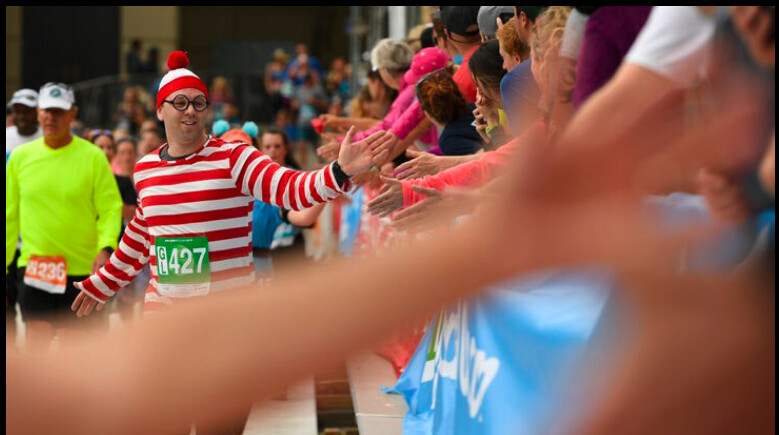
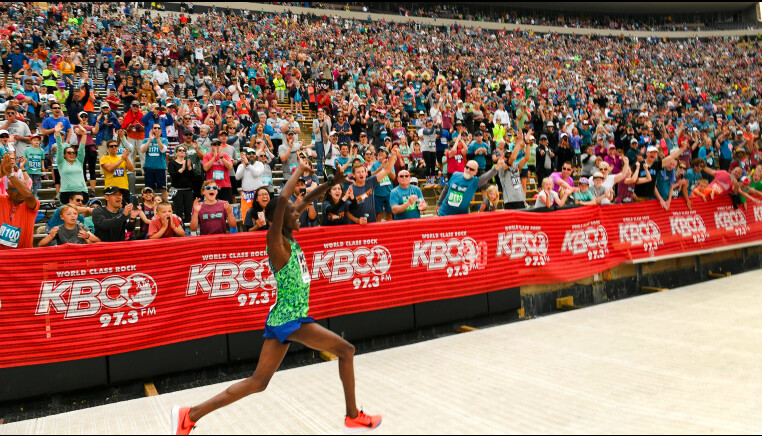
One of the biggest road races in the world for the past several decades, the race sends 40,000 runners through the streets of Boulder, Colorado, on a point-to-point race that ends at the University of Colorado (CU) football stadium, full of cheering spectators and fellow runners.
“I told him it’s an amazing feeling to run into that stadium,” Fairchild says. “When you hit the field, the whole crowd is cheering for everybody. You feel like they’re cheering for you. He had this huge smile on his face.”
And if 50,000 people cheering isn’t enough, there’s also the famous slip-n-slide, numerous bands playing on the course, runners and spectators wearing outrageous costumes, and the military jet flyover by the Colorado Air National Guard you can feel in your bones. Named America’s All-Time Best 10K, it’s likely to be one of the biggest parties you’ll ever attend.
Fairchild recounted for Dakota her experience as the U.S. captain for the Bolder Boulder’s first International Team Challenge professional race in 1998.
“I remember looking out the window and seeing the stadium full. I was so nervous, I thought I was gonna vomit all over the floor,” she says. “When I walked out and they introduced me as the local hometown girl, the whole crowd roared.”
Fairchild ran her first Bolder Boulder at age eight. She went on to win the citizens’ race three times (1989, 1990, 1991) when she was a record-setting high schooler, became an All-American and NCAA champion at the University of Oregon, and then qualified for the U.S. Olympic Trials in the 10,000-meter run and marathon as a professional runner. But the Bolder Boulder has always held a special place in her heart, which is why she has continued to run it through the years and why she’s so eager to introduce Dakota to it.
The idea for the Bolder Boulder germinated in the mind of a father watching his five children participate in all-day track meets. It was the summer of 1978 at the upswing of the original American running boom, and runner and local businessman Steve Bosley had grown frustrated with the disorganized events and parents berating their children for not running fast enough.
Bosley, then 37, reached out to his friend, Boulder resident and international running icon Frank Shorter, a two-time Olympic medalist in the marathon, for help designing a race that would serve their community and promote the sport of running. The race would not only become a Colorado icon, it set a gold standard for road races around the world and helped elevate women’s running in unprecedented ways.
During the spring of 1979, Cliff Bosley, the current race director, went door to door with his Boy Scout troop, passing out posters to encourage neighbors to run his dad’s inaugural race. The poster announced a 4,000-participant cap and enticed Boulderites to “Run with Frank Shorter and Ric Rojas!” for a mere $6.50 entry fee. (Rojas was another local elite athlete who would go on to win the inaugural race in 1979. His daughter, Nell Rojas, a current professional runner, won the women’s citizen’s race 40 years later in 2019.)
Bosley recalls giving a man in his front yard a poster who threw it back in his face in disbelief. “‘Yeah right, 4,000!’ the man scoffed. “I was just a 12-year-old kid. You believe everything your parents tell you. I thought, ‘Dad says it could happen—why won’t it?!’”
The inaugural race saw 2,700 registrations. The next year, it doubled in size and live entertainment was added to the celebration. Participation continued to soar in the ensuing years and decades, eventually reaching 50,421 in 2010. With an average of 45,000 finishers over the past 10 years, it’s now the seventh-largest road race in the nation and the largest Memorial Day celebration in the U.S.
From its inception, the Bolder Boulder 10K offered equal prize money for the female and male winners. In 1984, it created a separate elite race from the citizens’ race. There was also a deliberate split in the women’s and men’s elite race so that both races could be showcased equally and covered live on the local TV broadcast. Today, it offers one of the largest non-marathon prize purses in the U.S., but this did not come without a lot of work.
Initially road races were precluded from paying prize money to athletes because it changed their amateur athlete status, preventing them from competing in the Olympics. In the early 1980s, Steve Bosley, then the president of the Bank of Boulder, worked with two local attorneys, Frank Shorter, and TAC (The Athletics Congress which was then the name of the national governing body for the sport; now it’s known as USATF), to create a mechanism using trust accounts for athletes to earn prize money. It was then paid into athletes’ individual trust accounts so they could draw living and training expenses. At the time these accounts were called TACTRUST Accounts, and the Bank of Boulder was the steward of 95 percent of all of these accounts on behalf of both American and international athletes from around the world.
One of the most circulated photos of the Bolder Boulder 10K is that of Shorter, the 1972 Olympic marathon champion, winning the 1981 race— the first time the race finished in the University of Colorado’s Folsom Stadium. But that same year, Ellen Hart, then 23, won the women’s race—although she says there was no finish line tape for the female winner.
“It was the most exciting thing I had ever seen,” she recalls. “Since I was a little girl, I had wanted to go to the Olympics. I thought, Oh my god. This is like the Olympics! I traveled to races all over the world and the BB was my favorite race.”
Hart would move to Boulder in 1982, and then win the race again in 1983 before the four-year reign of Portugal Olympian Rosa Mota. In many ways, Hart says, her success in the Bolder Boulder launched her career as a professional athlete.
She went on to place 11th at the inaugural women’s U.S. Olympic Trials Marathon in 1984, set an American record in the 30K, and won 18 world championship titles in triathlon and duathlon racing. “In terms of women’s sports, the Bolder Boulder was certainly more forward-thinking than any other race I ever attended,” Hart says.
The race organization was also ahead of its time when it began the Women’s High Altitude Training Camp, something it did not offer for men, in 1989. The 100-day program was designed to bring five talented post-collegiate female runners to Boulder to train prior to racing Bolder Boulder. Runners were placed in volunteer host families, provided an elite coordinator and a trail guide, and given access to a local gym and the university’s track to train.
New Jersey runner Inge Schuurmans McClory was a member of the 1990 team.
“I really didn’t feel worthy of national attention, but I applied for the program not even thinking I was going to get in,” she says. She was not only accepted, but she fell in love with Boulder and stayed.
“I went to graduate school here. I met my husband here. I coached cross country and track at CU. It sort of was the launching pad for the rest of my life, and I owe it to the Bolder Boulder and that high-altitude training camp,” says McClory, now a physician’s assistant who has trained cardiac patients—the Brave Hearts—for the Bolder Boulder since 2000.
Since 1996, there have consistently been more women (average 53-54 percent) than men completing the race. Cliff Bosley attributes this to his mom creating a walking division in 1984 so that her father, diagnosed with prostate cancer, could participate.
“We kind of look at it as a placeholder,” says Bosley, “You come in as a walker and now you’re on the continuum. Let’s help you become a jogger. Let’s help you become a racer.” This exemplifies the Bolder Boulder’s rallying cry, “Oh Yes You Can!” that it established in 1979.
The Bolder Boulder has always been defined by its strong community involvement, which includes an eager network of volunteers, aid stations staffed by local running groups, and the thousands of spectators who line the streets and fill the stadium. Historically, the race donates more than $100,000 to local nonprofits and community groups that volunteer. Even during the pandemic, the race still found a way to contribute.
“Knowing we could not stage the Bolder Boulder in-person, we created a virtual event called the VirtuALL 10K and offered it at no cost,” Bosley says. Thousands of T-shirts, designed for the 2020 race that went unused, were donated to shelters.
Another Bolder Boulder program that supports the community is the BB Racers Club. Created in 1996, the program prepares children for the race, so their experience is a positive one. Initially started as a middle school program, this club now includes elementary schools. Children who are signed up are given a special training program, coach, and starting wave. Fairchild’s Boulder Mountain Warriors club, of which her son Dakota is a participant, is training a large number of BB Racers this year.
Bosley is prepared for up to 45,000 participants at this year’s race on May 29. And just as they did 44 years ago, race organizers will serve participants a sack lunch and send them a postcard in the mail with their finishing place, pace, time, and ranking in their age group.
“I can still remember checking the mailbox every single day until it came,” says Fairchild. “It makes me emotional just thinking about how much attention to detail they’ve always given hundreds of thousands of people. They care so much. It’s not an accident that they are the best 10K in the world.”
by Outside
Login to leave a comment
USA Record For Hillary Bor Yields $59,000 Payday At Cherry Blossom 10 Mile
The 50th edition of the Credit Union Cherry Blossom 10 Mile here this morning ended with a bang when Olympic steeplechaser Hillary Bor not only won the men’s division of the USATF 10 Mile Championships, but also claimed a $50,000 bonus for breaking Greg Meyer’s 40-year-old national record by just two seconds.
Bor, 33, who represents Hoka One One and wore bib 13, clocked 46:11, three seconds behind overall race champion Tsegay Kidanu of Ethiopia. Including his prize money, Bor collected a total of $59,000.
“I came here to break the record and the weather wasn’t going to stop me,” Bor told Race Results Weekly, referring to the unusually cold temperatures and strong winds. “It’s something I’ve been working for since October last year.”
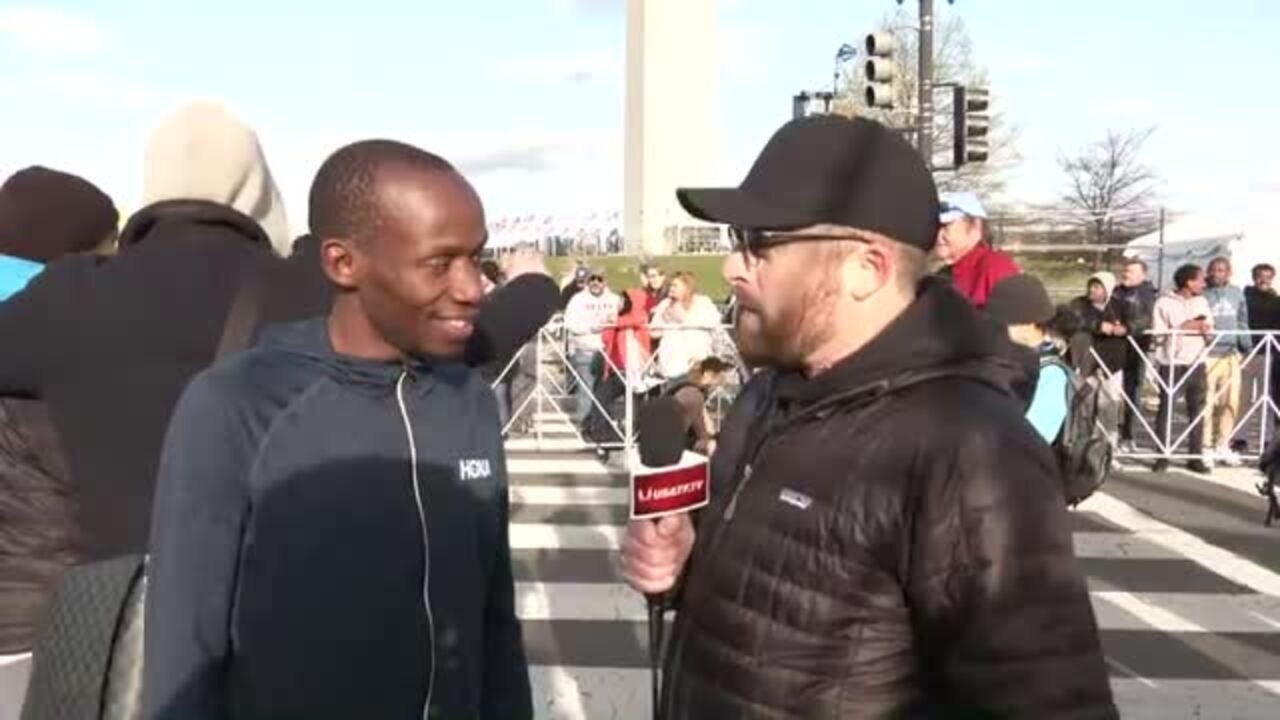
Last October Bor won the USATF 10 Mile Championships in St. Paul, Minn. He ran 46:06 in that race, a championships and course record, but that course was 31 meters downhill and not eligible for record setting. However, Bor and coach Scott Simmons realized that breaking Meyer’s mark was within his capabilities, especially because a faster time run by two-time Olympic medalist, Galen Rupp, was never ratified by USATF. Rupp ran a 10 mile split of 45:54 at the Row River Half-Marathon in Dorena, Ore., in October, 2020, but the paperwork for verifying that record was never completed or approved.
“My coach knew I was in really good shape to run 45 (minutes),” Bor said. “But, the weather’s not good today. The last two miles was just the wind on our face the whole time.”
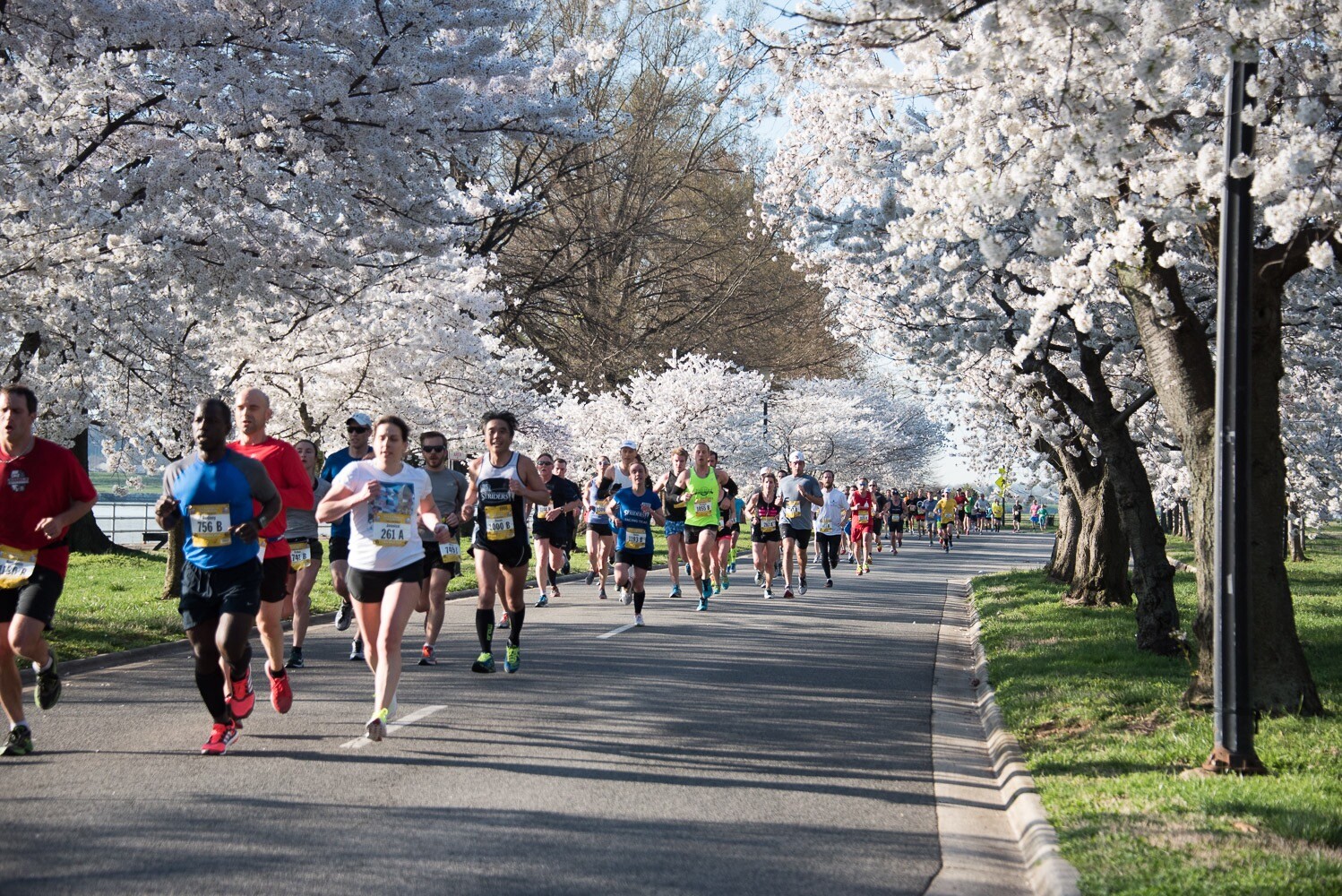
Indeed, it was in those last two miles that Bor and Kidanu did their best to push each other. Kidanu, who represents Asics, was just trying to keep up the pressure on Bor.
“The wind was very strong and it made it very tough,” Kidanu told Race Results Weekly through a translator. He continued: “At the beginning there were a lot of us, but later only a few of us. But the wind made it very difficult. Two of us were able to prevail and we battled one another. In the end, I was able to win.”
In the final sprint to the line, Bor wasn’t really sure where he stood against the clock. The wind was so strong that the 9-mile marker blew down, despite being weighted with sandbags. Also, Bor started the race without his watch.
“Today, I didn’t have my watch so that was not really good because I didn’t know the splits,” Bor said, looking slightly embarrassed. “When I saw the split at 8 miles I knew I needed to run 4:45, but the wind was too much. I just put my head down and just grind, and grind, and grind.”
Biya Simbassa (Under Armour) finished a distant third in 47:09 and finished second in the national championships division. Kenya’s Charles Langat (Asics) was fourth in 47:25, and Jacob Thomson (Under Armour) took fifth –and third in the national championships– in 47:27.
Bor, who will return to the steeplechase during the track season, said that today’s race was all about self-belief.
“It shows if you put something in your head you can accomplish it,” he said.
The women’s competition was a tale of two races.
In the overall competition, Uganda’s Sarah Chelangat (Nike) surged away from the field just before the five mile mark. Her six-mile split was a snappy 4:56, and that put her 22 seconds ahead at that point. Despite running directly into the wind (and alone) in the final miles, she was able to extend her lead to 30 seconds by the ninth mile, and 33 seconds by the finish. Her winning time of 52:04 was excellent given the conditions, but she fell well short of the 51:23 world best for an all-women’s race which would have given her a share of the race’s $50,000 bonus pool.
Behind Chelangat, there was a heated battle for both second place overall and the USATF title. In the ninth mile, Emma Grace Hurley (Atlanta Track Club Elite), Sara Hall (Asics), Nell Rojas (Nike), and Molly Grabill (Unattached) separated themselves from the rest of the pack, all of them trying for the national title. As they crested the final hill before the course turns slightly downhill to the finish line, Hall and Rojas were locked in a sprint for the win. Hall, who is running the Boston Marathon in 15 days, got the best of Rojas, 52:37 to 52:38.
Hall, who turns 40 on April 15, almost skipped today’s race. She just returned from a family trip to Ethiopia where her training didn’t go well because she got sick.
“Honestly, I feel so thankful for today because four days ago I wasn’t going to race,” Hall told Race Results Weekly. “I had COVID last week and training was just so rough. I had a fever. I had two different viruses back to back.”
But like Bor, Hall had the power of self-belief working for her today.
“I think my whole career I’ve just chosen to show up,” Hall said, wrapped in an American flag. “So, just today I decided to show up and I’m really glad I did, especially with Asics sponsoring this event.”
While the wind –which Rojas called “nasty”– was a challenge, Hall saw it as an opportunity to prepare mentally for Boston where conditions can be difficult, too. She thought about the 2018 race where temperatures were just above freezing and athletes had to run through a driving rain storm.
“I was thinking about Boston because, you know, 2018 with that headwind and the storm,” Hall said. “I have Boston in two weeks, so this is just a good time to practice.
Like Bor, Hall had thought about trying for a share in the record bonus pool, but discarded that idea when she felt the power of the wind.
“Normally, I would have wanted to go for the record out here, but with the significant wind I didn’t know if that was going to be in the cards, so I just chose to compete,” she said. “I think this was a great opportunity to do that with Boston coming up.”
With her win here today, Hall has won a total of 12 national titles, four at 10 miles (2017, 2018, 2019, and 2023).
Hurley finished fourth (third American) in 52:41, and Grabill got fifth (fourth American) in 52:42. Defending champion Susanna Sullivan, who led most of the first half of the race, finished seventh (sixth American) in 53:25. She’s running the TCS London Marathon in three weeks and has been doing heavy mileage.
“I’m ready to run a marathon,” she said, smiling, as she changed into warm clothes in the athlete recovery area.
Some 16,000 runners competed today after about 6,000 ran the companion 5-K yesterday (which took place in the rain). Several former race champions were on hand to celebrate the 50th edition, including Kathrine Switzer (1973), Greg Meyer (1983), Eleanor Simonsick (1982 and 1983), and Bill Rodgers (1978 through 1981). Race director Phil Stewart reflected on how the race had endured for so many years and through so many cultural and political changes.
“Through Watergate, gas crises, the fall of the Berlin Wall, the invention of the internet, the first and second Iraq Wars, the 2008 financial crisis, America’s first Black President, two impeachments, an insurrection and the War in Ukraine, runners have returned each spring for what is known as the ‘Runners Rite of Spring,'” Stewart said at last night’s pre-race dinner.
by David Monti
Login to leave a comment
Cherry Blossom Ten Mile Run
The Credit Union Cherry Blossom is known as "The Runner's Rite of Spring" in the Nation's Capital. The staging area for the event is on the Washington Monument Grounds, and the course passes in sight of all of the major Washington, DC Memorials. The event serves as a fundraiser for the Children's Miracle Network Hospitals, a consortium of 170 premier...
more...Defending Champions Return to Run 50th Anniversary Credit Union Cherry Blossom 10 Mile
Organizers of the 50th annual Credit Union Cherry Blossom 10 Mile (CUCB) announced today the first of two rounds of news about this year’s invited field; look for the second announcement to come out on Wednesday, March 29. Today’s announcement features past champions and top-5 finishers expected to toe the respective men’s and women’s starting lines on Sunday, April 2. (The elite women will start first, at 7:18 a.m., followed by the men and the masses at 7:30 a.m.)
Three past champions are part of the women’s elite field: Susanna Sullivan, last year’s women’s champion from Reston, VA; 2021 champion Nell Rojas from Boulder, CO; and 2013 champion Caroline Rotich, a Kenyan who lives in Colorado Springs, CO. As part of the 50th celebration two additional former champions are entered: Colleen De Reuck from Boulder, CO, who won the race in 1998 and still holds the women’s course record of 51:16; and 1973 winner Kathrine Switzer.
Other top women finishers from past 10 Miles include: Carrie Verdon from Boulder, CO, who placed second last year; Paige (Stoner) Wood, last year’s third place finisher from Flagstaff, AZ; Sara Hall, also from Flagstaff, who placed fourth in 2014; and Flagstaff’s Diane Nukuri, who was fifth in 2018.
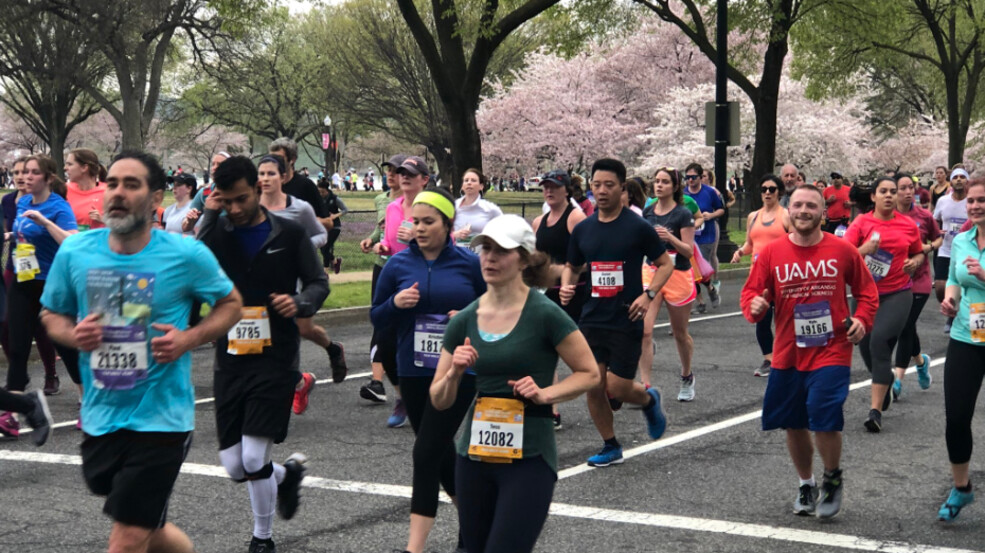
In the men’s race, the top-three finishers from 2022 return. All hailing from Kenya, they include champion Nicholas Kosimbei, second-place runner Wilfred Kimitei, and third-place finisher Shadrack Kimining. They’ll be joined on the starting line by second-place finisher in 2021 Abbabiya Simbassa from Flagstaff, AZ. Returning for the 50th running and starting a little bit farther back in the pack will be Bill Rodgers, from Boxborough, MA, who won the race four consecutive times between 1978 and 1981; placed second in 1982 and third in 1983; and has run CUCB a total of 22 times. Greg Meyer, whose American record of 46:13 still stands 40 years later, will be present for the 50th celebration, and will be holding the tape for the first American male finisher, who will be in hot pursuit of Greg’s mark — there’s a $50,000 shared bonus on the line for any American Records or World Bests set at the event.*
“It’s always a vote of confidence in the reputation of the event to see a large number of top finishers from previous years coming back. I am excited about this year’s set of repeaters, both past and present. This is another factor that will make our 50th anniversary special,” said Event Director Phil Stewart.
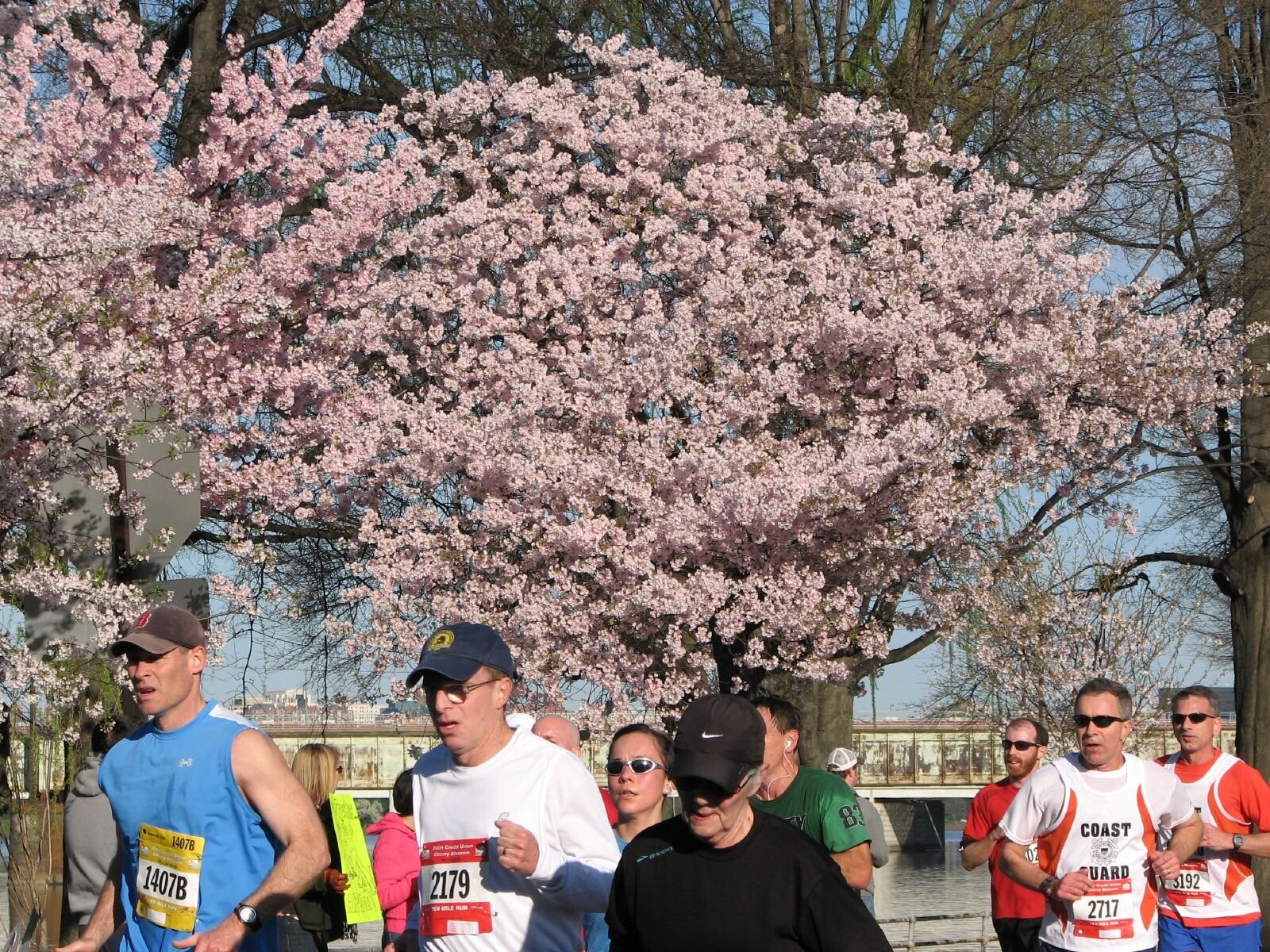
This year, international elite runners will be competing for $40,000 in prize money. The prize purse for Americans totals $25,000, and American runners placing in the top-10 overall are eligible to receive both open and American-only prize money. There is an additional $6,000 in RRCA RunPro Alumni Development Awards — runners eligible for the RRCA awards can also collect top-10 open and/or top-10 American payouts.
There is also a time-based set of bonus payments on offer for fast times:
• $50,000 to be shared by any runners setting a World Best or American Record*• Time incentives of $1,000 for the 1st male to run sub-46 minutes and 1st female to run sub-52 minutes, with an additional $750 on offer should a second male and/or female achieve those same sub-46 and sub-52 minute milestones.
The 10 Mile will serve as the USATF 10 Mile Championships, the RRCA National 10 Mile Championships, and the 2022-2023 Professional Road Racing Organization (PRRO) Circuit Championship.
Winners of the individual 2022-2023 PRRO Circuit events will be eligible for the $10,000 PRRO Super Bonus by winning the PRRO Championship (the bonus is split if an eligible male and female win the Championship). Susanna Sullivan and Nicholas Kosimbei are eligible for the PRRO Super Bonus. Any non-eligible winner of the PRRO Championship Super Bonus will earn $2500.
* If World Best times and American Records for men and women are set by the winners at the event (e.g. four records set), the $50,000 record bonus would be split into four $12,500 shares. If only one World or American record is set for either men or women, the athlete setting the record would get the full $50,000. If an American sets an American record and no other World or American records are set, he or she would receive the entire $50,000 as well. Currently, the times to beat are as follows:• Haile Gebreselassie’s (ETH) World Athletics Best of 44:24, run at the Tilburg 10 Mile in Tilburg, Netherlands, September 4, 2005;• Keira D’Amato’s World Athletics Best in a women’s only race of 51:23, run at the UpDawg 10 Mile in Washington, DC, November 24, 2020;• Greg Meyer’s American Record of 46:13, run at the Cherry Blossom 10 Mile in Washington, DC, March 27, 1983; and• Keira D’Amato’s previously mentioned World Best 51:23, which is also the American Record for a women’s only race.
For reference, the fastest CUCB time among the men’s field announced today is Kosimbei’s 45:15, which tied the event record set by Kenya’s Allan Kiprono in 2012. Among the elite women, Nell Rojas’s 52:13 from 2021 is the best CUCB finish time among this year’s elite entrants. Abbabiya Simbassa’s 46:18 from 2021 is the best CUCB mark among the American men, while Nell’s 52:13 is, of course, the leading mark among the American women.
The inaugural Cherry Blossom Ten Mile in 1973 was won by Sam Bair, in a time of 51:22; the women’s winner was Kathrine Switzer, in a time of 1:11:19; 127 men and 12 women ran that first race. Bill Rodgers holds the honor of most victories, with four consecutive wins between 1978 and 1981. Three women have each won the race three times: Julie Shea (1975-77), Lisa Weidenbach (1985, '89 and '90) and Lineth Chepkurui (2008-10). Ben Beach leads all Cherry Blossom finishers with an active streak of 49 years. A comprehensive media guide detailing a wide variety of statistics from the first 49 CUCB races is available here.
Thanks to Credit Union Miracle Day’s title sponsorship since 2002, the Credit Union Cherry Blossom Run has raised over $10.2 million for the Children’s Miracle Network Hospitals, including $323,000 in 2022.
About the Credit Union Cherry Blossom 10 Mile:
The Credit Union Cherry Blossom races, organized by Cherry Blossom, Inc., a 501c(3) chapter of the Road Runners Club of America, are known as “The Runner’s Rite of Spring®” in the Nation’s Capital. The staging area for Sunday’s 10 Mile is on the Washington Monument Grounds, and the course passes in sight of all of the major Washington, DC Memorials. In 2023, the reimagined Saturday 5K will stage on Freedom Plaza and traverse the route of Presidential Inaugurations down Pennsylvania Avenue before crossing the National Mall in the shadow of the Capitol Building and returning by the same route. The Kids Run is staged on the grounds of the National Building Museum. All events serve as a fundraiser for the Children’s Miracle Network Hospitals, a consortium of 170 premier children’s hospitals across North America. About one-third of the funds raised support Washington, DC’s own Children’s National (“Children’s Hospital”). The event also funds the Road Runners Club of America’s “Roads Scholar” program designed to support up-and-coming U.S. distance running talent.
Credit Union Miracle Day, Inc., a consortium of credit unions and credit union suppliers, is the title sponsor of the Credit Union Cherry Blossom 10 Mile, 5K, Kids Run and Virtual Run. Current presenting sponsors include ASICS, REI Co-op and Wegmans; supporting sponsors include CACI, Co-op Solutions, CUNA Mutual Group, FinisherPix, Gatorade Endurance, Guayaki, MedStar Health, PSCU, Potomac River Running, Suburban Solutions, The MO Apartments and UPS.
The 10 Mile is a proud member of the PRRO Circuit (PRRO.org), a series of this country’s classic non- marathon prize money road races with circuit stops in Washington, DC; Spokane, WA; and Utica, NY. The 2023 10 Mile will serve as the 2022-2023 PRRO Championship.
In addition to being sanctioned by USA Track & Field and the Road Runners Club of America, the Credit Union Cherry Blossom races have earned Gold Level Inspire Certification from the Council for Responsible Sport in recognition of its legacy of commitment to sustainability and thoughtful resource management.
To learn more, visit CherryBlossom.org and follow the event on social media @CUCB and #CUCB2023.
by David Monti
Login to leave a comment
Cherry Blossom Ten Mile Run
The Credit Union Cherry Blossom is known as "The Runner's Rite of Spring" in the Nation's Capital. The staging area for the event is on the Washington Monument Grounds, and the course passes in sight of all of the major Washington, DC Memorials. The event serves as a fundraiser for the Children's Miracle Network Hospitals, a consortium of 170 premier...
more...Thomson and Tuliamuk came out on top at USATF Half marathon championships
FORT WORTH, TX — The racing strategies were different, but the end result was the same for Jacob Thomson and Aliphine Tuliamuk Sunday morning in Fort Worth, Texas, as both runners claimed victory at the USATF Half Marathon Championships.
On-demand race videos and coverage of the USATF Half Marathon Championships hosted by the Cowtown Marathon, the second stop on the 2023 USATF Running Circuit.
A conservative early pace in the men’s race kept together the entire starting field, as Olympian Jared Ward jumping to the lead and taking on the pacing duties. He was joined up front by fellow Saucony pro Brian Shrader, as the 18-man lead pack passed through 5 km in 15:23. Just past the 5 km split, Thomson decided to push the pace, jumping to the lead and opening up a nearly five second gap. Thomson would continue to string the field out, running 30 seconds faster for the next 5 km split, as the Under Armour pro came through 10 km in 30:16.
As Thomson came through 10 km, defending champion Leonard Korir, 2022 runner-up Futsum Zienasellassie, Shrader, and Abbabiya Simbassa led the pack, bridging the divide and catching up to Thomson. The quickening of pace diminished the lead group, leaving a pack of 10 with half the race to go.
As mile 10 came about, Shrader jumped to the lead and started to push the pace. The pack of 10 strung out again, with only Thomson, Korir, Zienasellassie, and Simbassa able to maintain contact. For the next three miles, the five-man pack ran stride for stride, each feeling out when the right time to make a push to the finish would be. With one final turn before the finish, Thomson made the decisive move, surging ahead, using the momentum from the final turn to propel himself into the lead.
Thomson locked his eyes on the finish, pumping his arms wildly, and in the end was able to fend off the field to claim his first USATF title in 1:02:38. A stride behind Thomson, Korir and Zienasellassie battled to the finish for the second year in a row, with Korir able to withstand the kick of Zienasellassie, placing second in 1:02:39.
Zienasellassie carried his momentum from his USATF Marathon Championships victory in December to earn another top three USATF Running Circuit finish, finishing with the same time of Korir in 1:02:39. Simbassa came home fourth overall in 1:02:41, placing just ahead of Shrader, who hung on to take fifth in 1:02:43. Of note, Thomson, Korir, and Shrader will meet again next Saturday on the streets of Jacksonville, Florida, as all three are entered in the USATF 15 km Championships. Scott Fauble finished sixth in 1:02:49, while Tyler McCandless also broke the 63-minute barrier with his seventh-place finish of 1:02:52. Colin Bennie finished eighth in 1:03:08, Colin Mickow took home ninth place in 1:03:22, and Matt McDonald claimed tenth in 1:03:43, all earning points towards the USATF Running Circuit overall standings.
Unlike the conservative pace of the men’s early miles, the women’s field got off the start line and immediately hit an honest pace. HOKA Northern Arizona elite teammates Lauren Paquette and Tuliamuk jumped to the front, with Paquette in particular pushing the pace.
As Paquette led the way through the first 5 km, passing through the split in 16:31, she and Tuliamuk built an early ten second lead over the rest of the field. That lead would grow to 50 seconds over the next 5 km, as the duo came through 10 km in 32:45. Paquette did much of the pace setting over the next 5 km, with Tuliamuk just off her shoulder, both coming through 15 km in 49:16, now over a minute and a half clear of the chase pack.
At this point in the race, Tuliamuk took over the lead, and while for a moment it looked as if the two would continue to run stride for stride, Tuliamuk’s move to the front pushed the pace just enough to where Paquette started to fall off the pace and Tuliamuk built a few second lead over her teammate over the next mile.
Tuliamuk continued to push, building her lead to 12 seconds with one mile to go. As Tuliamuk came down the final straightaway, she glanced over her shoulder, then charged ahead to cross the finish line with a smile on her face, claiming her seventh USATF title in 1:09:36. Behind Tuliamuk, Paquette held on and finished a fantastic race in second place in 1:09:51.
The two teammates embraced at the finish line and then watched the rest of the top women race to the finish. Veteran Nell Rojas pulled away from the chase pack of four women over the final two miles of the race, separating herself to easily cross the finish in third place, clocking 1:11:08. Molly Grabill earned a fourth-place finish in 1:11:16, while Jessa Hanson took fifth in 1:11:26. Tuliamuk’s and Paquette’s other teammate in the race, Paige Wood, finished sixth overall in 1:11:32. Rounding out the top ten finishers, Katja Goldring scored a seventh-place finish in 1:12:36. Olympian Molly Seidel finished eighth in 1:13:07, while Bridget Belyeu and Lindsey Bradley finished ninth and tenth in 1:15:05 and 1:15:12.
The USATF Running Circuit resumes next Saturday, March 4, as the USATF 15 km Championships take place in Jacksonville, Florida, with the Gate River Run hosting the third stop on the circuit
Login to leave a comment
B.A.A. announces women’s elite field for 127th Boston Marathon
The Boston Athletics Association (B.A.A.) has revealed the women’s elite field for the 127th Boston Marathon on Monday, April 17. The field features 16 women who have run under 2:21, including the 2022 world marathon champion Gotytom Gebreslase and two-time Boston champion Edna Kiplagat.
Three other notable athletes who are making their Boston debuts are 2022 world championship bronze medallist Lonah Salpeter of Israel, 2022 NYC Marathon champion Sharon Lokedi, and 2022 Valencia Marathon champion (and third fastest woman of all-time 2:14:58) Amane Beriso of Ethiopia.
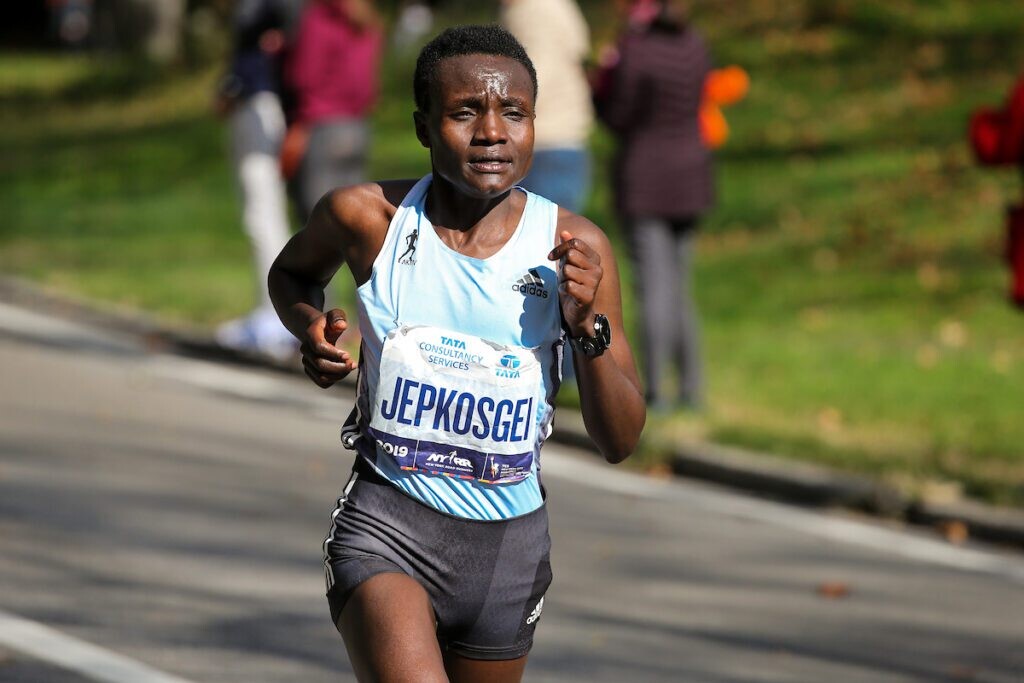
“I am very excited to run the B.A.A. Boston Marathon this year,” said Salpeter in a press release. “It has always been my dream to run on this course and to experience the incredible atmosphere.” Salpeter is coming off a second-place finish at the New York City Marathon in November and a bronze medal in the 10,000m at the European Championships in August.
Last year’s second and third-place finishers in Boston, Ababel Yeshaneh of Ethiopia and Mary Ngugi of Kenya, both return with hopes of claiming the top spot on the podium. Yeshaneh came within four seconds of victory, while Ngugi placed second and third in Boston in back-to-back years.
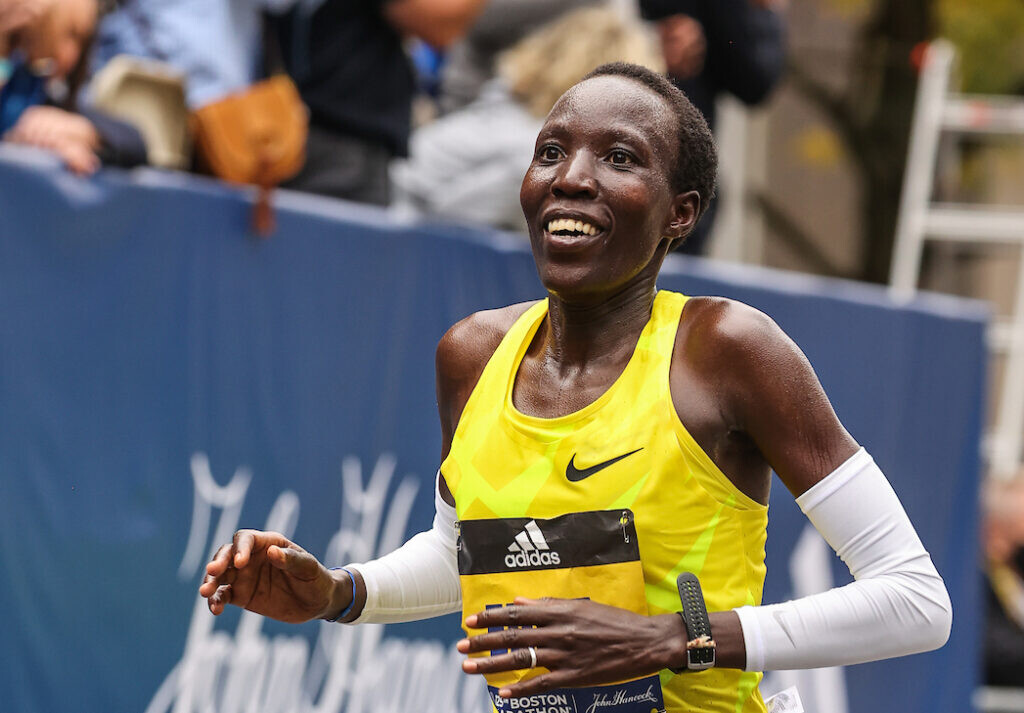
Also back is Joyciline Jepkosgei of Kenya, a past winner of the New York City and London Marathons. Jepkosgei fell shy of her expectations in her 2022 debut, with a seventh-place finish. She will look to better her time of 2:24:43 in 2023.
Among the American contingent are Sara Hall, Aliphine Tuliamuk, Emma Bates, Nell Rojas and 2018 champion Des Linden. Rojas has finished as the top American at Boston two years in a row (fifth in 2021 and 10th, 2:25:57 in April 2022), while Hall and Bates were fifth and seventh in the marathon at the 2022 World Athletics Championships in Eugene, Ore.
Canada will be well represented in Boston with three athletes on the elite list. Liza Howard, the top Canadian at the 2022 Chicago Marathon, will lead the way with the top qualifying mark of 2:35:29. Howard is an up-and-coming marathoner out of Toronto, who had a breakthrough 2022 with a 19th-place finish in Chicago and a 12th-place result at the Canadian 10K Championships in Ottawa last May.
Other Canadians on the elite list are 2004 1,500m Olympian and masters athlete Carmen Hussar, who has returned to racing recently, coming off a Boxing Day 10 Miler win in Hamilton, Ont., and Julie Lajeunesse of Montreal, with a personal best of 2:44:49 from the 2022 Chicago Marathon.
by Marley Dickinson
Login to leave a comment
Boston Marathon
Among the nation’s oldest athletic clubs, the B.A.A. was established in 1887, and, in 1896, more than half of the U.S. Olympic Team at the first modern games was composed of B.A.A. club members. The Olympic Games provided the inspiration for the first Boston Marathon, which culminated the B.A.A. Games on April 19, 1897. John J. McDermott emerged from a...
more...Who Wore Which Shoes at the New York City Marathon?
The running shoe hype train was high in New York City with a few fast yet-to-be-released shoes in the men’s and women’s elite fields.
For a few miles early in the New York City Marathon, Desi Linden surged into the lead of the women’s elite field. The two-time Olympian and 2018 Boston Marathon champion didn’t think she’d run away and win the race that way, but she was just trying to keep the pace honest.
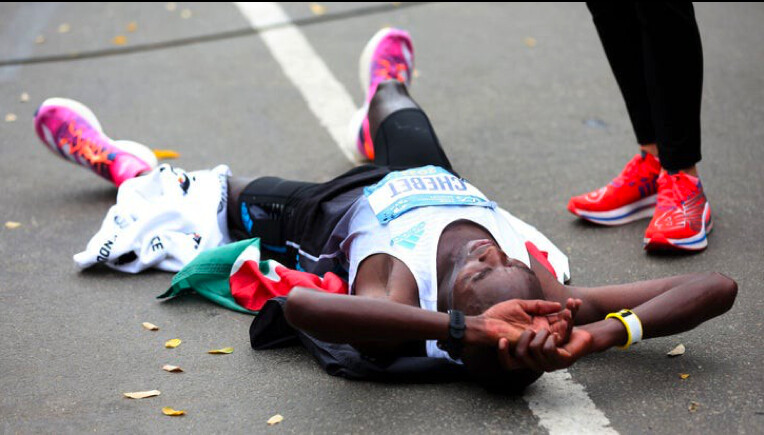
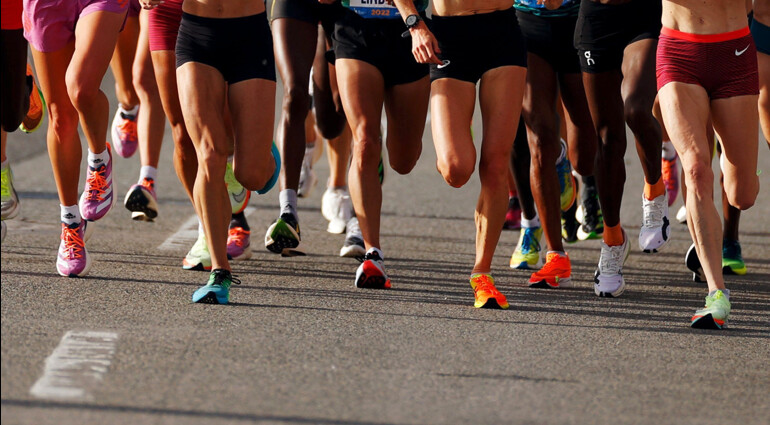
However, hiding in plain sight on her feet as she was off the front of the pack was a yet-to-be-released pair of orange, white and black Brooks prototype racing shoes. A day later, no one is willing to give up any details of the shoe, except that, like all of the other top-tier racing shoes in both the men’s and women’s elite fields, it features a carbon plate embedded in a hyper-responsive foam midsole. And although it’s all in accordance with World Athletics regulations, it won’t be released in Spring 2024 … so we’ll all have to wait a bit to see what that shoe is all about.
Linden’s shoes weren’t the only speedy outliers among the top 25 men’s and women’s finishers. While Nike, Adidas and ASICS shoes were the most prevalent brands among elite runners, there were several shoes that aren’t yet available to the public.
For example, the first runner to cross the finish line of this year’s New York City Marathon, women’s winner Sharon Lokedi, was wearing a pair of Under Armour Velociti Elite shoes. That’s notable for several reasons—because it was Lokedi’s first marathon, because the shoe won’t become available until early 2023 and because it’s the first podium finish at a major international marathon for a runner wearing Under Armour shoes.
There were also three pairs of yet-to-be-released Hoka Rocket X 2 shoes on the feet of three Hoka NAZ Elite runners — two of whom set new personal best times, Aliphine Tuliamuk (7th, 2:26:18) Matthew Baxter (12th, 2:17:15). Those fluorescent yellow shoes with orange, white and blue accents and blue laces were on the feet of Hoka pros at the Boston Marathon in April and Ironman World Championships in Hawaii in October, but they won’t be released to the public until late February or early March.
Meanwhile, the winner of the men’s race, Evans Chebet, was wearing a pair of Adidas Adizero Adios Pro 3, a shoe worn by four other runners in the top 25 of the men’s race and six among the women’s top 25, making it the second most prevalent model among the elites. Oddly, that was the same shoe worn by Brazil’s Daniel do Nascimento, who went out at record-setting sub-2:03 pace on his own, only to crumple to the ground at mile 21 after succumbing to fatigue and cramping.
The most common shoe among the top finishers was the Nike ZoomX Vaporfly Next% 2, which was on the feet of 11 of the 50 runners among the women’s and men’s top 25 finishers. There were eight runners wearing either the first or second version of the ASICS MetaSpeed Sky.
Six runners wore Nike Air Zoom Alphafly Flyknit shoes, three wore Nike Air Zoom Alphalfy NEXT% 2. There were two pairs of On Cloudboom Echo 3 in the field, including those worn by Hellen Obiri who finished sixth while running a 2:25:49 in her marathon debut, while three runners wore Puma Fast R Nitro Elite.
And what about actor Ashton Kutcher? He wore a pair of purple Nike Air Zoom Alphafly NEXT% Flyknit shoes and finished in a very respectable 3:54:01.
Matt James, the former lead of the Bachelor, finished in 3:46:45 with Shalane Flanagan as his guide wearing a pair of New Balance FuelCell Comp Trainer shoes. Flanagan wore Nike Air Zoom Alphafly Next% Flyknit shoes, as did Meghan Duggan, an Olympic gold medalist hockey player who ran a solid 3:52:03. Lauren Ridloff, actress from “The Walking Dead,” ran in a pair of Brooks Glycerin 20 and finished in 4:05:48, while Chelsea Clinton, daughter of Bill and Hillary Clinton finished in 4:20:34 wearing a pair of Brooks Ghost 14 and Tommy Rivers Puzey (aka “Tommy Rivs,” a former elite runner who survived a deadly bout of cancer in 2020, wore a pair of Craft CTM Ultra Carbon Race Rebel and finished in 6:13:54.
Here’s a rundown of what was on the feet of the top 25 women’s and men’s finishers in the Big Apple.
1. Sharon Lokedi (Kenya) 2:23:23 — Under Armour Velociti Elite
2. Lonah Salpeter (Israel) 2:23:30 — Nike ZoomX Vaporfly Next% 2
3. Gotytom Gebreslase (Ethiopia) 2:23:39 – Nike ZoomX Vaporfly Next% 2
4. Edna Kiplagat (Kenya) 2:24:16 — Nike ZoomX Vaporfly Next% 2
5. Viola Cheptoo (Kenya) 2:25:34 — Adidas Adizero Adios Pro 3
6. Hellen Obiri (Kenya) 2:25:49 — On Cloudboom Echo 3
7. Aliphine Tuliamuk (USA) 2:26:18 — Hoka Rocket X 2
8. Emma Bates (USA) 2:26:53 — ASICS MetaSpeed Sky+
9. Jessica Stenson (Australia) 2:27:27 – ASICS MetaSpeed Sky
10. Nell Rojas (USA) 2:28:32 — Nike Air Zoom Alphafly Flyknit
11. Lindsay Flanagan (USA) 2:29:28 – ASICS MetaSpeed Sky
12. Gerda Steyn (South Africa) 2:30:22 — Adidas Adizero Adios Pro 3
13. Stephanie Bruce (USA) 2:30:34 — Hoka Rocket X 2
14. Caroline Rotich (Kenya) 2:30:59 — ASICS MetaSpeed Sky+
15. Keira D’Amato (USA) 2:31:31 — Nike Air Zoom Alphafly Flyknit
16. Des Linden (USA) 2:32:37 — Brooks Prototype
17. Mao Uesugi (Japan) 2:32:56 — Adidas Adizero Adios Pro 3
18. Eloise Wellings (Australia) 2:34:50 — Adidas Adizero Adios Pro 3
19. Sarah Pagano (USA) 2:35:03 — Adidas Adizero Adios Pro 3
20. Grace Kahura (Kenya) 2:35:32 — Nike ZoomX Vaporfly Next% 2
21. Annie Frisbie (USA) 2:35:35 — Puma Fast R Nitro Elite
22. Molly Grabill (USA) 2:39:45 — Nike Air Zoom Alphafly NEXT% Flyknit
23. Kayla Lampe (USA) 2:40:42 — ASICS MetaSpeed Sky+
24. Maegan Krifchin (USA) 2:40:52 — Adidas Adizero Adios Pro 3
25. Roberta Groner (USA) 2:43:06 — Nike Air Zoom Alphafly NEXT% 2
1. Evans Chebet (Kenya) 2:08:41 — Adidas Adizero Adios Pro 3
2. Shura Kitata (Ethiopia) 2:08:54 — Nike ZoomX Vaporfly Next% 2
3. Abdi Nageeye (Netherlands) 2:10:31 — Nike ZoomX Vaporfly Next% 2
4. Mohamed El Aaraby (Morocco) 2:11:00 — ASICS MetaSpeed Sky+
5. Suguru Osako (Japan) 2:11:31 — Nike ZoomX Vaporfly Next% 2
6. Tetsuya Yoroizaka (Japan) 2:12:12 — Nike ZoomX Vaporfly Next% 2
7. Albert Korir (Kenya) 2:13:27 — Adidas Adizero Adios Pro 3
8. Daniele Meucci (Italy) 2:13:29 — ASICS MetaSpeed Sky+
9. Scott Fauble (USA) 2:13:35 — Nike Air Zoom Alphafly NEXT% 2
10. Reed Fischer (USA) 2:15:23 — Adidas Adizero Adios Pro 3
11. Jared Ward (USA) 2:17:09 — Saucony Endorphin Pro 3
12. Matthew Baxter (New Zealand) 2:17:15 — Hoka Rocket X 2
13. Leonard Korir (USA) 2:17:29 — Nike ZoomX Vaporfly Next% 2
14. Matthew Llano (USA) 2:20:04 — Under Armour Velociti Elite
15. Olivier Irabaruta (Burundi) 2:20:14 — On Cloudboom Echo 3
16. Hendrik Pfeiffer (Germany) 2:22:31 — Puma Fast R Nitro Elite
17. Jonas Hampton (USA) 2:22:58 — Adidas Adizero Adios Pro 3
18. Alberto Mena (USA) 2:23:10 — Nike ZoomX Vaporfly Next% 2
19. Jacob Shiohira (USA) 2:23:33 — Nike Air Zoom Alphafly Flyknit
20. Edward Mulder (USA) 2:23:42 — Nike Air Zoom Alphafly Flyknit
21. Jordan Daniel (USA) 2:24:27 — Nike ZoomX Vaporfly Next% 2
22. Nathan Martin (USA) 2:25:27 — ASICS MetaSpeed Sky+
23. Jeff Thies (USA) 2:25:45 — Nike Air Zoom Alphafly NEXT% 2
24. Shadrack Kipchirchir (USA) 2:28:15 — Puma Fast R Nitro Elite
25. Abi Joseph (USA) 2:29:16 — Nike Air Zoom Alphafly Flyknit
by Outside
Login to leave a comment
The Kenyan duo won the elite races in 2:23:23 and 2:08:41 at the NYC Marathon having to make up significant ground on the long-time leaders
Sharon Lokedi displayed remarkable discipline to win the TCS New York City Marathon on her debut at the distance, while Evans Chebet’s patience paid off to win the men’s contest at the World Athletics Elite Platinum Label road race on Sunday March 6.
Lokedi flew under the radar heading into the women’s race as most of the focus was on world champion Gotytom Gebreslase, two-time world 5000m champion Hellen Obiri, who was making her marathon debut, and world bronze medallist Lonah Chemtai Salpeter.

All four women featured in the large lead pack for the first half of the race as they passed through 10km in a conservative 34:24 before reaching the half-way point in 1:12:17. A few kilometres later, the pack had been whittled down to eight women, with two-time world champion Edna Kiplagat among them.
By 30km, however, three women had broken away from the rest of the field as Gebreslase, Obiri and Kenya’s Viola Cheptoo reached that checkpoint 1:42:27. At that point, Salpeter, Lokedi and Kiplagat were in a five-woman chase pack about 11 seconds adrift.
A few kilometres later, Salpeter and Lokedi caught the lead trio, then Cheptoo began to fade. It left Obiri, Gebreslase, Lokedi and Salpeter as the only four women in contention as they raced through Central Park in the closing stages.
Of those four, Obiri was the first to fall back, but she was far enough into the race to know that her debut marathon would not be a bad one. Somewhat surprisingly, Gebreslase was the next to slip out of contention, the world champion resigning herself to the third step on the podium.
It then left Salpeter and Lokedi to duel for the victory and for a moment it seemed as though Salpeter was the more comfortable. But with one mile to go, Lokedi dug deep and started to pull away from the Israeli runner.
Lokedi reached the finish line in 2:23:23 to win by seven seconds from Salpeter. Gebreslase took third place in 2:23:39 with Kiplagat, nine days shy of her 43rd birthday, coming through to take fourth place in 2:24:16 – more than four minutes quicker than her winning time in this race in 2010.
Cheptoo held on for fifth place in 2:25:34 and Obiri finished sixth in 2:25:49. Olympian Aliphine Tuliamuk was the top US finisher in seventh, 2:26:18.
“It was amazing,” said the US-based Lokedi. “I came in just wanting to be in the thick of the race. I knew I was strong and had really good training, so I wanted to go in and put myself in it and see where I ended up. I expected to run well, but it ended up being an even better outcome than I had hoped for.”
The men’s race played out quite differently, as South American record-holder Daniel Do Nascimento made an early break from the rest of the field.
The Brazilian led by 97 seconds at 10km, reached in 28:42 – just two seconds slower than his 10,000m track PB – and went on to reach half way in 1:01:22, more than two minutes ahead of the rest of the field and well inside course record pace.
A six-man chase pack – which included Chebet, Olympic silver medallist Abdi Nageeye, and 2020 London Marathon champion Shura Kitata – went through the half-way point in a more comfortable 1:03:35.
Do Nascimento continued to lead, although his lead started to wane – especially when he had to briefly take a visit to one of the road-side portable toilets. He passed through 30km in 1:29:09, now just over a minute ahead of Chebet, who had broken away from the rest of the chasers. By 20 miles, Do Nascimento’s lead was down to just 40 seconds. Not long after, and clearly struggling, he stopped running and crashed to the ground.
While medics helped Do Nascimento, Chebet cruised past. The Kenyan, who had won the Boston Marathon earlier this year, found himself with a 30-second lead over a three-man chasing group which included Kitata and Nageeye.
Despite a strong finish from Kitata, Chebet managed to hold on to the lead and crossed the finish line in 2:08:41. Kitata followed 13 seconds later, while Nageeye took third place in 2:10:31.
“The race was hard for me, but I was thankful for my team and have so much gratitude toward my coach,” Chebet said. “My team gave me motivation and I know that after winning Boston I could come to New York and also do well.”
Leading results
Women
1 Sharon Lokedi (KEN) 2:23:232 Lonah Salpeter (ISR) 2:23:303 Gotytom Gebreslase (ETH) 2:23:394 Edna Kiplagat (KEN) 2:24:165 Viola Cheptoo (KEN) 2:25:346 Hellen Obiri (KEN) 2:25:497 Aliphine Tuliamuk (USA) 2:26:188 Emma Bates (USA) 2:26:539 Jessica Stenson (AUS) 2:27:2710 Nell Rojas (USA) 2:28:32
Men
1 Evans Chebet (KEN) 2:08:412 Shura Kitata (ETH) 2:08:543 Abdi Nageeye (NED) 2:10:314 Mohamed El Aaraby (MAR) 2:11:005 Suguru Osako (JPN) 2:11:316 Tetsuya Yoroizaka (JPN) 2:12:127 Albert Korir (KEN) 2:13:278 Daniele Meucci (ITA) 2:13:299 Scott Fauble (USA) 2:13:3510 Reed Fischer 2:15:23
by World Athletics
Login to leave a comment
TCS New York City Marathon
The first New York City Marathon, organized in 1970 by Fred Lebow and Vince Chiappetta, was held entirely in Central Park. Of 127 entrants, only 55 men finished; the sole female entrant dropped out due to illness. Winners were given inexpensive wristwatches and recycled baseball and bowling trophies. The entry fee was $1 and the total event budget...
more...2022 New York City Marathon Sharon Lokedi and Evans Chebet Complete a Kenyan Sweep
In record heat for November, Kenyans dominate the New York City Marathon.
Evans Chebet was among the runners who watched as Daniel do Nascimento separated himself from the rest of the men’s field at the New York City Marathon on Sunday. Do Nascimento, a 24-year-old Brazilian who is known for being — what is the word? — assertive, was a blur as he surged into the lead, then a speck off in the distance, and then gone from view entirely.
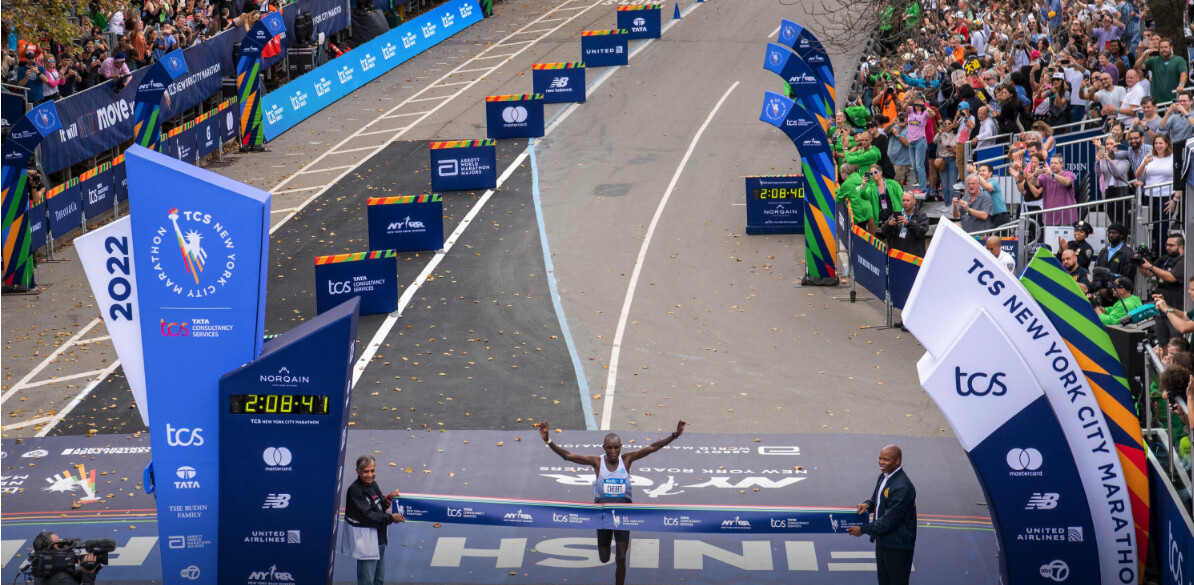
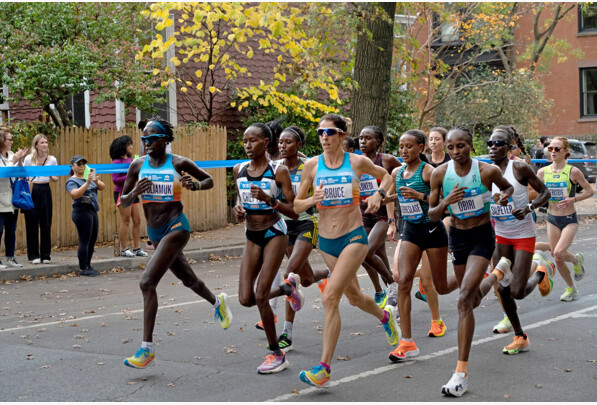
Chebet, a soft-spoken Kenyan who arrived in New York having already won the Boston Marathon this year, opted to exercise patience. Sure enough, as he approached the 21st mile of Sunday’s race, he saw do Nascimento again: face down by the side of the road, being tended to by medical personnel.
“I felt bad for him,” Chebet said in Swahili through a translator, “but I had to continue the race.”
On an unseasonably warm day, Chebet survived both the conditions and the competition, winning in 2 hours 8 minutes 41 seconds to complete a clean sweep for Kenyan men in all six of the world marathon majors this year. Chebet, 33, did his part by winning two of them — and two of the toughest. Of course, considering what Chebet had done in Boston, no one was surprised to see him tackle New York with great composure.
“Boston was actually harder,” said Chebet, who wore his laurel wreath to his news conference.
The women’s finish was much more unexpected. Sharon Lokedi, a Kenyan who raced in college at Kansas, was fearless in her marathon debut, breaking free from a celebrated field to win in 2:23:23.“Perfect weather for me,” said Lokedi, 28, who splits her time between Kenya and Flagstaff, Ariz., where she trains with the Under Armour-sponsored Dark Sky Distance group. “I didn’t expect to win. I expected to run well. But it ended up being a good outcome.”
Lokedi left an all-star cast in her wake. Lonah Chemtai Salpeter, a Kenyan-born Israeli who arrived in New York with the fastest time in the field, finished second. Gotytom Gebreslase of Ethiopia, the reigning world champion, was third. Edna Kiplagat of Kenya, who, at 42, is one of the world’s most decorated marathoners, was fourth. And Viola Cheptoo of Kenya, last year’s runner-up, was fifth.
“It was hot, but I was really prepared,” said Lokedi, who was the N.C.A.A. champion in the 10,000 meters in 2018. “I picked up water at every station to pour on myself.”Do Nascimento, who set a South American record when he finished third in the Seoul Marathon this year in 2:04:51, was the story in New York for much of the morning — until it all began to go poorly for him. Easily recognizable in his lavender tights and space-age sunglasses, he built a two-minute lead more than halfway through the race. But others in the field had seen him try that sort of bold strategy before.In brutal conditions at the Tokyo Olympics last year, do Nascimento was among the leaders when he collapsed in scenes that were vaguely horrifying and was forced to withdraw.
On Sunday, his superhuman pace was beginning to slow when he pulled off the course for an 18-second pit stop at a portable toilet. He emerged with his lead intact, albeit narrower, but it was clear that he was in trouble. About six miles short of the finish, he sank to the pavement and was forced to abandon the race.
“I want to feel sorry for him when I saw him on the ground,” said Abdi Nageeye of the Netherlands, who finished third. “But I was like, ‘Come on, man, this is the second time. You did that in the Olympics.’ ”
A spokesman for the marathon said do Nascimento was recovering at his hotel.
It was not an easy day for anyone. Galen Rupp, a two-time Olympic medalist who was making his long-awaited New York debut, dropped out about 18 miles into the race with a hip injury. And Shura Kitata of Ethiopia, who finished second behind Chebet, lumbered onto the stage for his news conference as if his legs were made of concrete. A race official handed Kitata a giant bag of ice, which he placed on his thighs.“It was very hot,” he said through a translator, “and that made it very tough.”
It was the warmest marathon on record since the race was moved to its traditional early November date in 1986. The temperature in Central Park was 73 degrees Fahrenheit at 11 a.m., shortly before the elite runners began to cross the finish line.
Scott Fauble, 31, was the top American on the men’s side, finishing ninth — a solid result coming the morning after he signed a new sponsorship deal with Nike. Fauble, who was also the top American finisher at the Boston Marathon this year, had been without a sponsor for months.
After agreeing to terms on a contract at dinner on Saturday night, Fauble took an Uber to the Nike store in Manhattan to pick up sneakers. The rest of his racing gear arrived at his hotel later that night.
“It’s quite a rush to get your singlet for the next day at 10 p.m. the night before the race,” he said.
On the women’s side, three Americans finished in the top 10. Aliphine Tuliamuk was seventh, Emma Bates was eighth and Nell Rojas was 10th. Tuliamuk, 33, who won the marathon at the U.S. Olympic trials in 2020 and gave birth to her daughter, Zoe, in January 2021, had not raced in a marathon since she injured herself at the Tokyo Games last year. On Sunday, she finished in a personal-best time of 2:26:18.
“I think that I excel when the conditions are not perfect,” Tuliamuk said. “I rise to the occasion, and I believe that today that was the case.”
Still, she had to overcome some adversity. In early September, she said, she experienced swelling in one of her ankles that forced her to take a couple of weeks off from training.
“In the back of my mind, I wished that I had a few more weeks” to train, she said. “But I also decided to focus on gratitude because I didn’t know that I was going to be here. And the fact that I was able to put in some solid training and had a chance to be competitive, I was just very grateful for that.”Gina Gregorio always watches the race from the corner of Warren Street and Fourth Avenue. This year she held signs that read, “Run to the Polls.”
“I love it when we’re right before the election because we can actually ask people to get out to vote, and it’s like nonpartisan, although I have had partisan signs before because I feel like it’s a great place to have your voice heard,” Gregorio said.
Login to leave a comment
TCS New York City Marathon
The first New York City Marathon, organized in 1970 by Fred Lebow and Vince Chiappetta, was held entirely in Central Park. Of 127 entrants, only 55 men finished; the sole female entrant dropped out due to illness. Winners were given inexpensive wristwatches and recycled baseball and bowling trophies. The entry fee was $1 and the total event budget...
more...Is Top Miler Jenny Simpson About to Become a Marathoner?
The Olympic medalist signs with Puma and moves to the roads—although she still hits the track in spikes.
Jenny Simpson refuses to come out and say she’s training for a marathon. But all signs point to her training for a marathon.
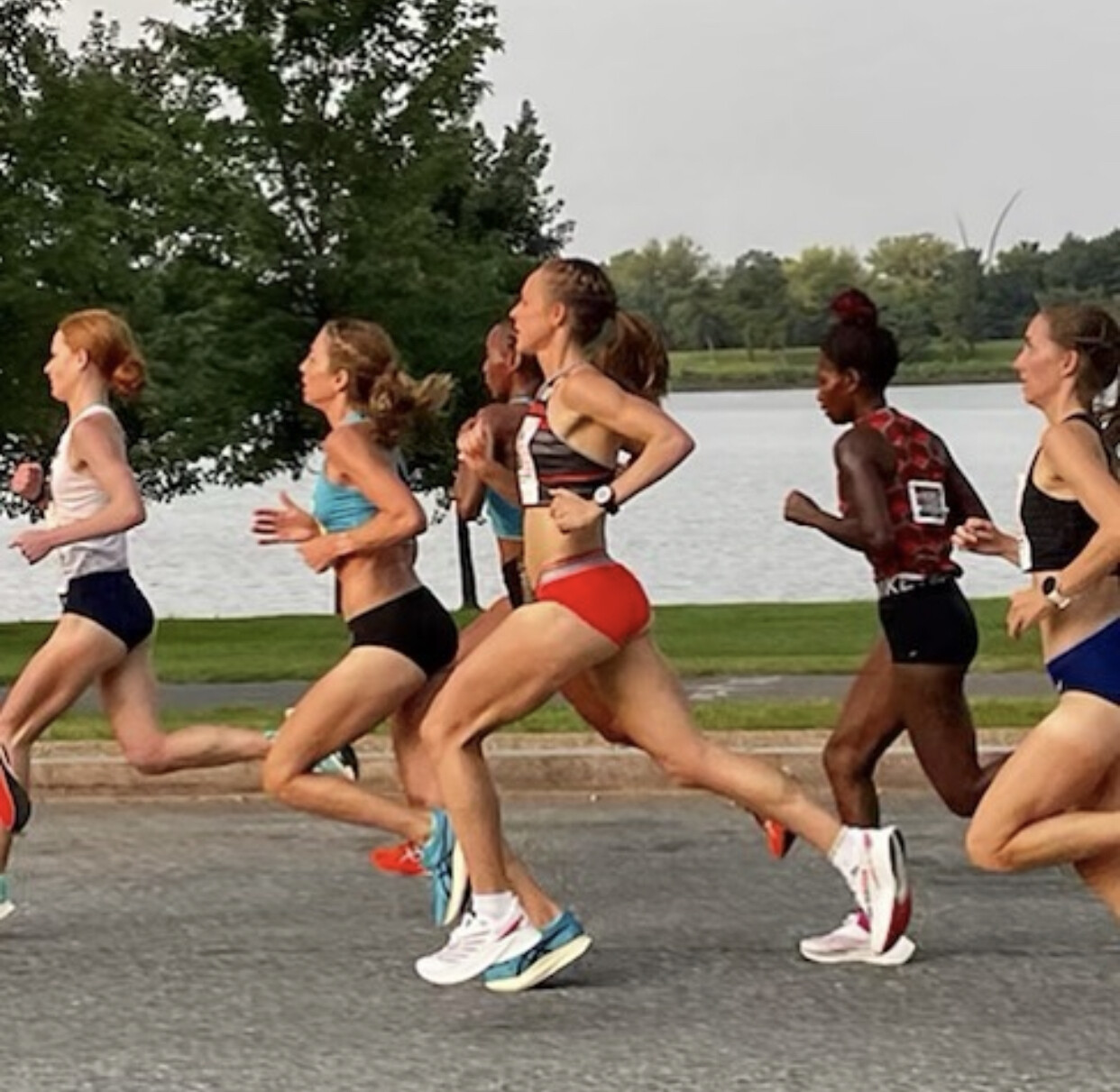
She’s consistently running the highest mileage of her life (85 miles per week). And she has a new sponsor, Puma.
“It’s correct that my emphasis is on the roads,” she said on an October 6 call with Runner’s World. “These next few years is an exploration in the distances and some of the challenges in running that I haven’t tried yet. That’s what I’m most excited about.”
Simpson, 36, has been a stalwart on the track since she was in college at the University of Colorado, going to Europe every summer and building her training around Olympics and World Championships cycles. Between 2011 and 2017, she won four global medals: a gold and two silvers in the World Championships 1500 meters, and Olympic bronze in the same event.
Through 2019, she made every U.S. team going back to 2007. But the pandemic put a sudden halt to that streak. In 2021, she made the finals of the 1500 meters at the Olympic Trials for the postponed Games in Tokyo, but she finished 10th.
“I had such an incredible run on the track,” Simpson said. “And then, just like a lot of people starting in 2020, the vision that I had for those next few years of my career got derailed.”
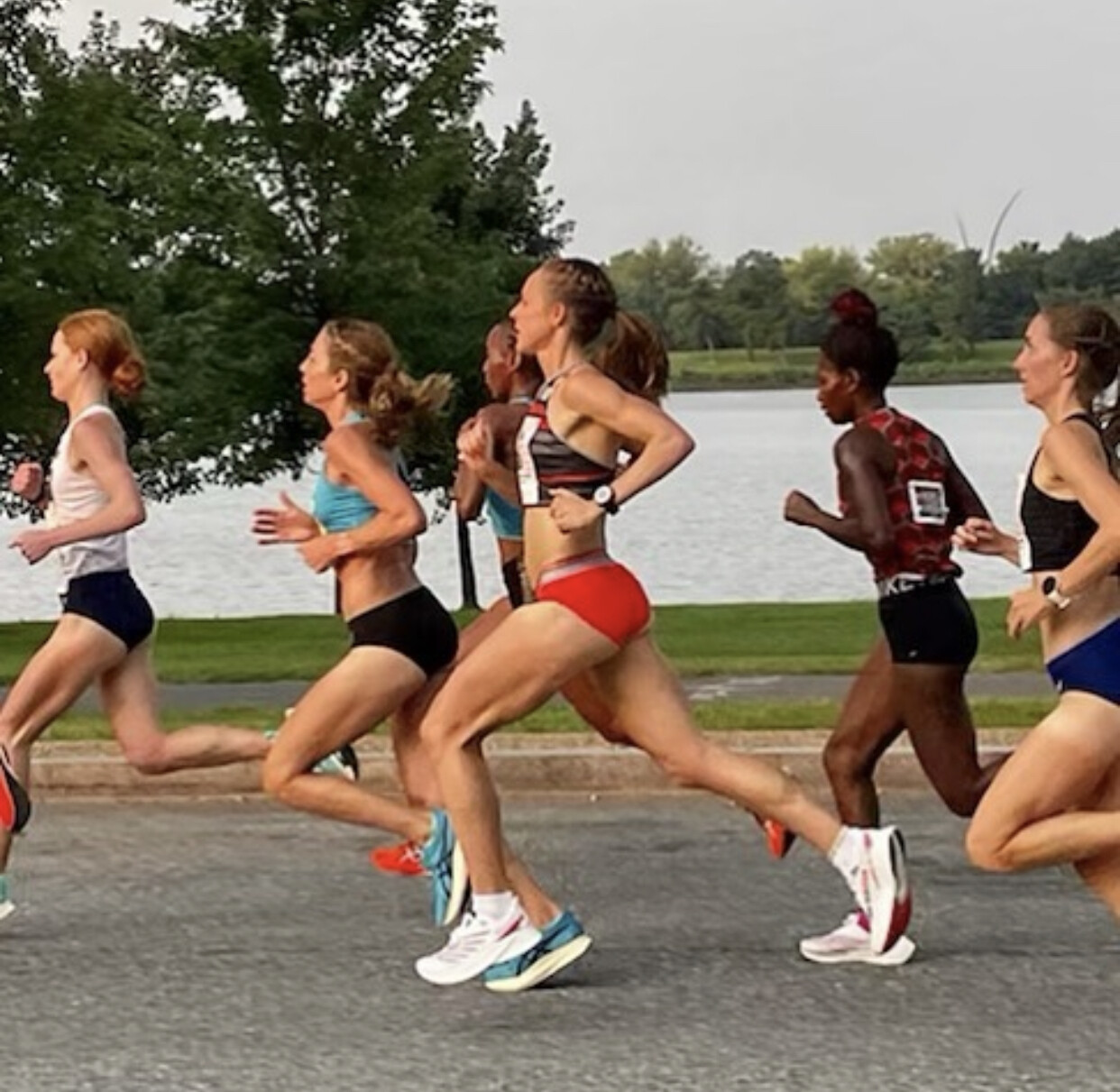
That fall, she began her transition to the roads, racing the Cherry Blossom 10-miler and finishing second in a sprint finish to Nell Rojas. But at the end of the year, Simpson’s life was upended.
Simpson suffered a stress reaction in her right hip, which took a long time to heal. She was diagnosed with a sports hernia in one of her adductor muscles, which pulled tissue away from one of the pubic bones. “A lovely place to be injured and have people poking and prodding,” Simpson said.
It was by far the most serious injury of her career, but she was able to avoid surgery with hours of physical therapy, working on her adductors, hamstrings, core, and glutes—anything near the hips. When she returned to running, she had several months of stopping and starting until she was finally pain-free.
At the same time, she learned that her future with New Balance—the company that had sponsored her since the beginning of 2010—was not secure.
And then on December 30, 2021, a wildfire broke out close to Simpson’s home, an old schoolhouse in South Boulder, Colorado, that she shares with her husband, Jason, and their dog. They had to flee with little warning. Most of the Simpsons’ immediate neighbors lost their homes, and entire neighborhoods in the bordering towns of Louisville and Superior were destroyed. The couple was displaced for three months while damage was repaired.
“So many things in my life were disrupted at the same time,” she said. “Between the fire and no longer having a sponsor and an injury, all those things swallowed up the first half of my 2022.”
By late spring, things were starting to come around. The Simpsons were back in their home. Her injury was healing. And sponsors were still interested. Simpson, who had represented herself for years, enlisted an agent, Hawi Keflezighi, to help her with a new shoe deal.
“Parting ways with New Balance will be one of the great heartbreaks of my life,” she said. “It was really hard. I didn’t want to make a change. But life is full of surprises. The change to doing a different event felt like this is going to give me some new energy and a new scene. Now that I’m on the other side of a contract with a new brand, I feel very much the same way. Puma believed in what I want to do. That’s really invigorating.”
Puma has made a substantial investment in American women’s distance running over the past two years. The company has added marathoners Molly Seidel, Annie Frisbie, and Dakotah Lindwurm to its roster, and funds a Puma training group with Fiona O’Keeffe and others in North Carolina. But it’s not just 20-somethings. They’ve also signed track runner turned marathoner Sara Vaughn, and now Simpson.
To be clear, Simpson doesn’t intend to just dabble in the roads. She wants to be excellent. And that’s the only thing that’s keeping her from saying “yes,” she’s doing a marathon.
“I will do one if I believe I can be competitive at it,” she said. “We don’t have enough information yet to know if I’ll be really good at it. I have the desire to do it, if my body and mind can handle it.”
Simpson is relishing the chance to reimagine what the end of her career might look like. For a long time, she said, she laser focused on the 1500 meters (and yes, she still spikes up for track workouts). “I’ve been one thing, a very good one thing, for a long time,” she said.
But now it’s time to try something different. She sees American marathoners running well into their late 30s, and doing it after having children, and she realizes she has to adjust her own thinking about what’s possible.
“This new wave of women racing later and having families and racing competitively at the same time, I feel like people just don’t remember how much of a zero option that was when I was younger,” she said. “And it’s not just the world is progressing. I have to progress. I don’t have to just pack it in.”
Simpson said she wants to show that she can try to be good at something else.
“I don’t know if I’m going to be great at the marathon,” she said, “but I really want to try.”
MORE FROM RUNNER'S WORLD ON APPLE NEWS
by Runner’s World
Login to leave a comment
SIMBASSA, BRUCE VICTORIOUS AT THE USATF 10 KM ROAD CHAMPIONSHIPS
Abbabiya Simbassa ran an incredible final mile on the men’s side, while Stephanie Bruce used a furious kick to the finish in the women’s race, both claiming victory Saturday morning in Northport, New York at the USATF 10 km Road Championships presented by Toyota.
The USATF 10 km Road Championships was the ninth stop on the 2022 USATF Running Circuit presented by Toyota.
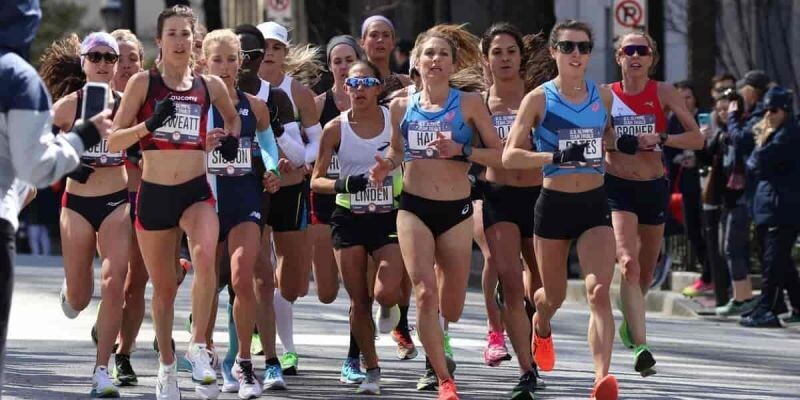
As the starting cannon sounded, the men’s field immediately strung out along the streets of Northport, with Jacob Thomson pushing the pace and taking over the early lead. The honest early pace kept the front pack small, with Thomson being joined by Sam Chelanga, Simbassa, and Korir, with a few second gap back to the rest of the field. With the halfway point in sight, Thomson opened a small lead over the rest of the lead quartet, passing through the 5 km mark in 14:21 and earning a half-way bonus.
Chelanga and Simbassa passed through two seconds back in 14:23, with Korir coming through 5 km in 14:27. Thomson would fall off pace shortly after halfway, with Simbassa and Chelanga taking over the pacing duties and pushing the pace over the next mile.
Korir sat just behind in third. With less than two miles to go, Simbassa pushed the pace and opened an immediate gap on Korir and Chelanga. Simbassa continued to push over the next mile, opening a nearly 20-second lead heading into the final mile of the race.
Over the final mile, Simbassa maintained both pace and form, extending his lead ever so slightly, on his way to claiming his third USATF Running Circuit title, crossing the finish line in 28:12, a new course record. Behind Simbassa, Korir and Chelanga waged an epic kick to the finish, with Korir pulling ahead by a step in the final meters to claim second overall in 28:34, while Chelanga placed third in 28:35.
Dillon Maggard, Futsum Zienasellassie, and Tai Dinger ran much of the race together Saturday, but in the end, it was Maggard pulling away in the final mile to claim fourth in 28:45. Zienasellassie earned another top-five finish on the USATF Running Circuit season with his fifth-place effort in 28:55, while Dinger finished a second behind in sixth in 28:56. Geoffrey Kipchumba claimed seventh overall in 29:00. Thomson slid back to eighth overall in 29:19. Ryan Kutch and Brian Barraza rounded out the top ten in 29:28 and 29:34.
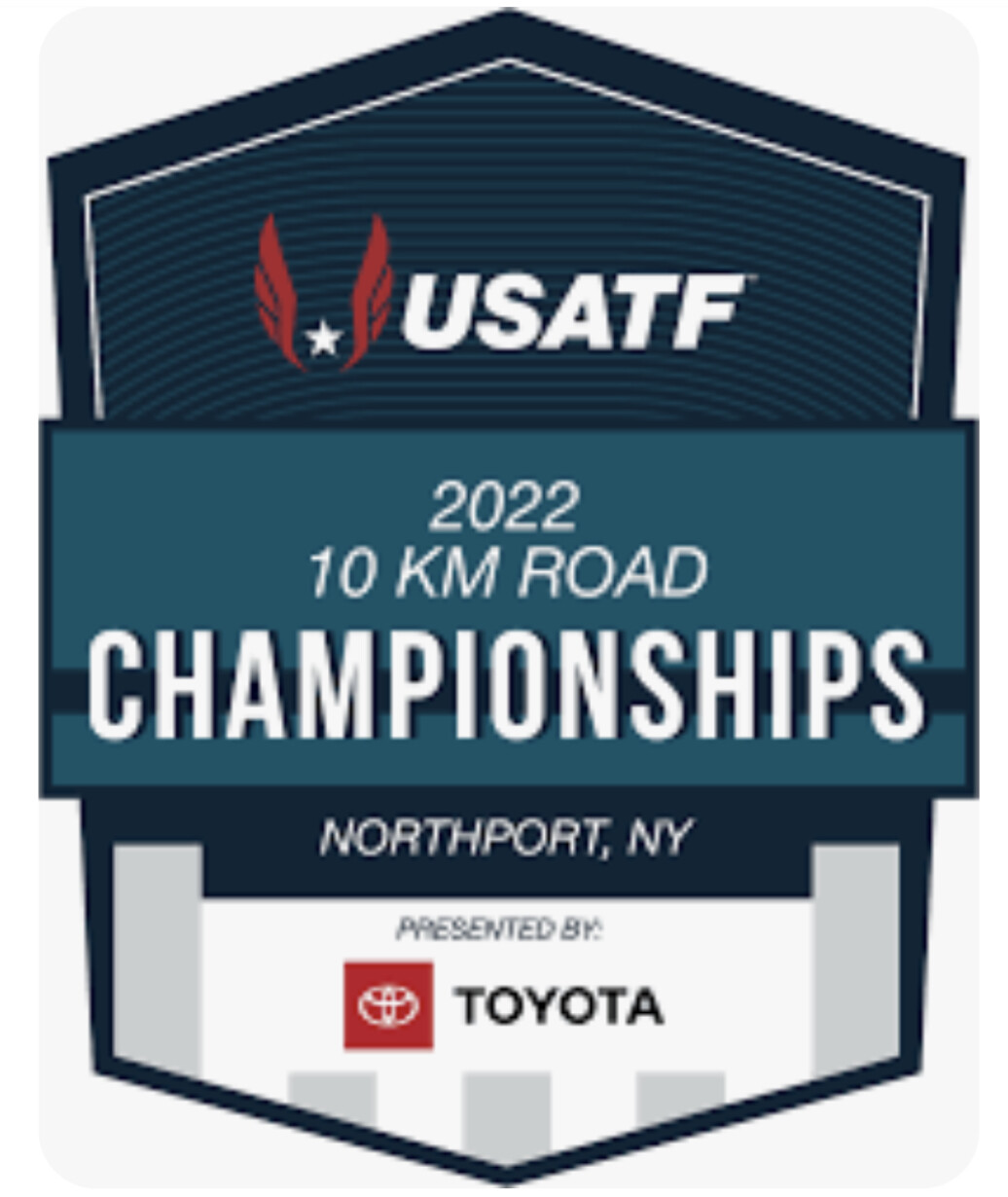
With Korir’s runner-up finish, his second of the USATF Running Circuit season, he elevated himself to an even more dominant first-place standing, with a 104 point total. Zienasellassie’s fifth-place effort added another six points to his standings total, giving him 56.5, sitting in second place overall. Chelanga’s third-place finish moved up into third place overall in the standings with 42 points.
Early in the women’s race, a pack of four women pulled away from the field, establishing a pace that no one else could manage. Bruce, Annie Frisbie, Nell Rojas, and Ednah Kurgat formed a tight pack and worked with one another along the streets of Northport.
The quartet came through the halfway point mark in 16:05, all four looking strong and able to handle the fast pace. Little changed among the top four until the final mile and a half, when Kurgat started to dip off the back of the pace, while the other three charged ahead, seemingly only a matter of time before someone made a move to try and break open the race.
Over the final mile, Bruce charged to the lead, ramping up the pace, a move that would prove decisive. Bruce pulled away from Rojas, Frisbie, and Kurgat, and never looked back, raising her arms as she crossed the line while earning her second USATF 10 km Road title and her third USATF Running Circuit victory of her career.
Bruce finished first in 31:52, while also breaking the course record. Rojas was able to break free of Frisbie and Kurgat in the final 800m to place second in 31:56, while Frisbie finished two seconds back in 31:58 and Kurgat seven seconds back in 32:03, as the two placed third and fourth, respectively.
With her runner-up effort, Rojas added 12 more points to her USATF Running Circuit standings total, giving her 33 points overall. That addition moves Rojas up into sole position of third overall, a half point ahead of Aliphine Tuliamuk, but still well behind USATF Running Circuit standings leaders Emily Sisson and Keira D’Amato, who are tied for first with 55.5 points.
After the top four women, there was a race for fifth happening over the back half of Saturday’s contest. In the end it was Emma Hurley pulling away from the field in the final mile, racing to a fifth-place finish in 32:49. Hurley finished just ahead of Amy Davis and Molly Grabill, who ran to sixth and seventh place finishes in 32:52 and 32:54. Erika Kemp, who owned the previous course record, placed eighth overall in 32:59. Carrie Verdon took home ninth place in 33:05 and Anne-Marie Blaney earned tenth in 33:21.
Next up on the USATF Running Circuit is the USATF 10 Mile Championships presented by Toyota, which take place on Sunday, October 2 in Minneapolis, hosted by the Medtronic TC 10 Mile.
Login to leave a comment
World Championships Medalists Gotytom Gebreslase, Lonah Chemtai Salpeter, and Hellen Obiri to Join Women’s Field at 2022 TCS New York
Sara Hall, Emma Bates, Aliphine Tuliamuk, Des Linden, Nell Rojas, and Stephanie Bruce to anchor star-studded contingent of American women.
World Championships medalists Gotytom Gebreslase of Ethiopia, Lonah Chemtai Salpeter of Israel, and Hellen Obiri of Kenya will join previously announced New York City and Olympic champion Peres Jepchirchir in the women’s professional athlete division at this year’s TCS New York City Marathon on Sunday November 6. All three will make their TCS New York City Marathon debuts, with Obiri making her 26.2-mile debut across any course, and will line up against a star-studded contingent of American women that includes Sara Hall, Emma Bates, Aliphine Tuliamuk, Des Linden, Nell Rojas, and Stephanie Bruce. The 2022 TCS New York City Marathon women’s professional athlete field is presented by Mastercard®.
Women’s Open Division
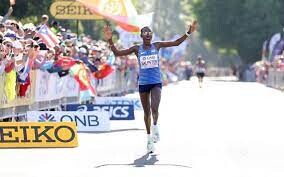
Fresh off her victory at the world championships marathon, where she finished the course in a championship-record time of 2:18:11, Gebreslase will make New York City her next stop. She will look to add a five-borough title to her resume, having previously won the 2021 Berlin Marathon and finished third at the 2022 Tokyo Marathon.
“Winning the World Championships was like a dream, and I am honored to run my next marathon in New York City,” Gebreslase said. “It’s home to the biggest marathon in the world, and many of the top athletes have run there. I understand it’s a challenging course, and I’m looking forward to seeing further success there.”
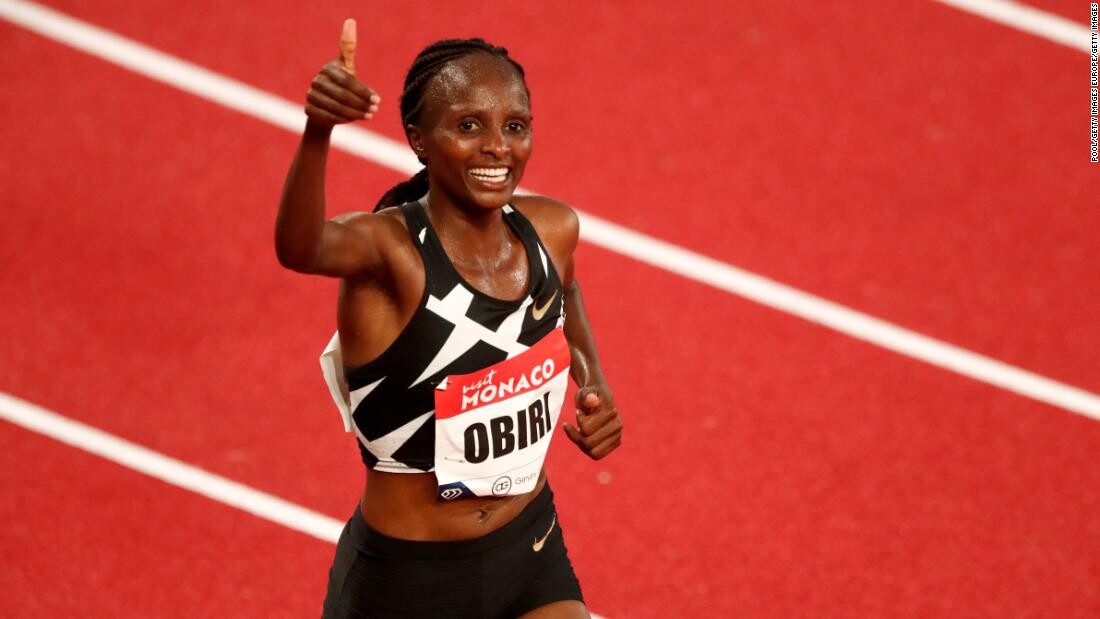
Two-time Olympian Salpeter, a Kenyan-born Israeli who won the bronze medal at the world championships marathon and was the 2020 Tokyo Marathon winner, will challenge Gebreslase once again. Obiri, a two-time Olympic medalist and seven-time individual world championships medalist, will make her highly anticipated marathon debut shortly after winning a world championships silver over 10,000 meters.
“I’m very excited to make my marathon debut at the TCS New York City Marathon,” Obiri said. “I have watched the race many times on TV and have seen my Kenyan colleagues compete there. I know New York is a tough course, but I hope my experience on track, road, and cross-country will help me navigate the ups and downs. I also plan to get advice and tips from coach Dathan Ritzenhein, who competed in the race several times in the past.”
In addition to Jepchirchir, the group will be racing against Ethiopia’s Senbere Teferi, who will look to become the first athlete to win the United Airlines NYC Half, Mastercard New York Mini 10K, and TCS New York City Marathon in one year. Three other Kenyans will also be strong contenders for podium places, including the 2010 New York City, 2014 London and 2017 Boston Marathon champion Edna Kiplagat, last year’s runner-up Viola Cheptoo, and newcomer Sharon Lokedi.
The American effort will be led by 10-time national champion Hall, who was the top world championships marathon finisher from the U.S. last month in Oregon, where she placed fifth. She is also the former half marathon national record holder, the runner-up from the 2020 London Marathon, and a two-time winner of the Mastercard New York Mini 10K. She will be joined at the Staten Island start line by Bates, who clocked a personal best to finish seventh at the world championships and was the runner-up at last year’s Chicago Marathon.
“From winning the Millrose mile to back-to-back Mini 10K wins, most of my favorite career moments have happened in NYC,” Hall said. “I’m all-in to add to that by having my best marathon yet at the TCS New York City Marathon. I can’t wait to be back racing my heart out in the five boroughs of my favorite city.”
Tokyo 2020 Olympian Aliphine Tuliamuk, and two-time Olympian and 2018 Boston Marathon champion Des Linden, will also return to New York, as will national champion Stephanie Bruce, who will race the five boroughs for the final time before retiring. The deep U.S. women’s group will additionally include Nell Rojas, the top American finisher from the last two Boston Marathons, Lindsay Flanagan, the top American finisher from the 2022 United Airlines NYC Half, Annie Frisbie, last year’s seventh-place finisher, and her training partner Dakotah Lindwurm, who won Grandma’s Marathon in June. Emily Durgin, the sixth-fastest U.S. half marathoner of all-time, will make her marathon debut.
by Running USA
Login to leave a comment
TCS New York City Marathon
The first New York City Marathon, organized in 1970 by Fred Lebow and Vince Chiappetta, was held entirely in Central Park. Of 127 entrants, only 55 men finished; the sole female entrant dropped out due to illness. Winners were given inexpensive wristwatches and recycled baseball and bowling trophies. The entry fee was $1 and the total event budget...
more...Twelve Olympians will lead star-studded lineup at 50th anniversary of Mastercard New York Mini 10K
Twelve Olympians and five Paralympians will line up in Central Park for the 50th anniversary of the Mastercard® New York Mini 10K, the world’s original women-only road race, on Saturday, June 11, New York Road Runners (NYRR) announced today.
U.S. Olympians Emily Sisson, Molly Seidel, Aliphine Tuliamuk, and Rachel (Schneider) Smith will lead a strong American contingent that will go up against previously announced Olympic, TCS New York City Marathon, and Boston Marathon champion Peres Jepchirchir, United Airlines NYC Half champion and 5K world-record holder Senbere Teferi, and two-time Mini 10K champion Sara Hall.
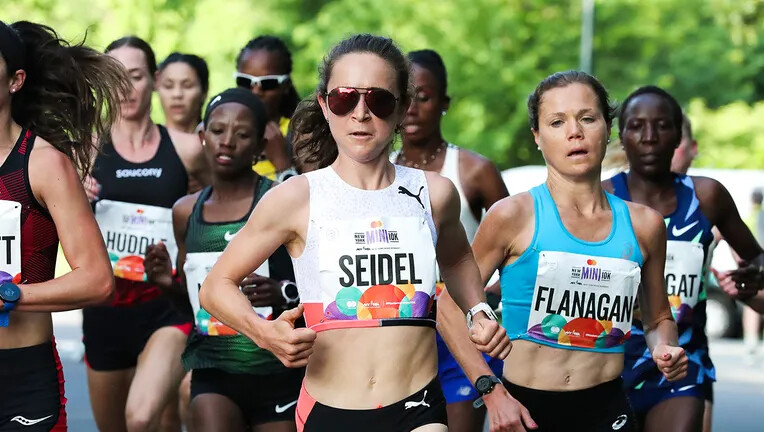
Sisson will come into the race after claiming her sixth national title last month in an American record 1:07:11 at the USATF Half Marathon Championships. She made her Olympic debut in Tokyo last summer after winning the 10,000 meters at the U.S. Olympic Track and Field Trials, where she broke the 17-year-old Trials record set by Deena Kastor in 2004. She has been very successful in her last three trips to New York, finishing as the runner-up at the United Airlines NYC Half twice and winning the USATF 5K Championships.
“After breaking the American record in the half-marathon, I’m excited to step down in distance and compete in the Mastercard® New York Mini 10K for the first time,” Sisson said. “It will be a privilege to take part in such a powerful event that has paved the way for so many women over the last 50 years.”

Seidel owns a bronze medal from the Tokyo Olympic marathon last year and in her last trip to New York set an American course record and recorded a fourth-place finish at the TCS New York City Marathon. Tuliamuk won the 2020 U.S. Olympic Marathon Trials and then gave birth to her daughter before running in the Olympic marathon in Tokyo. She will be making her first trip to New York since 2019 and is coming off winning the 25km national title, bringing her national title count to 11. Smith represented the U.S. at the Tokyo Olympics in the 5,000 meters after finishing third in the distance at the U.S. Olympic Track and Field Trials.
The deep U.S. women’s contingent also includes American marathon record-holder Keira D’Amato, the top American finisher at the last two Boston Marathons Nell Rojas, 2019 New York Mini 10K runner-up Stephanie Bruce, U.S. national champion Erika Kemp, and the top American finisher at the 2022 United Airlines NYC Half Lindsay Flanagan.
Returning to the event 10 years after her victory will be Kenya’s Edna Kiplagat, a two-time world champion in the marathon who won the 2010 New York City, 2014 London, and 2017 Boston marathons, and was the runner-up in Boston in 2019 and 2021.
“Winning the New York City Marathon 12 years ago changed my life, and now, 10 years after also winning the Mini 10K, I still enjoy my racing and am happy to still be competing at a high level,” Kiplagat said. “NYRR always invites the highest quality fields, so I always like lining up in New York with the best in the world. There are so many inspiring women who have participated in this race over the years who set a positive example for everyone – both runners and non-runners – and I’m lucky to be part of such a prestigious group.”
Last year’s TCS New York City Marathon runner-up and Mastercard® New York Mini 10K runner-up Viola Cheptoo of Kenya and former NCAA 10,000-meter champion Sharon Lokedi of Kenya will contend for the title as well.
The professional wheelchair division will be headlined by two-time Paralympic medalist and three-time Mastercard® Mini 10K defending champion Susannah Scaroni. Since the addition of the professional wheelchair division in 2018, Scaroni is the only athlete to have won the race.
“The Mastercard New York Mini 10K is a special one to me for so many reasons, and I’m excited at the chance to race on what will be a milestone day for women’s running in Central Park,” Scaroni said. “Not only is the Mini 10K the world’s original women-only road race, but it is also one of the only women-only wheelchair races at the present time, which will hopefully pave the way for future generations of women’s wheelchair racers in the next 50 years.”
Lining up against Scaroni will be U.S. Paralympians Jenna Fesemyer, Yen Hoang, Hannah Dederick, and Eva Houston.
The Mini 10K, which began in 1972 as the Crazylegs Mini Marathon, was the first women-only road race and has gone on to garner more than 200,000 total finishers to date. Former NYRR President Fred Lebow named the race after the miniskirt, which back then was in vogue. A total of 72 women finished the first race, and three weeks later, Title IX was signed into law, guaranteeing girls and women the right to participate in school sports and creating new opportunities for generations of female athletes.
The Mastercard® New York Mini 10K will offer $45,000 in total prize money, including $10,000 to the winner of the open division and $2,500 to the winner of the wheelchair division. The professional athlete races will be streamed live on USATF.TV beginning at 7:40 a.m. ET. Mastercard® will serve as title sponsor of the event for the second time, and as part of its on-going partnership with NYRR will also serve as the presenting sponsor of professional women’s athlete field.
by Running USA
Login to leave a comment
New York Mini 10K
Join us for the NYRR New York Mini 10K, a race just for women. This race was made for you! It’s the world’s original women-only road race, founded in 1972 and named for the miniskirt, and it empowers women of all ages and fitness levels to be active and to look and feel great on the run. Every woman who...
more...Boston Marathon Champions & National Record Holders Headline Professional Field for 2022 B.A.A. 10K
The Boston Athletic Association (B.A.A.) has announced a star-studded field for the 2022 B.A.A. 10K, presented by Brigham and Women’s Hospital, to be held on Sunday, June 26. Evans Chebet, the 2022 Boston Marathon men’s open division champion, will return to Boston, while recently crowned American half marathon record holder Emily Sisson will lead the women’s field on the roads of Back Bay. Four-time B.A.A. 5K champion and American 5K record holder Ben True will also make his B.A.A. 10K debut.
The B.A.A. 10K starts and finishes on Charles Street adjacent to Boston Common and Boston Public Garden, and is widely regarded as one of the fastest 10K races in the world. Registration remains open at www.baa.org, while athletes interested in supporting Brigham and Women's Hospital, the B.A.A. 10K’s presenting sponsor and exclusive fundraising partner, are encouraged to visit www.runbwh.org/10k.
“We’re excited to continue to showcase the world’s most accomplished runners at our B.A.A. events,” said Mary Kate Shea, the B.A.A.’s Director of Professional Athletes and Technical Support. “We’re looking forward to cheering on all participants as they race towards the finish.”
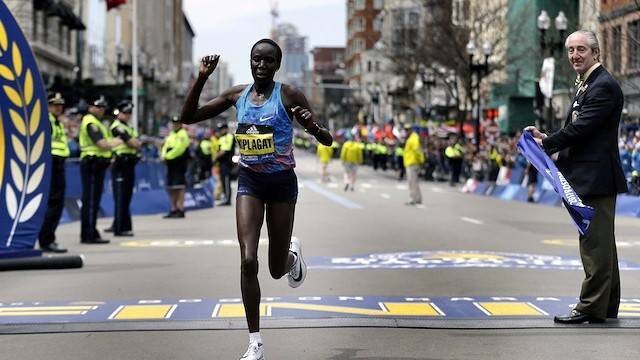
The B.A.A. 10K women’s race brings together Boston Marathon champions Des Linden (2018) and Edna Kiplagat (2017), American record holder Sisson, 2017 B.A.A. 10K winner Joan Chelimo Melly, 2022 Boston Marathon top American Nell Rojas, 2016 USA Olympian Marielle Hall, and USA 15K runner-up Emily Durgin.
Sisson, a Providence College graduate and 2021 Olympian, ran 1:07:11 on May 7 to win the USATF Half Marathon Championships in a new national record. She’s also the defending USA 15K champion.
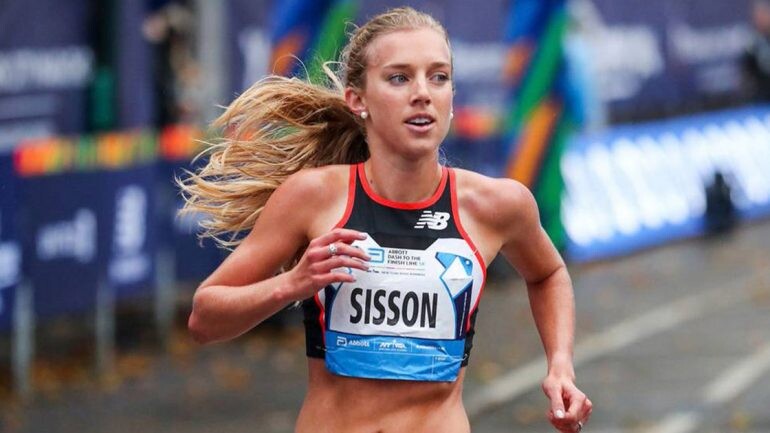
“Breaking the American record in the half marathon was very exciting and I'm now looking forward to switching things up and racing different distances,” said Sisson. “The 10K is a fun and different challenge and I always love racing in Boston.”
Additional international entrants include Biruktayit Degefa of Ethiopia, who has won a quartet of American road races this spring, and Kenya’s Sharon Lokedi, who placed third at the 2022 B.A.A. 5K in April. From the B.A.A. High Performance team are Erika Kemp and Abbey Wheeler; Kemp is a two-time national champion.
In the men’s race, Chebet looks to become only the second Boston Marathon champion to win the B.A.A. 10K, joining the likes of 2011 winner and course record holder Geoffrey Mutai. Chebet stormed to his first Boston Marathon victory in 2:06:51 on April 18.
“After winning the 2022 Boston Marathon, I’m excited to return to the city to run the B.A.A. 10K with a world class field,” said Chebet. “Boston feels like a second home to me now.”
Challenging Chebet from Kenya are David Bett, the reigning 2019 B.A.A. 10K winner; Kennedy Kimutai, the fastest man in the field with a 27:09 lifetime best; Bravin Kiptoo, the 2019 African junior 10,000m champion; and Nicholas Kosimbei, winner of this year’s Cherry Blossom 10 Miler in Washington, D.C. Brothers Jake and Zane Robertson, a dynamic pair from New Zealand who have lived and trained in Kenya, will also race. Recent Iowa State graduate and NCAA champion Wesley Kiptoo will make his Boston road racing debut.
Maine-native Ben True will return to familiar territory, having won the B.A.A. 5K four times, including a national-record setting run of 13:20 in 2017. Fellow American contenders include Olympians Leonard Korir and Shadrack Kipchirchir, Princeton, Mass.-native Colin Bennie, and a quartet of B.A.A. High Performance Team members in Jerrell Mock, Matt McDonald, Jonas Hampton, and Paul Hogan. Korir enters the B.A.A. 10K hot off a pair of national title wins at the USATF Half Marathon and USATF 25K Championships in May.
In the wheelchair division, Jenna Fesemyer, the 2022 B.A.A. 5K women’s winner, Susannah Scaroni, the 2022 Boston Marathon runner-up, and 2020 Paralympian Yen Hoang are entered. Scaroni earned a gold medal on the track at the 2021 Paralympic Games in the 5000m, and is the fastest women’s wheelchair marathoner in U.S. history. James Senbeta and Hermin Garic are the top men’s wheelchair entrants.
For the first time in race history, Para Athletics Divisions will be offered for athletes with upper-limb, lower-limb, and visual impairments. Among the entrants confirmed include Marko Cheseto Lemtukei, Chaz Davis, and Liz Willis, each of whom won Para Division titles at April’s 126th Boston Marathon. Jacky Hunt-Broersma, who ran 104 marathons in 104 consecutive days for a Guinness World Record, and local Para athlete Adrianne Haslet are also entered.
In addition to racing, top professional athletes will participate in the first-ever B.A.A. 10K Fest & Field Day on Saturday, June 25, one day prior to the race. From 2:00 p.m. to 6:00 p.m. at Boston Common, 10K Fest & Field Day will feature youth fitness activities, games, appearances by professional athletes, running clinics, and more. Participants will also be able to pick-up their participant shirts and bib numbers at 10K Fest. Additional details will be available on baa.org in the coming weeks.
Registration for the 2022 B.A.A. 10K, presented by Brigham and Women’s Hospital, is currently open through the B.A.A.’s online platform Athletes’ Village. All participants who enter will receive an adidas participant shirt, unique bib number, and finisher medal. Additional participant information can be found on baa.org. The race will start at 8:00 a.m. ET on Sunday, June 26 on Charles Street adjacent to Boston Common and Boston Public Garden.
Brigham and Women's Hospital, the B.A.A. 10K’s presenting sponsor and exclusive fundraising partner, will again field a team of fundraising runners. Since 2016, more than 2,100 runners and 180 teams have raised $1.2 million to fuel life-giving breakthroughs at Brigham and Women’s Hospital. Learn more and register at www.runbwh.org/10k.
On June 1, the B.A.A. will celebrate Global Running Day with a special pop-up location at the Boston Marathon Finish Line between 3:00-6:00 p.m. Runners can take a picture with the Boston Marathon trophy, receive giveaways, refreshments, and more! RSVP for the free event on our Facebook page, and log miles throughout the day as part of the Abbott World Marathon Majors Global Running Day Challenge. Visit https://bstnmar.org/GRD22 to sign up for free, track your miles, and print a bib to wear as you join a global community of athletes around the world logging miles.
2022 B.A.A. 10K WOMEN’S FIELD (NAME, COUNTRY, ROAD 10K PB)
Joan Chelimo Melly, Romania, 30:14^
Edna Kiplagat, Kenya, 31:06*
Sharon Lokedi, Kenya, 31:06
Mary Munanu, Kenya, 31:20
Biruktayit Degefa, Ethiopia, 31:23
Emily Sisson, USA, 31:47
Emily Durgin, USA, 31:49
Diane Nukuri, USA, 31:49
Lanni Marchant, Canada, 31:49
Vibian Chepkirui, Kenya, 31:49
Nell Rojas, USA, 31:52
Erika Kemp, USA, 32:18
Laura Thweatt, USA, 32:20
Elaina Tabb, USA, 32:40
Rachel Schneider Smith, USA, 32:47
Abbey Wheeler, USA, DB (32:53.50 10,000m)
Grayson Murphy, USA, 32:55
Fiona O’Keeffe, USA, 32:57
Katie Kellner, USA, 33:05
Des Linden, USA, 33:06*
Taylor Werner, USA, 33:35
Marielle Hall, USA, 33:36 (31:05.71 10,000m)
Allie Hackett, USA, 35:17
Jesca Chelangat, Kenya, DB (15:16 5K)
Courtney Hawkins, USA, DB (37:59.99 10,000m)
^ = Previous B.A.A. 10K Champion
* = Previous Boston Marathon Champion
2022 B.A.A. 10K MEN’S FIELD (NAME, COUNTRY, ROAD 10K PB)
Kennedy Kimutai, Kenya, 27:09
Bravin Kiptoo, Kenya, 27:12
Philemon Kiplimo, Kenya, 27:23
Zane Robertson, New Zealand, 27:28
Jake Robertson, New Zealand, 27:28
Wesley Kiptoo, Kenya, N/A (27:37.29 10,000m)
Ben True, USA, 27:51
Nicholas Kosimbei, Kenya, 27:52
John Dressel, USA, N/A (27:57.51 10,000m)
David Bett, Kenya, 28:08^
Dominic Korir, Kenya, 28:08
Leonard Korir, USA, 28:09
Shadrack Kipchirchir, USA, 28:12
David Nilsson, Sweden, 28:13
Tsegay Tuemay, Eritrea, 28:13
Bethwell Yegon, Kenya, 28:24
Reuben Mosip, Kenya, 28:28
Paul Hogan, USA, N/A (28:49.55 10,000m)
Johannes Motschmann, Germany, 28:51
Alex Masai, Kenya, 28:53
Colin Bennie, USA, 28:55
Futsum Zienasellassie, USA, 29:03
Matt McClintock, USA, 29:02
Jacob Thomson, USA, 29:07
John Raneri, USA, 29:19
Evans Chebet, Kenya, 29:30*
Jerrell Mock, USA, 29:36
Aaron Dinzeo, USA, 29:37
Matt McDonald, USA, 29:38
Diego Estrada, USA, 29:41
Fabiano Sulle, Tanzania, 29:53
Jonas Hampton, USA, 30:15
Tim McGowan, USA, 30:17
Connor McMillan, USA, 30:20
Josh Kalapos, USA, N/A (14:33.88 5,000m)
^ = Previous B.A.A. 10K Champion
* = Previous Boston Marathon Champion
Login to leave a comment
B.A.A. 10K
The 6.2-mile course is a scenic tour through Boston's Back Bay. Notable neighborhoods and attractions include the legendary Bull and Finch Pub, after which the television series "Cheers" was developed, the campus of Boston University, and trendy Kenmore Square. ...
more...Fan-Favorite Molly Seidel Dropped Out of the 2022 Boston Marathon Between 25K and 30K of the Race
Molly Seidel hit her first racing setback as a marathoner when she dropped out of the Boston Marathon on Monday, April 18. In her Boston debut, the Olympic bronze medalist walked off the course between 25K and 30K.
Seidel was running with the lead pack of elite women until the 9-mile mark, where 2020 Olympic champion Peres Jepchirchir dropped the pace with a 4:59 split. The aggressive move broke up the front pack significantly, and Seidel was among the group of competitors who fell behind.
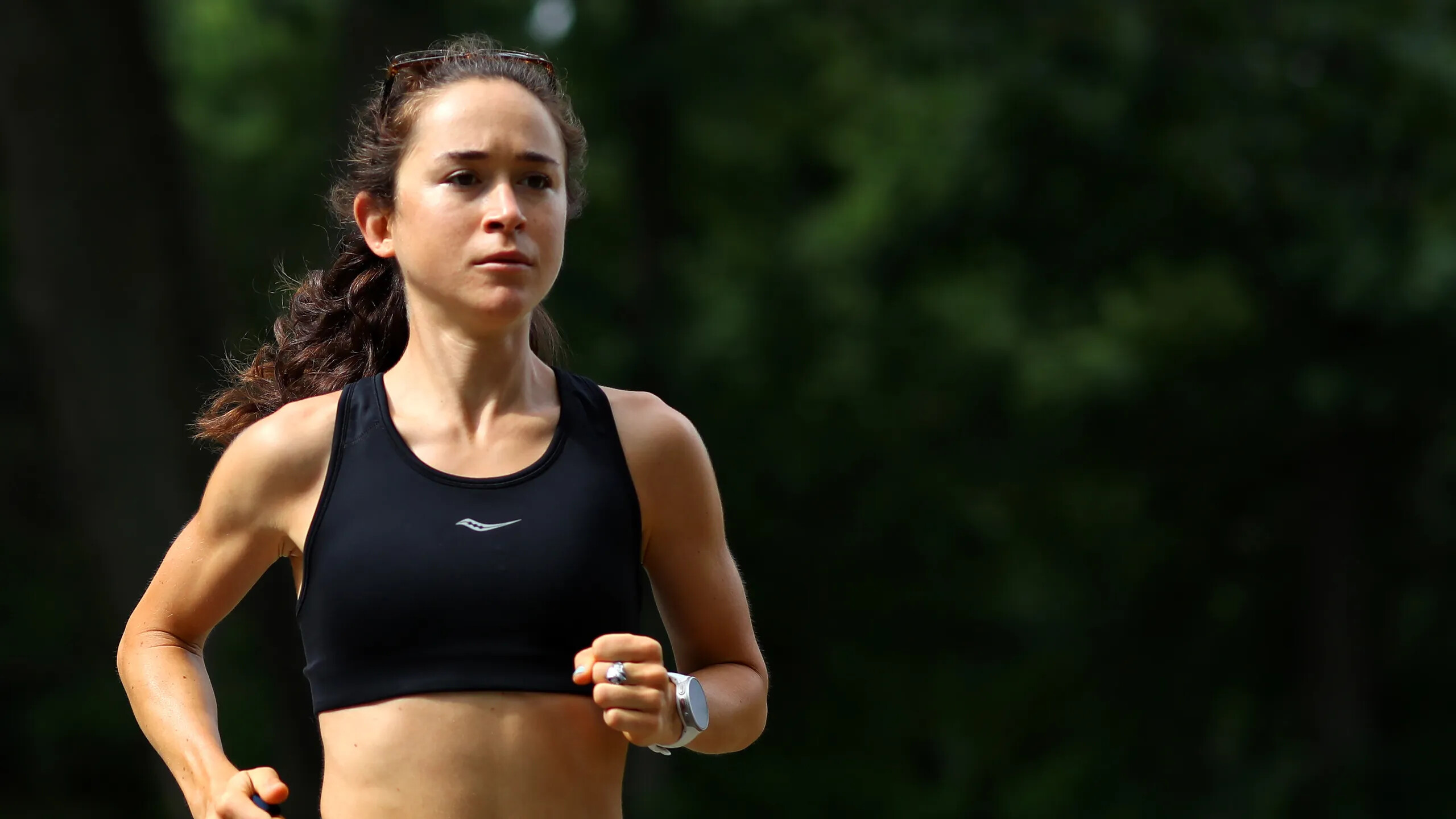
At halfway, Seidel was in 11th place and running as the top American ahead of Nell Rojas. But in the following miles, she started to slow down. Her final split was 1:25:29 at 25K. She didn’t record a split at 30K.
Boston is Seidel’s fifth marathon in about two years, which have been highlighted by incredible performances over 26.2. The 27-year-old made her debut with a runner-up finish at the 2020 U.S. Olympic Marathon Trials in Atlanta. She finished sixth in London (2:25:13) in 2020. On a blistering day in Sapporo, Seidel claimed the Olympic bronze medal at the Tokyo Games last summer.
Thirteen weeks later, she followed up her historic Olympic run at the 2021 New York City Marathon, where she finished fourth in 2:24:42, the fastest time by an American on the course. The personal best was especially impressive given that Seidel broke two ribs about a month before the race. In the postrace press conference, she didn’t share what caused the injury, but said it was so painful that she considered not lining up at all.
“It was hard coming off the Olympics and hard mentally getting back into that build,” she said after the race on November 7, 2021. “I’ve invested too much in this, I really want to do it. It means a lot to me to do it, regardless of what it turns out to be.”
Heading into the Boston Marathon, Seidel was considered a heavy favorite to make the podium. In addition to her accolades on the world stage, she came in with more experience than most on the prestigious course.
Before moving to Flagstaff, Arizona, last April, she lived in Boston for almost five years. During the elite athlete press conference on April 15, Seidel said she’s done a lot of training on the Boston course after living in the Fenway neighborhood and running the route regularly. She also babysat for a family in Wellesley and trained near the halfway point, running to Heartbreak Hill and back for about 14 miles.
Before the race, Seidel told Runner’s World that after a few “hiccups” in her training early on, including a hip impingement that curtailed her training for a few days, the last five weeks of her Boston buildup were “about as good as I could have hoped.”
“You almost have to reconcile the marathon buildup you want with the one that you get,” Seidel said. “But I think we’re in a really good place now, not only for Boston, but for world champs in the summer, focusing on a lot of strength as we build for the rest of the year.”
by Runner’s World
Login to leave a comment
Nell Rojas and Scott Fauble top americans at Boston Marathon
It was a Kenyan sweep at the Boston Marathon with Evan Chebet winning the men’s race in 2:06:51 and Peres Jepchirchir capturing the women’s title in 2:21:01.
The top Americas both have Colorado ties. Boulder’s Scott Fauble, who graduated from Wheat Ridge High School and is a two-time CHSAA champion, finished seventh among the men in 2 hours, 8 minutes, 52 seconds.
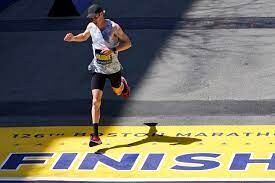
Boulder’s Nell Rojas, who was also top American last year, came in 10th among the women at 2:25:57.
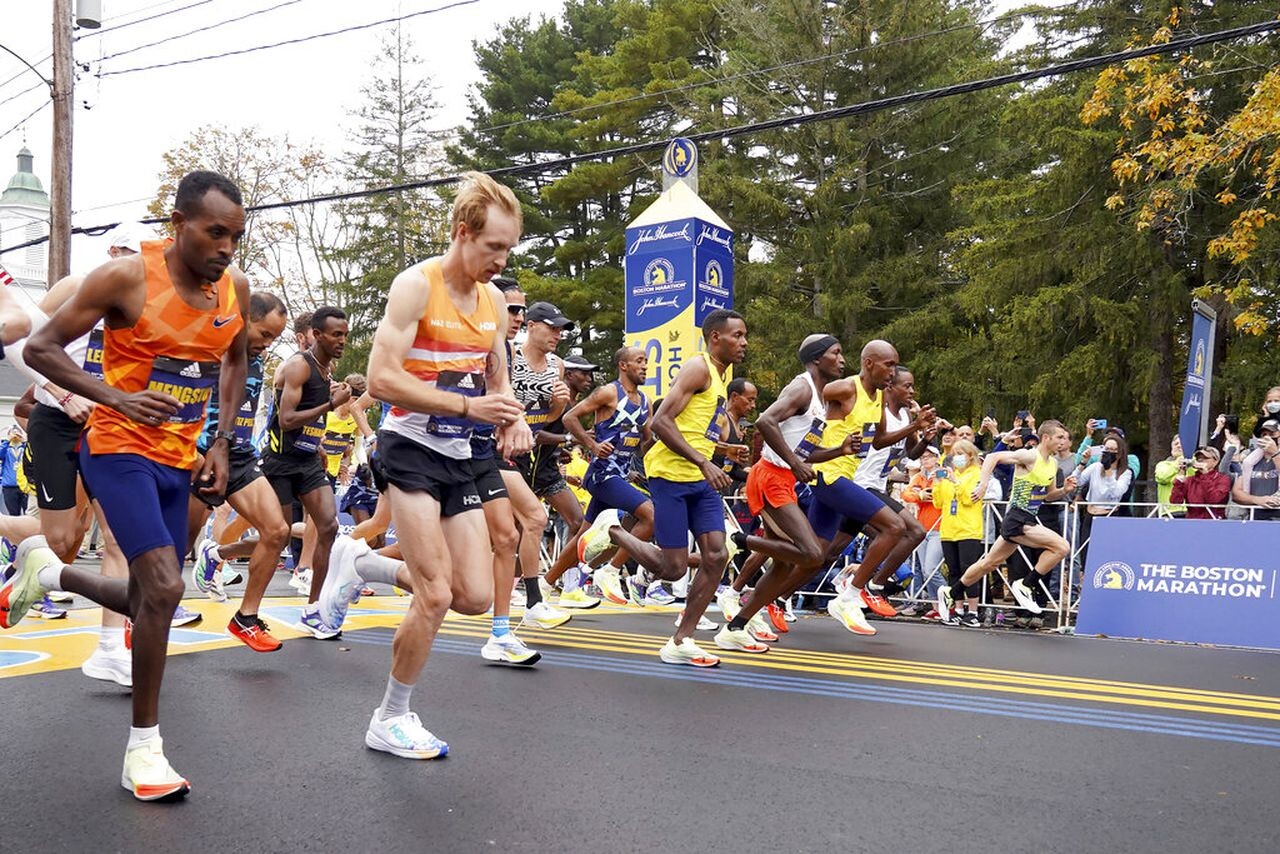
The 126th running of the Boston Marathon marked the event’s return to its spot on Patriots’ Day, the Massachusetts state holiday, for the first time in two years due to the coronavirus pandemic.
The Hopkinton, Massachusetts starting line saw 30,000 participants for the oldest annual marathon in the world.
by Colorado Runner
Login to leave a comment
Boston Marathon
Among the nation’s oldest athletic clubs, the B.A.A. was established in 1887, and, in 1896, more than half of the U.S. Olympic Team at the first modern games was composed of B.A.A. club members. The Olympic Games provided the inspiration for the first Boston Marathon, which culminated the B.A.A. Games on April 19, 1897. John J. McDermott emerged from a...
more...Peres Jepchirchir wins Boston in a final sprint and Evans Chebet takes the men's title
It was not until 1972 that the Boston Marathon’s organizers allowed women to race as official entrants. Before then, those who were brave enough to defy the ban were often jeered or forcibly pulled off the course. Among the rationales cited? That women were “physiologically incapable” of running 26.2 miles.
It all seems so painfully misguided now, of course, but that pockmarked piece of the event’s history was worth remembering Monday as Peres Jepchirchir of Kenya and Ababel Yeshaneh of Ethiopia charged through Kenmore Square, in the shadow of Fenway Park, not far from the finish line. The rest of a decorated women’s field had splintered in their wake, and now Jepchirchir and Yeshaneh went back and forth, trading the lead several times as they staged a memorable duel.
Finally, with one last push, Jepchirchir lengthened her stride to create some separation as she sprinted to the finish, her narrow win coming 50 years after women first vied for Boston Marathon glory. Perhaps the only person surprised by the outcome was Jepchirchir herself.
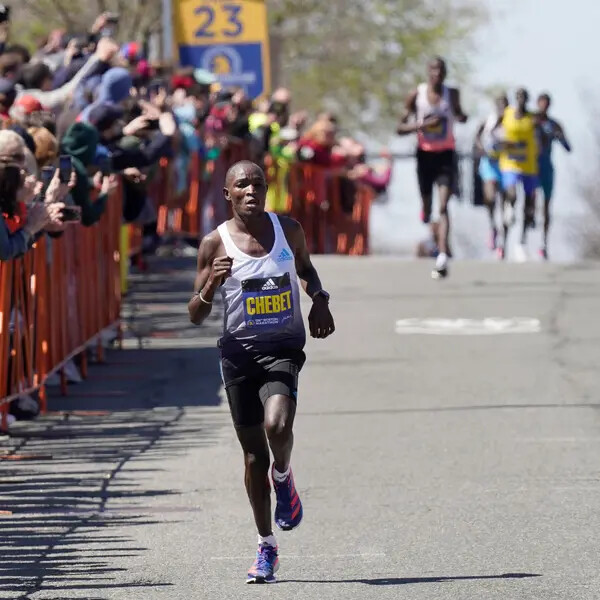
“I was not expecting to win,” said Jepchirchir, the reigning Olympic champion. “But I’m feeling grateful, and now I can say that I believe in myself more.”
For the first time since 2019, the Boston Marathon returned to its traditional slot on the calendar. Until the coronavirus pandemic, the marathon had been staged every April since 1897. But in 2020, the race was canceled for the first time in its history. And last year, the race was pushed to October, when it competed for elite entrants with a cluster of other marathons.
Order was restored this year, as a full field of about 30,000 participants — runners, wheelchair racers, para athletes, hand cyclists — formed a giant wave from Hopkinton, Mass., to Boston on a cool, sun-splashed day.
No one shined brighter than Jepchirchir, 28, who finished in 2 hours 21 minutes 1 second, just four seconds ahead of Yeshaneh. Mary Ngugi of Kenya placed third after running a smart race: She knew enough to pace herself when Jepchirchir and Yeshaneh pounded the gas, blowing away the field.
“I’m glad I didn’t follow them and just die,” Ngugi said.
Establishing herself as the most formidable female marathoner on the planet, Jepchirchir has now won her last five marathons and three in the last eight months: After surviving extraordinarily hot conditions to win at the Tokyo Games in August, Jepchirchir won the New York City Marathon in November. Now, after another triumph, she is already looking ahead.
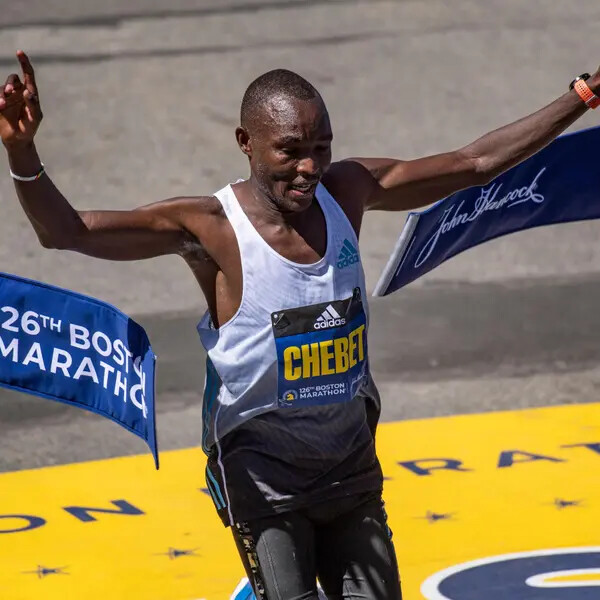
“I still have more to do,” she said.
Kenyans swept the men’s podium. Evans Chebet, 33, won his first world marathon major when he broke clear of a large pack, finishing in 2:06:51. Lawrence Cherono was second, and Benson Kipruto, last year’s winner, was third.
The pack began to dissolve behind Chebet after he covered the 22nd mile in 4:27, a preposterous tempo. Crushing his opposition only seemed to spur him forward.
“My counterparts were nowhere close to me,” he said through a translator, “and that gave me the motivation and the determination to hit it off and seize the win.”
On Monday, fortune largely favored the brave — but not everyone. CJ Albertson, a 28-year-old Californian who trains for marathons by doing marathons, pushed the pace from the start.
“My only chance to really win or be up there in the top is to kind of break some people,” he said. “I had the mind-set that I’m invincible, and you kind of have to run like that.”
The problem: “There are limits,” he said.
Albertson faded to a 13th-place finish in 2:10:23, which was still a personal best. Scott Fauble, 30, was the top American man, in seventh. “I think I do well with hills,” he said.
Molly Seidel, a crowd favorite and a former Boston-area resident, struggled in her Boston debut, dropping out at Mile 16. She said in a statement that she had been dealing with a hip injury.
“I had to make the difficult call to stop at a medical tent to avoid really damaging anything,” she said.
Seidel, the bronze medalist in the women’s marathon at the Tokyo Games, was coming off a fourth-place finish at the New York City Marathon with broken ribs.
Nell Rojas was the fastest American woman, finishing 10th in 2:25:57.
Manuela Schӓr of Switzerland won the women’s wheelchair race, cruising to her fourth victory in the event, and Daniel Romanchuk of the United States won the men’s title for a second time in Boston.
Many runners were drawn to this year’s race by the opportunity to accomplish a one-of-a-kind feat: running back-to-back Boston Marathons mere months apart.
“It feels almost a little bit too soon,” said Joyce Lee, who was running her sixth Boston Marathon after serving as guide for a visually impaired runner in the October race.
Many were also grateful for the chance to compete on the 50th anniversary of women’s official inclusion in the marathon. “It’s incredible to think that was a thing back then and women had to work so hard to participate in this event,” said Christine Valdes, 46. “They paved the way for us.”
Sport is seldom immune from global politics, and this year’s marathon was no different. Amid the war in Ukraine, runners from Russia and Belarus were barred from competing by the Boston Athletic Association, which organizes the race. (Citizens of Russia and Belarus who are residents of other countries were still allowed to take part.)
And there were, as always, reminders of the terror that tore through the marathon nine years ago. Henry Richard, 20, crossed the finish line at 2:52 p.m., and the timing could not have been more poignant: It was around that time in 2013 when two bombs exploded and killed his 8-year-old brother, Martin, and two other people, and wounded 264 others.
“I know Martin would have been doing it with me,” Richard said after the race on Monday. “That’s all I could think about.”
Richard finished in 4:02:20. “I did it for both of us, and my sister and the rest of our family,” he said. “I couldn’t be more happy now. I’m going to do it again.”
In her own subtle way, Jepchirchir offered a counterpoint to some of the world’s divisions. In the race’s late stages, she and Yeshaneh appeared to work together to extend their lead. At one point, Jepchirchir offered Yeshaneh some of her water.
It all seemed straight from the Jepchirchir playbook. Consider her performance in New York last year, when she encouraged Viola Cheptoo, a fellow Kenyan, to stick with her as they entered Central Park side by side. Jepchirchir eventually pulled away, but Cheptoo lauded her sportsmanship.
On Monday, it was more of the same, all those years after eight women broke the gender barrier by racing against more than a thousand men.
“I love my competitors,” Jepchirchir said, “because I can’t do it by myself.”
by New York Times
Login to leave a comment
Boston Marathon
Among the nation’s oldest athletic clubs, the B.A.A. was established in 1887, and, in 1896, more than half of the U.S. Olympic Team at the first modern games was composed of B.A.A. club members. The Olympic Games provided the inspiration for the first Boston Marathon, which culminated the B.A.A. Games on April 19, 1897. John J. McDermott emerged from a...
more...Kenyans Evans Chebet, Peres Jepchirchir win men's and women's titles
Olympic champion Peres Jepchirchir outlasted Ethiopia's Ababel Yeshaneh in the final stretch down Boylston Street to capture the women's crown at the Boston Marathon on Monday.
The Kenyan star crossed the finish line in two hours 21 minutes and one second, four seconds ahead of Yeshaneh, who dueled with Jepchirchir in the final few hundred meters. Jepchirchir's win gave Kenya both the men's and women's titles as Evans Chebet topped the men's race in 2:06:51 — his first major marathon win.
He led a 1-2-3 finish for Kenya with countrymen Lawrence Cherono second in 2:07:21 and Benson Kipruto, the defending champion, third in 2:07:27.

The fastest Americans have crossed the finish line: Scott Fauble finished seventh among the men in 2 hours 8 minutes 52 seconds and Nell Rojas came in 10th among the women at 2:25:57.
American Daniel Romanchuk, who captured Boston in 2019, won the men's wheelchair event in 1:26:58. Defending champion Marcel Hug of Switzerland pulled out just before the start of the race due to medical reasons.
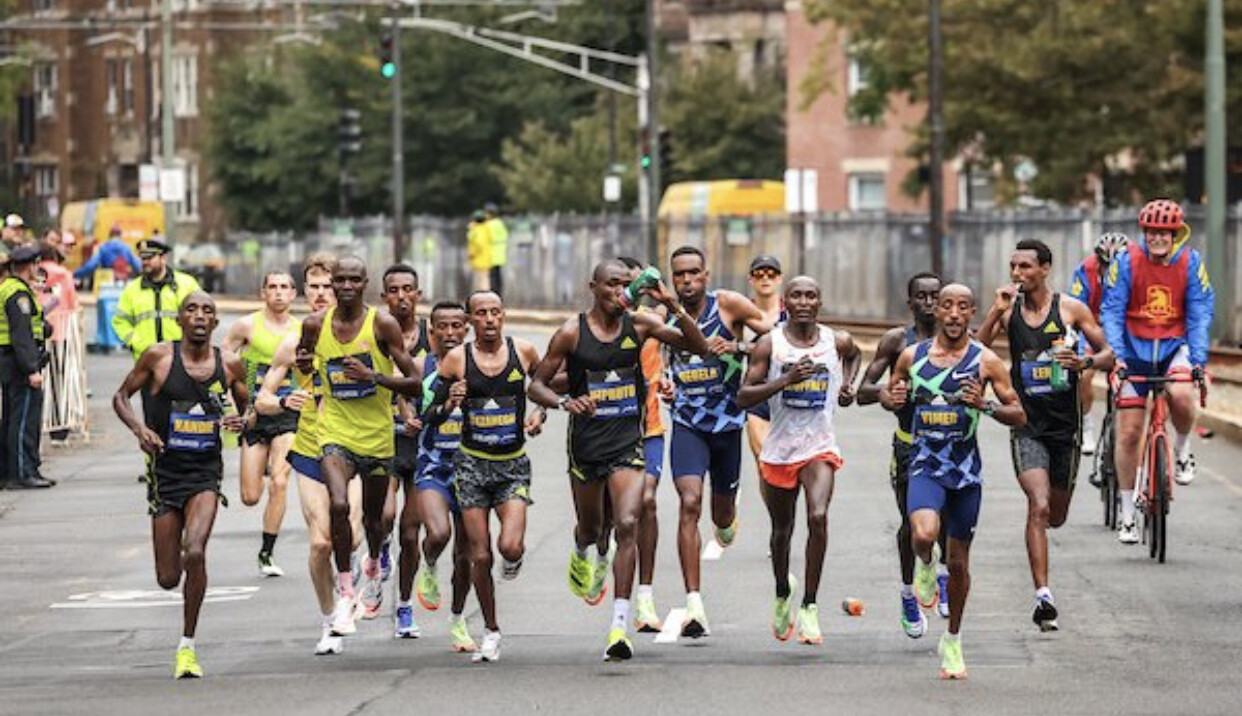
On the women's wheelchair side, Manuela Schar of Switzerland captured her fourth Boston title in 1:41:08.
The marathon returned to its traditional Patriot's Day timeslot after a three-year absence due to the COVID-19 pandemic. The in-person event was canceled in 2020 for the first time in history. It returned in 2021 but was held in October with a smaller field of around 20,000 runners. More than 30,000 competitors were registered for Monday's event.
Login to leave a comment
Boston Marathon
Among the nation’s oldest athletic clubs, the B.A.A. was established in 1887, and, in 1896, more than half of the U.S. Olympic Team at the first modern games was composed of B.A.A. club members. The Olympic Games provided the inspiration for the first Boston Marathon, which culminated the B.A.A. Games on April 19, 1897. John J. McDermott emerged from a...
more...Nell Rojas, Coached By Her Father, Will Return To Boston Marathon After Debuting As Top American Woman In 2021
For Nell and Ric Rojas, the Boston Marathon is a family affair.
In 2020, Nell finished as the top American woman in sixth place. It was just her fourth marathon — and she’s still getting comfortable with that success.
“When you’re going against the best in the world, it’s weird to be like, ‘yeah I can run with them,’ but you have to tell yourself that every morning,” said Nell Rojas.
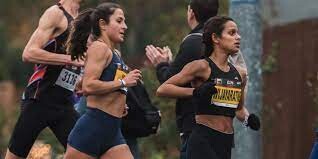
She made a statement in her Boston Marathon running debut last fall and finished with a personal best of two hours, 27 minutes, and 12 seconds.
“I knew she was going to run well but to be as competitive as she was with the international athletes, I was very impressed. very impressed,” said dad Ric Rojas.
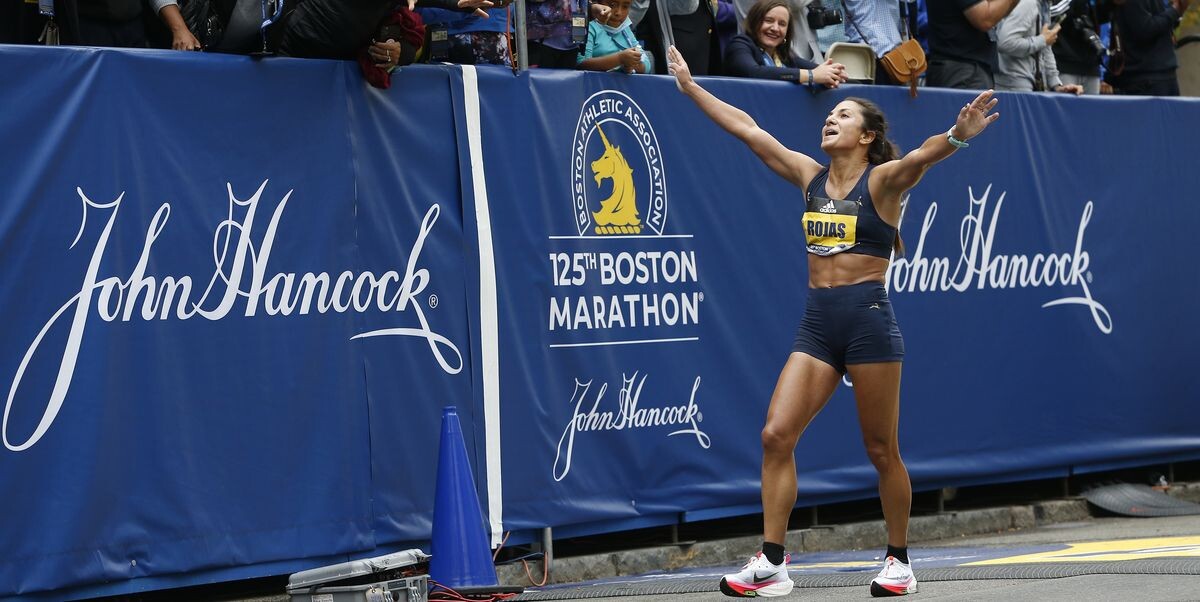
Her success on the roads has created more demands on her time, or as Nell chooses to see it, more opportunities.
“Running used to be all about just working hard and finding my limits. Now, it really is more about involvement and inspiring a little bit more because I am in the position to inspire other strong, female, and Latina athletes,” said Nell.
Growing up, Nell played basketball and soccer; she even tried figure skating. She didn’t get serious about running until college.
“My dad was a coach and a runner growing up so I was always around runners,” said Nell.
Ric set state high school records in New Mexico, was all-Ivy at Harvard, and competed at the highest levels nationally. But he left it to Nell to choose her own path.
“My dad let me make the decisions,” said Nell. “I wasn’t pressured into being a runner. That helped me grow into my love for running and do it my own way.”
And there was no question that her father would be part of that.
“I was never really concerned about coaching her, as her dad. Nell’s very coachable. I think the key thing is with a coach-athlete relationship is the coach has to be firm, on one hand, but the athlete has to be coachable, as well,” said Ric.
“There was one point where we coached a team together, he was my dad and my co-worker and my coach, so there’s a lot of family time. We make it work pretty well,” Nell said.
Ric ran Boston three times. He could barely contain himself when he saw his daughter at the front of the pack last fall.
“Oh my god, my heart went crazy on that. It was so much fun. I can’t tell you,” he said.
The Rojas team was back on the course last month. Nell is feeling good about her second shot at Boston.
“I’m running faster. My workouts are faster. I’m running more mileage. I’ve gotten a little bit more experience. I know what the course is like. There are so many reasons for me to come in this year more confident,” she explained.
“What I’m hoping now is she beats my best time, which was 2:25 so I think she’s got a good shot at it,” said Ric.
The coach is all business, but sometimes the dad just spills over.
“I can’t even say it, I’m so proud of her I can’t stand it. Very proud,” Ric said.
by Lisa Hughes
Login to leave a comment
Boston Marathon
Among the nation’s oldest athletic clubs, the B.A.A. was established in 1887, and, in 1896, more than half of the U.S. Olympic Team at the first modern games was composed of B.A.A. club members. The Olympic Games provided the inspiration for the first Boston Marathon, which culminated the B.A.A. Games on April 19, 1897. John J. McDermott emerged from a...
more...How to Qualify for the Boston Marathon
So you want to qualify for the Boston Marathon? You’re not alone. As an age-group or recreational runner, it’s one of the noblest (and most common) goals to set your sights on.
The history and prestige of the Boston Marathon are unparalleled in the world of running, which is why getting the opportunity to run the famed 26.2-mile route from the start in Hopkinton to the finish line on Boylston Street in downtown Boston is a top-shelf bucket list goal for many runners.
And rightly so. With the challenge it requires to qualify, the experience of running Boston is all that and more.
6 Tips on Qualifying for Boston
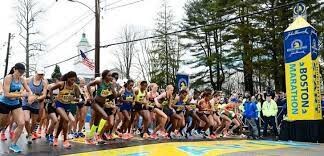
For most age-group runners, qualifying for Boston isn’t a simple task. Every athlete’s journey to trying to earn a Boston-qualifying time (BQ) is unique, and your approach needs to be specifically catered to who you are as a runner. And, like with all things running, there are no shortcuts for earning a BQ—but there are some key points to consider on your quest.
1. State Your Intention.
If you’re truly interested in qualifying for Boston, it’s a good idea to make it one of your primary goals (both in running and in life) so you can focus as much energy as possible toward it and take a smart and healthy approach to achieving it. That doesn’t mean you have to post it on Instagram, but it’s something you should share with your significant other, family members, and running buddies to generate long-term excitement and support as well as keeping you accountable on your journey.
Every age group has a different qualifying time that needs to be attained in a two-year window prior to registration opening in the fall prior to the next race the following April. For women, the age groups and times are:
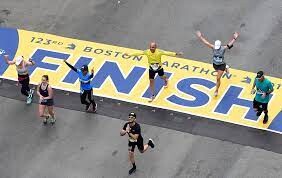
18–34: 3:30.00 (3 hours, 30 minutes, and zero seconds)
35–39: 3:35.00
40–44: 3:40.00
45–49: 3:50.00
50–54: 3:55.00
55–59: 4:05.00
60–64: 4:20.00
65–69: 4:35.00
70–74: 4:50.00
75–79: 5:05.00
80 and over: 5:20.00
Men
18-34: 3 hrs 00 min 00 sec
35-39: 3 hrs 5 min 00 sec
40-44: 3 hrs 10 min 00 sec
45-49: 3 hrs 20 min 00 sec
50-54: 3 hrs 25 min 00 sec
55-59: 3 hrs 35 min 00 sec
60-64: 3 hrs 50 min 00 sec
65-69: 4 hrs 5 min 00 sec
70-74: 4 hrs 20 min 00 sec
75-79: 4 hrs 35 min 00 sec
80 & over: 4 hrs 50 min 00 sec
There’s also the added complication that just hitting the time doesn’t guarantee entry to the race. Runners typically need to also meet faster cut-off times if registration exceeds the race capacity (see tip #6).
“It’s a great goal and a very relevant goal for a lot of a marathoners,” says New York City–based running coach Elizabeth Corkum. “When it’s your first Boston, it’s a big deal and definitely something you should be excited about.”
2. Set a Realistic Goal
For many runners, it takes a full year or two—or maybe even five or more—to develop the aerobic strength and overall fitness to be in position to reach the qualifying time in your age group.
The first step: Understand that the path to running fast enough to earn a BQ standard isn’t a quick process of instant gratification.
“A lot of runners will come to me and say I want to qualify for Boston this year because a lot of runners are always eager to do it now, but the reality is that it might take a few years,” says Chicago-area coach Jenny Spangler, who won the 1996 U.S. Olympic Trials Marathon. “It’s a great goal for many people, but it’s a commitment and you have to be realistic about where you are and where you need to get. For some runners, it will take a while. Sometimes I’ll have runners aim for running a fast half marathon first and then next year start to focus on a fast marathon.”
If you’re serious about qualifying for Boston, it’s best to connect with a coach or local training group that has a history of helping runners achieve a BQ. You’ll want to find a coach who will take into consideration both your history as a runner and as an athlete as well as your current fitness level, previous races, monthly mileage volume, injury history, and, perhaps most important, your ability to commit to a complicated training program amid your work-life balance.
“You don’t like to discourage anyone, but a Boston qualifying time is hard,” Spangler says. “So for people who can’t commit the time for training or maybe just don’t enjoy running or don’t want to put in the mileage, it might not be possible. It’s a commitment and it’s just not for everybody.”
3. Pick a Qualifying Race
One of the keys to qualifying for Boston is running a fast, USATF-certified course with a high probability of running your goal time. Typically, the races with the most qualifiers are the New York City Marathon and the Chicago Marathon, and, of course, Boston itself, but that’s largely based on the volume of runners in those races. However, those marathons can be hard to get into, so unless you already secured an entry, you should plan on another race with a high propensity of Boston-qualifying times.
One of the best options is the California International Marathon (CIM), where 25 to 35 percent of the field typically earns a BQ. The only challenge about qualifying at CIM is that it’s held the first Sunday in December, so you’ll have to wait and enter for the next Boston Marathon 16 months later.
Another great option among mid-sized races is the mid-June Grandma’s Marathon in Duluth, Minnesota, which typically has both a large number of qualifiers and a relatively high percentage of BQers. In 2019, 1,108 of its finishers (18.2 percent) earned BQ qualifiers. From 2010-2021, an average of 15.8 percent of Grandma’s finishers earned BQ times.
“Usually when people come to me, they already know which race they want to run,” says Nell Rojas, a Boulder, Colorado–based professional runner for Adidas who also coaches age-group runners. “But if not, I usually recommend California International Marathon or Grandma’s Marathon, which are fast marathons that are easy to get into with a lot of people that will be running their same speed. And that’s key because that means there will be people to run with at the pace you want to run the whole way.”
Since 2017, some of most prevalent qualifying races have been “last chance” races designed to get runners qualified right before the opening of Boston registration in mid-September. The Last Chance BQ.2 race in Grand Rapids, Michigan, has had an average of about 60 percent BQ’ers every year since 2015, while its sister event, Last Chance BQ.2 race in Geneva, Illinois, has typically had at least 50 percent of its field qualify. But both of those races are small, usually 350 runners, and registration fills up fast every spring. (The Geneva race added a spring race in 2018 and it has also typically had a 50 percent qualifying rate.)
Other small, early September races with high BQ percentages include the Erie Marathon at Presque Isle (Erie, Pennsylvania), Via Marathon (Allentown, Pennsylvania), and Tunnel Light Marathon (North Bend, Washington). A few key marathons with downhill profiles and high qualifying percentages are the St. George Marathon (St. George, Utah), Revel Big Bear Marathon (Big Bear, California), and Mountains 2 Beach Marathon (Ojai, California). Cities with mid-sized marathons that are known to have good courses for qualifying: Philadelphia; Indianapolis; Houston; Eugene, Oregon; and Santa Rosa, California.
4. Get Some Super Shoes
If you’re interested in maximizing your race-day performance, then you should consider investing in a pair of shoes enhanced with carbon-fiber plates. Yes, they’re expensive, ranging in price from $180 to $275, but the technology works—and can give you 3 to 6 percent advantage over shoes with typical foam midsoles. Nike, Adidas, Skechers, ASICS, On Brooks, HOKA, New Balance, and Saucony all make super shoes, and some of their models are among the best. But each fits and feels slightly different, so visit a local running store, if possible, and try on several pairs before buying.
“Super shoes definitely allow you to run faster,” says ASICS-sponsored pro Emma Bates, who was second at the 2021 Chicago Marathon in 2:24:20 wearing a pair of ASICS Metaspeed Sky. “I love them because they’re so comfortable, but the biggest thing is that I feel that I can recover so much quicker after a workout or a race. After Chicago, I felt like I could do a workout the next weekend. That’s insane. I love the shoes and would never imagine running in anything else ever again.”
5. Train Methodically and Consistently
Going through significant training adaptations is a key part of the process for most runners, especially if they’re new to the sport or don’t have a lot of experience with the various types of workouts in most marathon build-ups. Progress occurs based on how well you handle training volume, how much you recover, and how much time and focus you put toward non-running elements like strength work, nutrition, and rest.
“All of those things factor into how you’re going to direct someone to get to that goal, and it’s different for everyone, for sure,” Corkum says. “Some people have all the time in the world to train and that’s fantastic because we can probably stress their bodies a little bit more with training, knowing that they can rebound. But someone who is only able to sleep four hours a night and has a newborn at home, they already have that additional stress so they have to be careful about adding training stimulus so they don’t get injured or burn out.”
Most coaches recommend going through a 16-week training plan to build up to a marathon, though it could be shorter if you’re already pretty fit or longer if you need more time to get used to the rigors of high-mileage running. A good plan will include periodized segments that include two to three weeks of gradual building of aerobic fitness followed by a slightly relaxed week to allow for recovery and the training adaptations to take place.
Depending on your background and fitness, you’re likely going to be running between 50 and 80 miles per week during the peak weeks of your training plan, Rojas says. While pro runners run between 100 and 120 miles per week, she warns that excessive running volume for age-group runners can lead to fatigue, burnout, and injuries.
A training plan should include a once-a-week long run, one or two faster workouts like a tempo run or an interval session, and several recovery runs. As the training plan progresses, there will be a greater emphasis on up-tempo workouts and your long runs will approach 18 to 22 miles and start getting faster.
But even if you’re following a plan that’s the same or very similar to your running partner’s, your quest to reach a Boston qualifying time will be an individual one.
“Runners come from all different levels of fitness,” Rojas says. “It all depends on what a runner can handle, what their strengths are, what their weaknesses are.”
Spangler says most age-group runners who come to her for help in achieving a Boston qualifier typically need more mileage than intensity in their training, but sometimes it’s both. In addition to ramping up mileage gradually, she’ll sprinkle in spicier workouts like fartlek intervals or hill repeat sessions—as much as she thinks an athlete can handle.
She’ll also prescribe periodic longer tempo runs of 8 to 10 miles at marathon race pace and often have them race a half marathon midway through their training program as a way to gauge a runner’s fitness and boost confidence.
“You can just kind of see how they’re starting to handle workload hitting the paces of the workouts they’re doing and feeling good doing it,” Spangler says. “That’s when you start to get a sense that they’re going to be ready, and that’s when I start getting confident they’re ready to handle the marathon at that pace.”
6. Don’t Get Discouraged
Even if you’re well trained and in the best shape of your life, you need everything to go right on a race day to run your best. Achieving a Boston Marathon–qualifying time can take several years and, if you miss it once or twice, it can start to feel like a never-ending process. Unfortunately, even when you achieve the time, you still might not be able to run the race. Because of field size limitations and increased interest, runners usually need to also meet faster cut-off times than the time listed in tip #1 to get in.
While every runner who applied for the 2022 race was granted entry—likely because of a downturn in interest because of the still-lingering COVID-19 pandemic—in the previous 10 years runners needed to be 1 minute, 2 seconds to 7 minutes, 47 seconds faster than their qualifying time to get in. Depending on the year and the volume of qualified runners, that’s meant that the BAA has had to reject between 1,947 and 9,215 qualified runners.
“It’s such a tough thing and to recreational runners, I think it’s a bit jarring because they’re not used to that,” Corkum says. “One of the beautiful things about Boston is that it’s one of those few marathons where you can’t just send in your credit card number and know that you have it on your calendar. You have to earn it. But the other side of that is the emotional investment and highs and lows that you’re accepting along with it.”
Developing an indefatigable sense of optimism and a love for running will be helpful in your quest to qualify for the Boston Marathon and eventually running it. There will be plenty of hiccups along the way (missed workouts, injuries, life events) so it’s best to make it part of the fabric of your life and not merely a box to check off, Corkum says.
“Running is a patient person’s sport and I think that’s why you really have to love it,” Corkum says. “I think some people might not necessarily love running but they love the idea of achieving ‘that thing,’ and you have to realize there are so many hours and steps that go into making it a lifelong thing, and for a lot of us it becomes that.”
by Brian Metzler
Login to leave a comment
Boston Marathon
Among the nation’s oldest athletic clubs, the B.A.A. was established in 1887, and, in 1896, more than half of the U.S. Olympic Team at the first modern games was composed of B.A.A. club members. The Olympic Games provided the inspiration for the first Boston Marathon, which culminated the B.A.A. Games on April 19, 1897. John J. McDermott emerged from a...
more...Ethiopia’s Askale Merachi and Kelkile Gezahegn will defend their titles at the 50th Chevron Houston Marathon, while Kenya’s Vicoty Chepngeno and Shadrack Korir lead the entries for the Aramco Half
Merachi won in Houston in 2020 in 2:23:29, finishing more than a minute ahead of the rest of the field. She went on to win the Taipei Marathon later that year in 2:28:31, but hasn’t raced since then, so her form going into this weekend’s race is relatively untested.
She will face stiff competition from compatriot Biruktayit Eshetu Degefa, a three-time winner in Houston who is aiming to become the race’s first four-time winner. She finished runner-up to Merachi in 2020, clocking 2:24:47. Her PB stands at 2:22:40, set in Toronto in 2019, while her fastest time in Houston is the 2:23:28 she ran to win three years ago.
Two-time Chicago Marathon winner Atsede Baysa has the fastest PB of the field with 2:22:03. A sub-2:25 time may be required to make the podium on Sunday, but the last time the 34-year-old Ethiopian bettered that barrier was back in 2012.
Ethiopian women have won the past 14 editions of the Houston Marathon, but that streak could be under threat on Sunday as Keira D’Amato aims to become the first US woman to win the Houston Marathon since 2005.
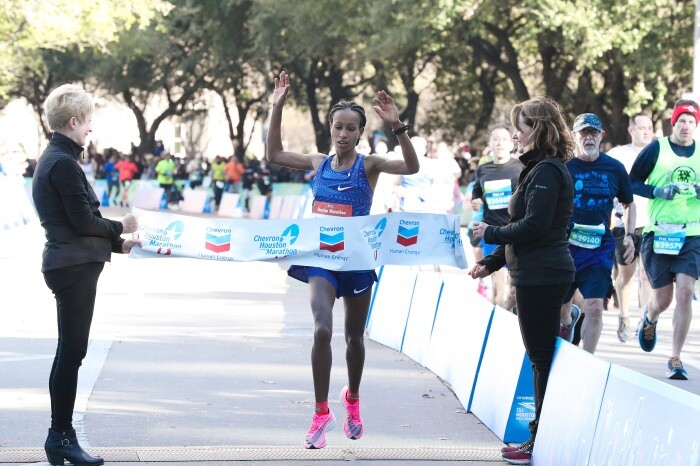
The 37-year-old, who took a complete break from running between 2009 and 2016, has been racking up impressive performances on the roads in recent years. She set a marathon best of 2:22:56 and a North American 10-mile record of 51:23 in 2020, finished fourth at last year’s Chicago Marathon, and clocked a half marathon PB of 1:07:55 last month. If conditions are good, the course record of 2:23:14 – set by Alemitu Abera in 2012 – could be under threat.
Ethiopian marathon debutante Tsige Haileslase and USA’s Robert Groner, who finished sixth at the 2019 World Championships, are among the other contenders.
Gezahegn, the defending men’s champion, won with 2:08:36 two years ago and finished two minutes clear of his nearest rivals. His only race since then was the 2021 Boston Marathon, where he finished 15th in 2:12:37. A 2:05:56 runner at his best, the 25-year-old will be keen to use this weekend’s race as an opportunity for redemption.
If John Langat can reproduce his form from 2019, when he won in Eindhoven in a PB of 2:07:11, he could contend for the victory on Sunday. Japan’s Kenta Uchida will also be a formidable opponent. He has a lifetime best of 2:08:12 and will be keen to earn his first marathon victory.

Bahrain’s Abdi Abdo, Ethiopia’s 2008 world indoor 3000m champion Tariku Bekele and US marathon debutant Frank Lara are others to watch out for.
Vicoty Chepngeno will start as the favourite for the Houston Half Marathon, held concurrently with the marathon. The 28-year-old Kenyan has an impressive record in US road races; she has won nine of her past 10 half marathons on US roads, and her lifetime best of 1:07:22 was set in her most recent outing over the distance, in Philadelphia two months ago. Despite her extensive racing experience, though, this will be Chepngeno’s first Houston Half Marathon.
Compatriot Monicah Ngige, meanwhile, will be making her third Houston Half Marathon appearance. The 28-year-old set her PB of 1:07:29 there in 2019. More recently, she finished fourth at the Boston Marathon in October on her debut over the distance, clocking 2:25:32.
Sara Hall leads the US entrants. The 38-year-old has focused more on the marathon in recent years, achieving podium places at the 2020 London Marathon and the 2021 Chicago Marathon, also clocking a PB of 2:20:32 in between those outings. But she has also won her two most recent half marathons, setting a PB of 1:08:18 in 2020.
Shadrack Kimining Korir returns to Houston after finishing third in 2020 in a personal best of 59:27, just two seconds shy of the winner. His most recent outing was at the Lisbon Half Marathon in October, where he finished fifth in 1:02:42.
Wilfred Kimitei also competed in Lisbon towards the end of last year, albeit in a different event to the one where Korir raced, and finished 11th in 1:00:03 – just 23 seconds shy of the PB he set in Ras Al Khaimah in 2018.
Ethiopia’s Milkesa Mengesha also heads to Houston in good form. The 2019 world U20 cross-country champion, still only 21, finished ahead of Kimitei in Lisbon in November, clocking a PB of 59:48 in what was just his second half marathon to date. Earlier in 2021 he set a 5000m PB of 12:58.28 and finished 10th in the Olympic final at that distance.
Kenya’s Raymond Magut, who clocked a PB of 1:00:00 in Herzogenaurach in September, should also be a strong contender, along with Ethiopia’s Bayelign Teshager and Eritrea’s Tsegay Tuemay.
Elite fields
WOMEN Half marathon
Vicoty Chepngeno (KEN) 1:07:22
Monicah Ngige (KEN) 1:07:29
Sara Hall (USA) 1:08:58
Caren Maiyo (KEN) 1:09:20
Sarah Pagano (USA) 1:09:41
Emily Durgin (USA) 1:09:47
Maegan Krifchin (USA) 1:09:51
Andrea Ramirez Limon (MEX) 1:10:20
Dominique Scott (ZAF) 1:10:42
Elaina Tabb (USA) 1:10:44
Nell Rojas (USA) 1:10:45
Julia Griffey (USA) 1:11:04
Emily Setlack (CAN) 1:11:41
Dakotah Lindwurm (USA) 1:11:43
Maor Tiyouri (ISR) 1:11:50
Paige Stoner (USA) 1:11:53
Jessica Judd (GBR) debut
Fiona O’Keeffe (USA) debut
Maddie Alm (USA) debut
Marathon
Atsede Baysa (ETH) 2:22:03
Biruktayit Eshetu Degefa (ETH) 2:22:40
Keira D’Amato (USA) 2:22:56
Askale Merachi (ETH) 2:23:29
Roberta Groner (USA) 2:29:09
Kathya Mirell Garcia Barrios (MEX) 2:34:46
Militsa Mircheva (BGR) 2:35:03
Tsige Haileslase (ETH) debut
Maggie Montoya (USA) debut
Emily Kearney (GBR) debut
Alice Wright (GBR) debut
MEN Half marathon
Shadrack Kimining Korir (KEN) 59:27
Wilfred Kimitei (KEN) 59:40
Milkesa Mengesha (ETH) 59:48
Raymond Magut (KEN) 1:00:00
Bayelign Teshager (ETH) 1:00:31
Tsegay Tuemay (ERI) 1:00:50
Patrick Tiernan (AUS) 1:01:22
Reed Fischer (USA) 1:01:37
Rory Linkletter (CAN) 1:01:44
Reid Buchanan (USA) 1:01:45
Colin Mickow (USA) 1:01:47
Matt Llano (USA) 1:01:47
Harvey Nelson (USA) 1:01:48
John Raneri (USA) 1:01:51
Brogan Austin (USA) 1:01:52
Zouhair Talbi (MAR) 1:02:00
Kirubel Erassa (USA) debut
Marathon
Kelkile Gezahegn (ETH) 2:05:56
John Langat (KEN) 2:07:11
Kenta Uchida (JPN) 2:08:12
Abdi Abdo (BRN) 2:08:32
Elisha Barno (KEN) 2:09:32
Tariku Bekele (KEN) 2:09:33
Augustus Maiyo (USA) 2:10:47
Jesus Arturo Esparza (MEX) 2:11:04
Birhanu Kemal Dare (ETH) 2:12:21
Tyler Jermann (USA) 2:12:40
Frank Lara (USA) debut
James Ngandu (KEN) debut
Luke Caldwell (GBR) debut
by World Athletics
Login to leave a comment
Chevron Houston Marathon
The Chevron Houston Marathon offers participants a unique running experience in America's fourth largest city. The fast, flat, scenic single-loop course has been ranked as the "fastest winter marathon" and "second fastest marathon overall" by Ultimate Guide To Marathons. Additionally, with more than 200,000 spectators annually, the Chevron Houston Marathon enjoys tremendous crowd support. Established in 1972, the Houston Marathon...
more...Keira D’Amato is set to run fast at the Houston Marathon
On Sunday, Keira D’Amato will head to the start line of the Houston Marathon with the expectation that she will run under two hours and twenty-two minutes. Her current personal best sits at 2:22:56, achieved at the Marathon Project in Arizona, but D’Amato knows, based on her workouts and performances like her 67:55 to win the US Half Marathon Championships in December, that she is fitter than when she ran that 2:22:56 in December 2020. In fact, things are going so well that on December 28, she told Women’s Running that, if she had a strong final month of training, she might even go for Deena Kastor‘s 2:19:36 American record.
That the 37-year-old D’Amato is in a position to even discuss the American record is one of the unlikelier stories in US distance running history. This was a woman who started out as an 800/1500 runner, took seven years away from the sport as she got married, became a mom of two and a full-time realtor, and as recently as 2019 had never run faster than 2:40 in the marathon.
“It seriously blows my mind,” D’Amato told LetsRun on Wednesday. “On my warmup before my workout today, I was thinking that in my second marathon back on my comeback tour [in Richmond in 2017], I went into the marathon thinking that I didn’t think I could break 3:00 that day.”
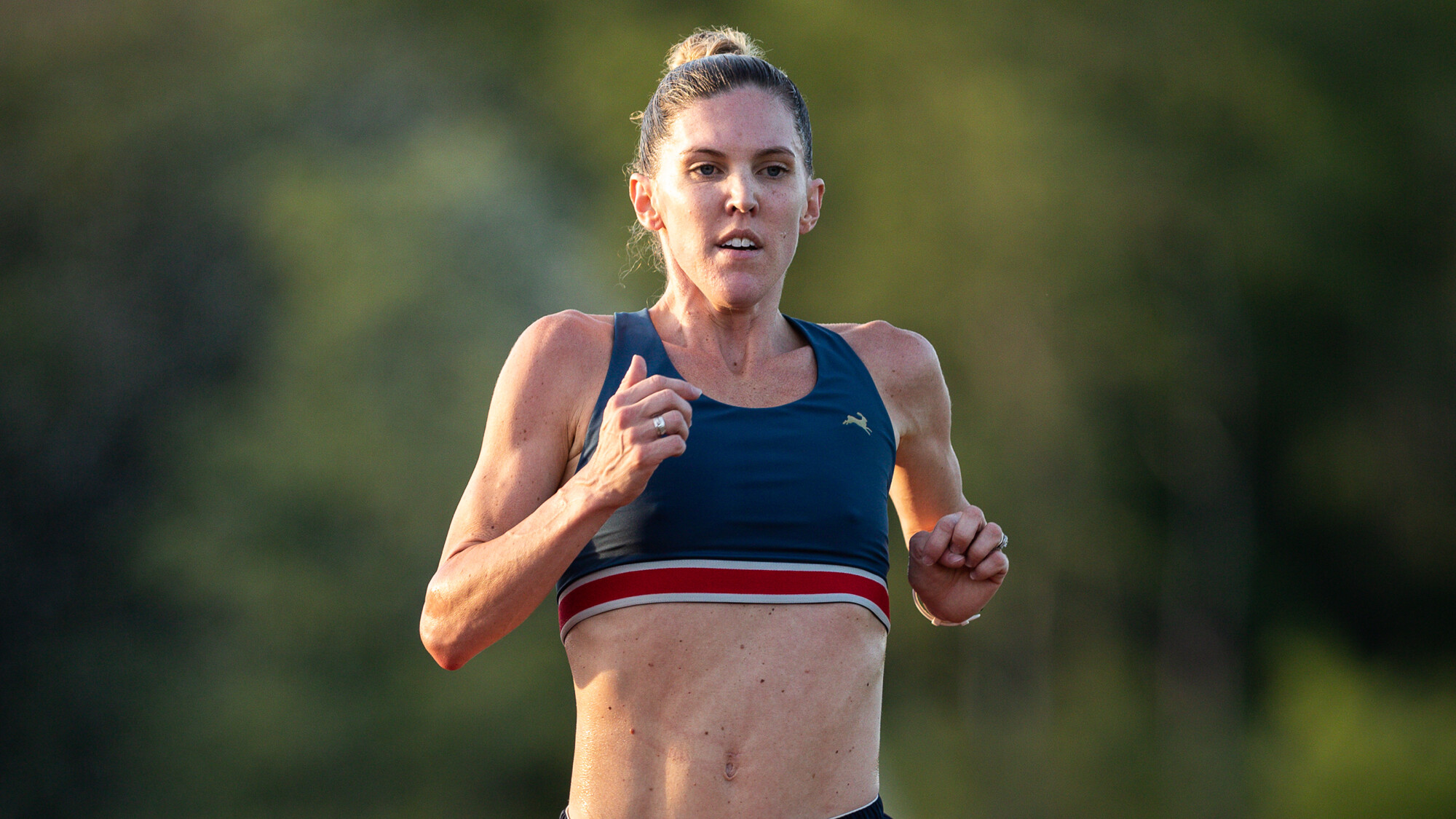
D’Amato wound up running 2:47 and hasn’t stopped improving.
“It’s so hard to wrap my head around it because there’s 50% of my brain that is like, ‘What in the world is going on, how did I get there?’ And there’s 50% that is like really confident, that’s like, ‘Keira, you’ve worked your tail off, you’ve been putting in the miles for years and years and years, and you have, in my opinion, the best coach in the nation, Scott Raczko.'”
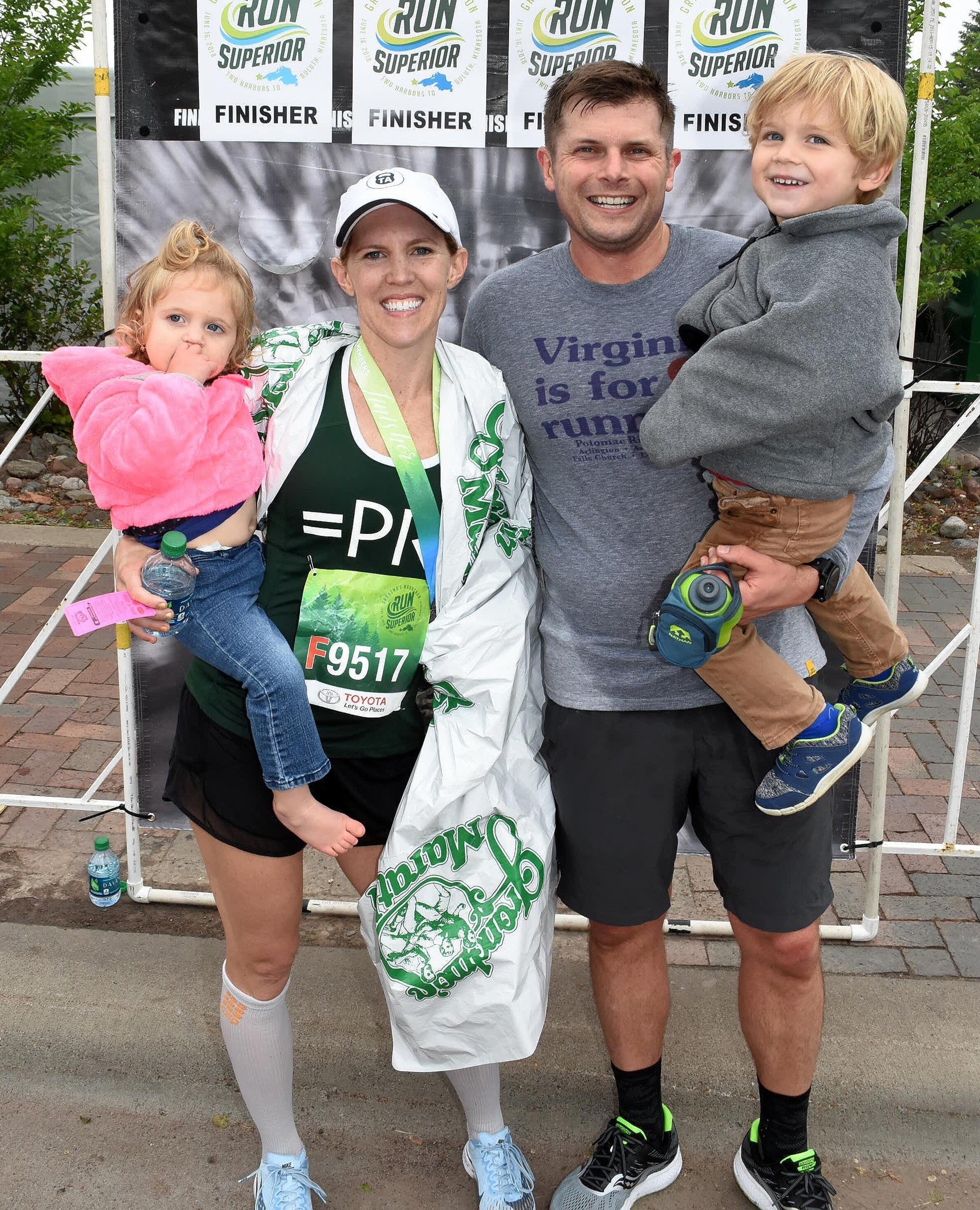
A number of fast Americans will descend on Houston this weekend for the half and full marathons on Sunday. Sara Hall, Nell Rojas, and Annie Frisbie are all set to feature in the half, while 61:00 half marathoner Frank Lara will make his marathon debut. But the most fascinating storyline is D’Amato, who will look to start 2022 with a bang after an up-and-down 2021 season.
Following a 2020 campaign featuring personal best after personal best, D’Amato spent the first half of 2021 battling a hamstring injury. She tried to fight through it but ultimately had to take time off to treat the underlying muscle imbalance, realigning her hips and strengthening her glutes. That recovery knocked her out of the biggest meet of the year, the US Olympic Trials, where D’Amato had planned on running the 5,000 and 10,000 meters.
“It sucked, man,” D’Amato said.
D’Amato started working out again in August and ran the Chicago Marathon in October, finishing 4th in 2:28:22. But she knew she wasn’t at 100%. Under Raczko, D’Amato trains in four-week cycles, building up for those four weeks before taking a down week to reset. Usually, she likes to have four of those cycles under her belt for a marathon; her late start meant she only had two of them before Chicago.
D’Amato will face three-time Houston champion Biruktayit Eshetu Degefa (2:22:40 pb) and 2016 Boston Marathon champion Atsede Baysa (2:22:03) in the women’s race, and while she’d like to earn her first career marathon victory, her focus is squarely on running fast.
Leading into the race, D’Amato has done everything she can to maximize her chance of success. She has still been working her job as a realtor in Virginia, but in recent weeks she has scaled back her hours and not taken on any new clients. She even took her kids out of school this week to limit her exposure to COVID — cases have been on the rise in her area and the last thing she wanted was to withdraw at the eleventh hour because of a positive test (they will return to school after the race). It’s not a decision D’Amato feels completely comfortable with — “I’m definitely not up for any mom of the year awards,” she said — but she hopes she can make it worth it with a special performance on Sunday.
by Jonathan Gault
Login to leave a comment
Chevron Houston Marathon
The Chevron Houston Marathon offers participants a unique running experience in America's fourth largest city. The fast, flat, scenic single-loop course has been ranked as the "fastest winter marathon" and "second fastest marathon overall" by Ultimate Guide To Marathons. Additionally, with more than 200,000 spectators annually, the Chevron Houston Marathon enjoys tremendous crowd support. Established in 1972, the Houston Marathon...
more...Olympic Medalists Will Headline 2022 Boston Marathon Women’s Field
Peres Jepchirchir of Kenya, the 2021 Olympic gold medalist in the marathon, and her countrywoman Joyciline Jepkosgei, who ran the fastest marathon of 2021, 2:17:43, when she won the London Marathon, headline the Boston Marathon elite women’s field for 2022.
American Molly Seidel, who won Olympic bronze last summer, will also line up in Hopkinton on April 18.
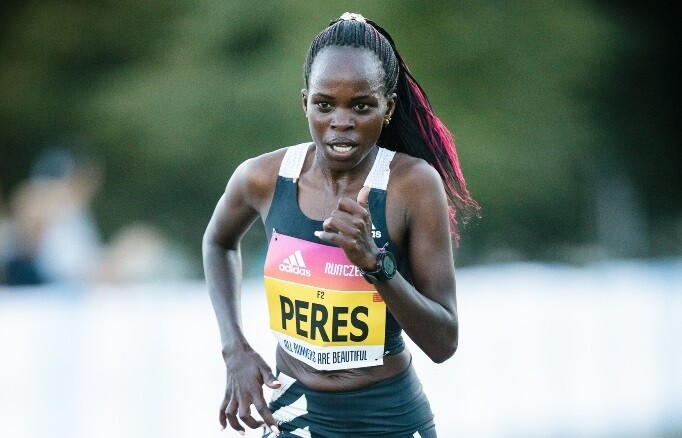
The race marks the 50th anniversary of the first official women’s field at the Boston Marathon. This year’s elite women entrants include Olympic and Paralympic medalists, World Major Marathon champions, and sub-2:20 marathoners.
The race will include four Ethiopians with sub-2:20 credentials: Degitu Azimeraw, Roza Dereje, Zeineba Yimer, and Tigist Girma.
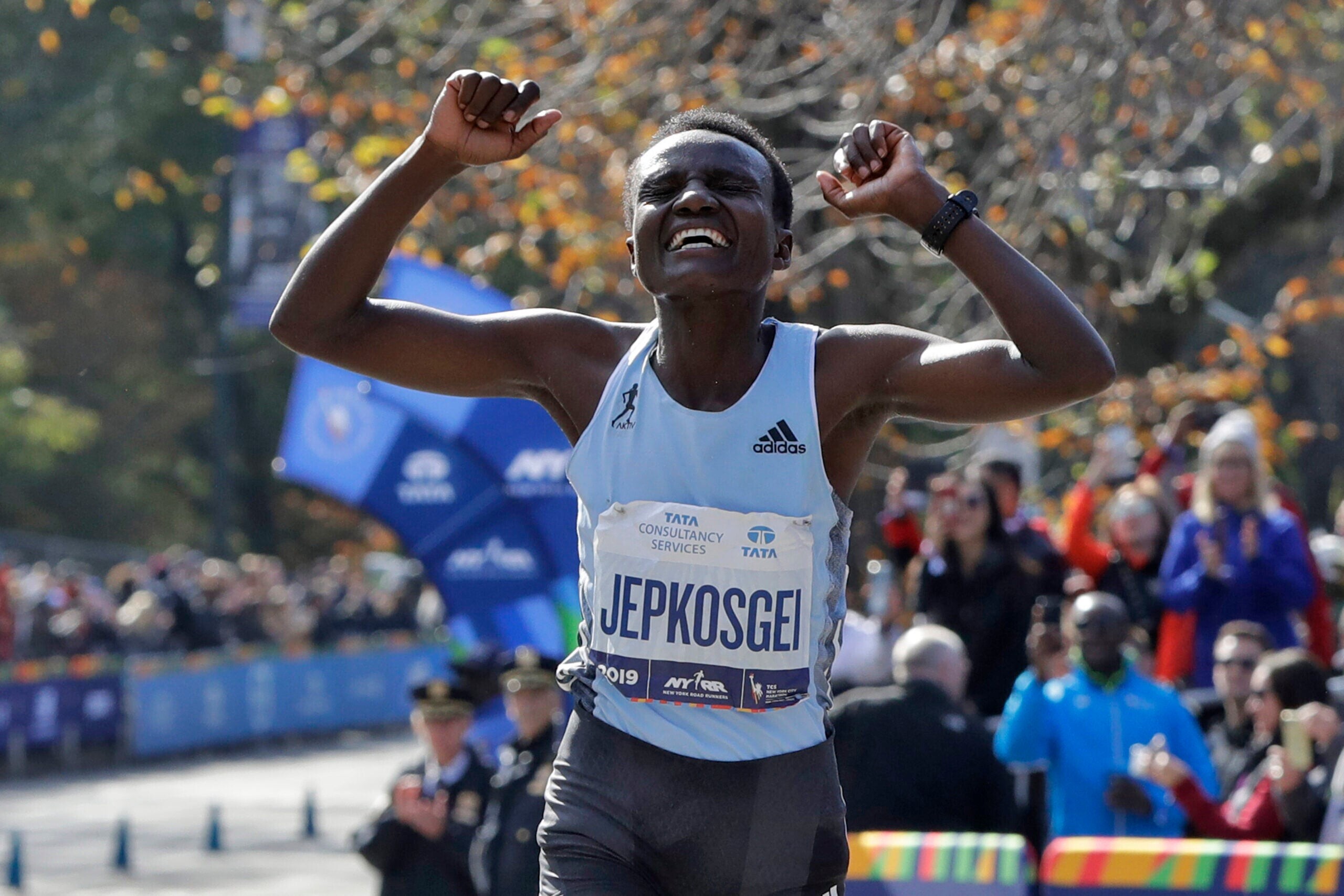
Former Boston Marathon champions Des Linden (2018) and Edna Kiplagat (2017) will race, as will Mary Ngugi of Kenya, who was third in Boston last October.
In addition to Linden, Sara Hall, who is the second-fastest woman in American marathoning history, is part of a strong crop of American talent. Nell Rojas, who was the top American finisher at Boston last year, and top-10 2020 Olympic Trials finishers Kellyn Taylor and Stephanie Bruce are also scheduled to run.
Other notable competitors include Canadian Olympian and national record-holder Malindi Elmore, two-time Canadian Olympian Natasha Wodak, and Charlotte Purdue, who is the third-fastest woman in British marathon history.
The Boston Marathon benefits from being the only World Marathon Major race on the calendar in the spring.
“As we look to celebrate the trailblazing women of 1972, we are delighted to welcome the fastest and most accomplished women’s field in the history of the Boston Marathon,” BAA President and CEO Tom Grilk said in a press release. “Though there have been many milestones in the five decades since the women’s division was established in Boston, this field of Olympic and Paralympic medalists, Boston champions, and global stars will make this a race to remember on Patriots’ Day.”
Elite field
Peres Jepchirchir (KEN) 2:17:16Joyciline Jepkosgei (KEN) 2:17:43Degitu Azimeraw (ETH) 2:17:58Roza Dereje (ETH) 2:18:30Zeineba Yimer (ETH) 2:19:28 Edna Kiplagat (KEN) 2:19:50Tigist Girma (ETH) 2:19:52Maurine Chepkemoi (KEN) 2:20:18Sara Hall (USA) 2:20:32Desiree Linden (USA) 2:22:38Viola Cheptoo (KEN) 2:22:44 Purity Changwony (KEN) 2:22:46Charlotte Purdue (GBR) 2:23:26Kellyn Taylor (USA) 2:24:28Molly Seidel (USA) 2:24:42Malindi Elmore (CAN) 2:24:50Mary Ngugi (KEN) 2:25:20 Monicah Ngige (KEN) 2:25:32Natasha Wodak (CAN) 2:26:19Nell Rojas (USA) 2:27:12 Stephanie Bruce (USA) 2:27:47Dakotah Lindwurm (USA) 2:29:04Roberta Groner (USA) 2:29:09Angie Orjuela (COL) 2:29:12Bria Wetsch (USA) 2:29:50Maegan Krifchin (USA) 2:30:17Elaina Tabb (USA) 2:30:33Lexie Thompson (USA) 2:30:37Kate Landau (USA) 2:31:56
by Chris Hatler
Login to leave a comment
Boston Marathon
Among the nation’s oldest athletic clubs, the B.A.A. was established in 1887, and, in 1896, more than half of the U.S. Olympic Team at the first modern games was composed of B.A.A. club members. The Olympic Games provided the inspiration for the first Boston Marathon, which culminated the B.A.A. Games on April 19, 1897. John J. McDermott emerged from a...
more...Nell Rojas was so ready for Boston and ended up sixth setting a PR and finishing first American while Shalane Flanagan finishes her 4th major
The top US woman at the Boston Marathon was Nell Rojas from Boulder, Colo., placing sixth overall in a personal best 2 hours, 27 minutes, 12 seconds. It was her fourth Marathon.
She paced the pack for the first 10 kilometers, which was not part of her plan.
“I was expecting this one to go out fast and to just be able to hang on to the back of the pack,” said Rojas. “I never lead, so that was interesting for me.”
Despite being the top US finisher, Rojas believes she has plenty of room for improvement, citing downhills and staying relaxed in the pack as weaknesses.
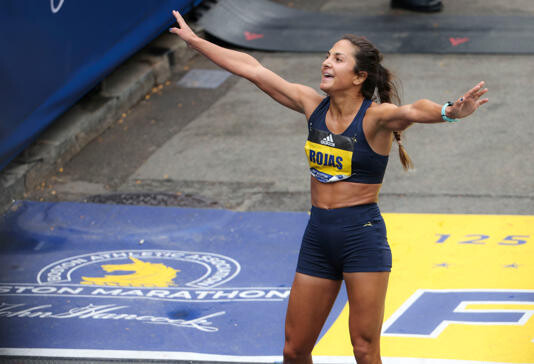
“I learned a lot,” said Rojas. “I think that now that I know the course I can alter my training accordingly and run faster next time.”
Rojas who finished ninth at the 2020 Olympic Trials in 2:30:29, ran for the University of Northern Arizona and spent much of her mid-20s focusing on triathlons before transitioning back to distance running in 2018. Before Monday, her personal best in the marathon was 2:28:06.
Rojas is a coach in Boulder, where she developed a running and strength training program for all ages alongside her father, Ric Rojas.
Nell credits her father with being a role model athletically.
“Just growing up with that inspiration, trying to follow in his footsteps has been super helpful,” she said. “He has been my biggest supporter and cheerleader.”
The second American finisher was Elaina Tabb of Allison Park, Pa., She finished 12th in 2:30:33 in her first major marathon. Much of Tabb’s prior experience came in the half-marathon, where she placed 64th in the 2018 World Championships. She finished 24th at the 2021 Olympic Trials in 10,000 meters.
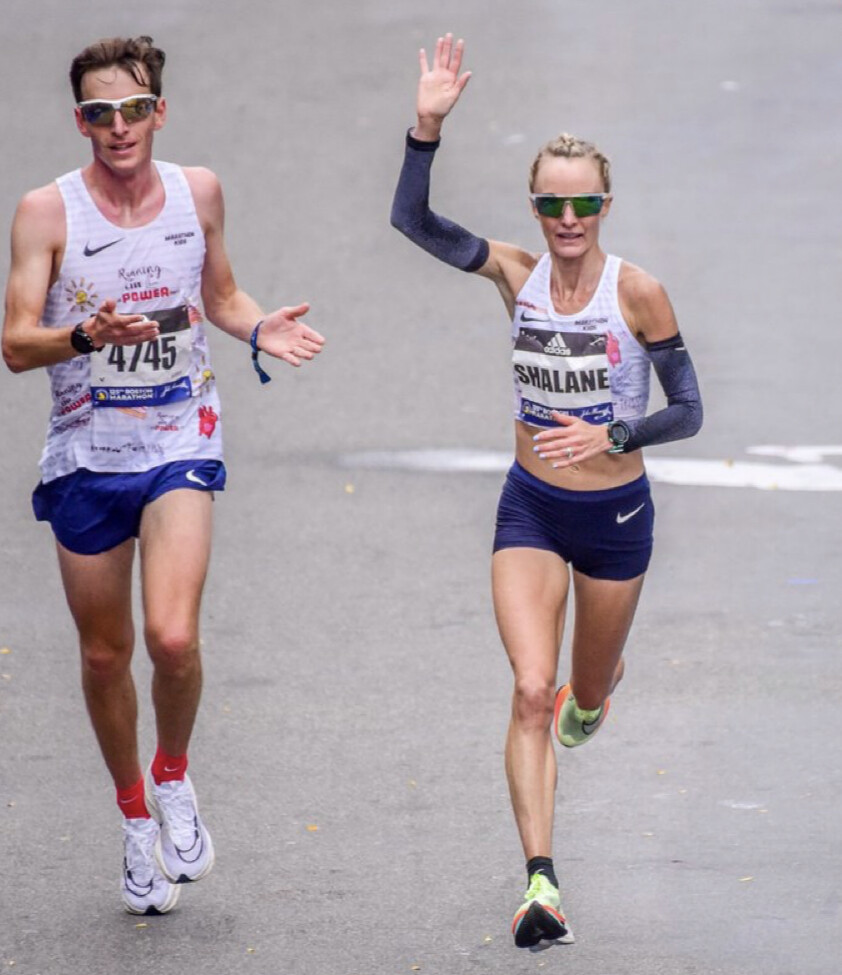
Marblehead native Shalane Flanagan, a former New York City Marathon winner and Olympic 10,000-meter silver medalist, also competed, just one day after running the Chicago Marathon. She placed 33rd on the women’s side in both races, finishing Boston in 2:40:36 and Chicago in 2:46:39. Flanagan retired in 2019 but returned this year in an attempt to run all six majors under three hours. Her average after running four marathons in 16 days is 2:40:13. Her time in Berlin (9/26) was 2:38:32 and London (10/3) 2:35:04.
2018 Boston Marathon champion Desiree Linden placed 16th race with a time of 2:35:25. It wasn’t the performance for Linden hoped for, but she enjoyed the experience on one of her favorite courses.
“I was just excited to get out there,” said Linden. “Yeah, I didn’t have the day that I wanted but it was a pleasure to be back on the course and see the crowds.”
Linden plans to run the New York City Marathon on November 7. Boston was her main focus but is glad to have another race to run.
“It’s nice to have the next one,” said Linden. “To be able to say ‘Hey maybe this one will build and help me get ready for that.’ ”
Login to leave a comment
Boston Marathon
Among the nation’s oldest athletic clubs, the B.A.A. was established in 1887, and, in 1896, more than half of the U.S. Olympic Team at the first modern games was composed of B.A.A. club members. The Olympic Games provided the inspiration for the first Boston Marathon, which culminated the B.A.A. Games on April 19, 1897. John J. McDermott emerged from a...
more...Kenya´s Diana Kipyogei Wins Boston Marathon Women’s Race
Diana Kipyogei of Kenya pulled away from the pack late in Monday’s 125th Boston Marathon and crossed the finish line with a convincing victory. It is Kipyogei’s first Boston win and first win in a World Major.
Kipyogei broke the tape with an unofficial finish time of 2:24:45. The 27-year-old had only run two other marathons heading into Monday’s race, winning the 2020 Istanbul Marathon and placing third in the 2019 Ljubljani Marathon.

Kipyogei broke away from the pack at the 1:56 mark, and pulled away for good at the 22-mile mark. She crossed the line 24 seconds ahead of 2017 Boston winner Edna Kiplagat, who finished second at 2:25:09. Mary Ngugi (2:25:20) and Monicah Ngige (2:25:32) finished third and fourth, respectively, to give Kenya the top four finishers in the Women’s race.

Nell Rojas of Boulder, Colorado was the top American finisher, placing sixth with an unofficial finish of 2:27:12. Des Linden, who won the Boston Marathon in 2018, finished 17th in the Women’s field with a 02:35:25.
by CBS Boston
Login to leave a comment
Boston Marathon
Among the nation’s oldest athletic clubs, the B.A.A. was established in 1887, and, in 1896, more than half of the U.S. Olympic Team at the first modern games was composed of B.A.A. club members. The Olympic Games provided the inspiration for the first Boston Marathon, which culminated the B.A.A. Games on April 19, 1897. John J. McDermott emerged from a...
more...Cheserek, Rojas win ‘emotional’, long-delayed Cooper River Bridge Run
A 27-year-old Kenyan man was the first to finish the 44th Annual Cooper River Bridge Run.
Edward Cheserek completed the race with a time of 28:25, a pace of 4:34 per mile. Cheserek, who now lives in the United States, is a 17-time NCAA champion at the University of Oregon.
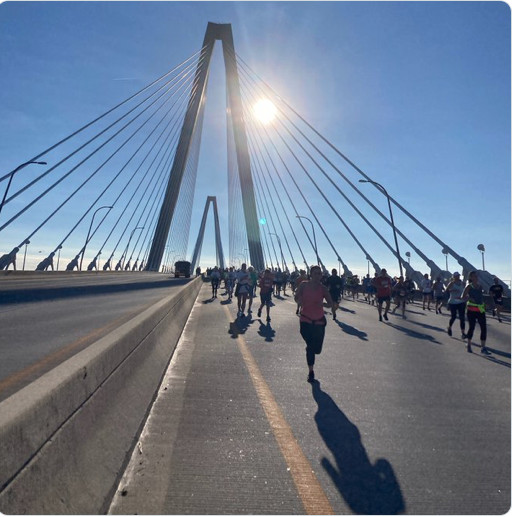
He was a runner-up at the 2021 Great North Run and his all-time personal best in a 10K is 27:23.
The leaderboard listed the top Female Elite runner as Nell Rojas from Boulder, Colorado with a time of 31:52, and a pace of 5.07 per mile.
The Bridge Run began at 8 a.m. Saturday with a smaller-than-normal crowd of runners. The 15th annual Wheelchair Division race began just before 7:30 a.m. with nine participants.
The Arthur Ravenel Bridge closed at 7 a.m. Saturday, an hour before the official start of the race.
The bridge, along with the rest of the race route shut down at 7 a.m. The route and support streets will remain closed until the final participant clears the area. Many downtown roads that shut down earlier Saturday morning are expected to reopen by 2 p.m.
The Ravenel Bridge will reopen after police and media are cleared off the bridge and any debris from the race is removed.
This year’s event is the first in-person Bridge Run held since April 6, 2019. The event planned for 2020 was changed to a virtual run because of the COVID-19 pandemic.
Organizers imposed a lower-than-usual cap on the total number of runners and walkers for this year’s 10K event, limiting the total to 25,000 from its usual 40,000. That means more than a third fewer people will “Get Over It” in this year’s event, a reference to the iconic 2.5 mile Arthur Ravenel Bridge that serves as part of the course.
All of the individual registrations for the 25,000 in-person spots sold out.
People who take part in the event were told they would be required to show proof of full vaccination against COVID-19 or to provide proof of a negative test conducted within 72 hours of the time they picked up their race packet.
But Bridge Run organizers say there will be food, entertainment, vendors, and souvenirs at the post-event festival at Marion Square.
The event will run until 12 p.m. on race day.
44 years of the Bridge Run
The Cooper River Bridge Run is the third-largest 10K race in the United States. It is normally held on the first Saturday in April unless that Saturday falls on Easter weekend.
Dr. Marcus Newberry founded the Cooper River Bridge Run in 1978. The 10K’s course takes runners down Coleman Boulevard through Mount Pleasant, over the Arthur Ravenel Bridge and into downtown Charleston.
Participants include world-class athletes as well as running enthusiasts, walkers and their friends and family members. The run has an annual grant program to promote health and wellness, supporting a dozen charities through fundraising and promotion.
In the race’s very first running on April 2, 1978, 766 finishers crossed the former Silas Pearman Bridge. It was one of the hottest temperatures on record at 82 degrees at the 10 a.m. start time. That was the only year the Bridge Run was held on a Sunday.
By 1980, the course had shifted to the former Grace Memorial Bridge where it would remain until 1995 when it returned to the Pearman Bridge.
Only once in the race’s history did it end in a tie. That happened on March 29, 1980, and the record time is 31:26.
Both of those bridges were replaced in 2006 by the Ravenel Bridge. The all-time record number of registrations occurred that same year when 45,663 signed up. Of those, 33,742 finished the race that year.
The event received the Governor’s Cup Award in 2019 for its impact on Tourism and Travel. It has a direct economic impact of $30 million.
The average age of participants in the annual event is 32.9, but people of all ages have taken part over more than four decades.
A virtual run replaced the traditional race in 2020 because of the pandemic. The 2021 event, which was originally planned for its late March or early April timeframe, was postponed to September, also because of the pandemic.
James Koskei of Kenya holds the current record for the all-time top performance in the men’s open category with a finish time of 27:40 in 2000. Elana Mayer, from South Africa, holds the women’s open category best time at 31:19, set in 1997.
For wheelchair finishers, the records are 24:30, set by Tyler Byers in 2007 and 37:10, set by Ilana Dupont in 2013.
Silas Kipruto and Monicah Ngige were the winners of 2019′s event, with finish times through the 6.2-mile course of 27:58 and 31:37 respectively.
Kipruto, then 34, has been in the top five finishes numerous times in some of the world’s most competitive races. Kipruto finished with a time of 27:58, securing the $10,000 top prize.
Monicah Nigige, then 25, was the top female Elite finisher, winning her third Cooper River Bridge Run in the past four years.
Login to leave a comment
Cooper River Bridge Run
The Cooper River Bridge Run provides a world-class 10-K foot race held in Charleston, S. Carolina. The race promotes continuous physical activity and a healthy lifestyle through education and opportunity. On Sunday morning, April 2, 1978, the starting gun was fired for the First COOPER RIVER BRIDGE RUN and the race began. Even at that time it was successful beyond...
more...Nell Rojas Outkicks Jenny Simpson at 2021 Credit Union Cherry Blossom Ten Mile
On a warm and crystal clear late summer morning in our Nation’s Capital, American Nell Rojas won a thrilling race among the top women runners at this year’s Credit Union Cherry Blossom Ten Mile (CUCB), while Kenyan Edwin Kimutai left the rest of the men’s field in his footsteps 25 minutes into the race to handily win the men’s race.
With his 33-second victory, Kimutai honored the recent passing of his wife, while Rojas surprised all the pundits when she sprinted away from Jenny Simpson with less than one half mile left in the race to win the 2021 USATF Women’s 10 Mile Championship Presented by Toyota.
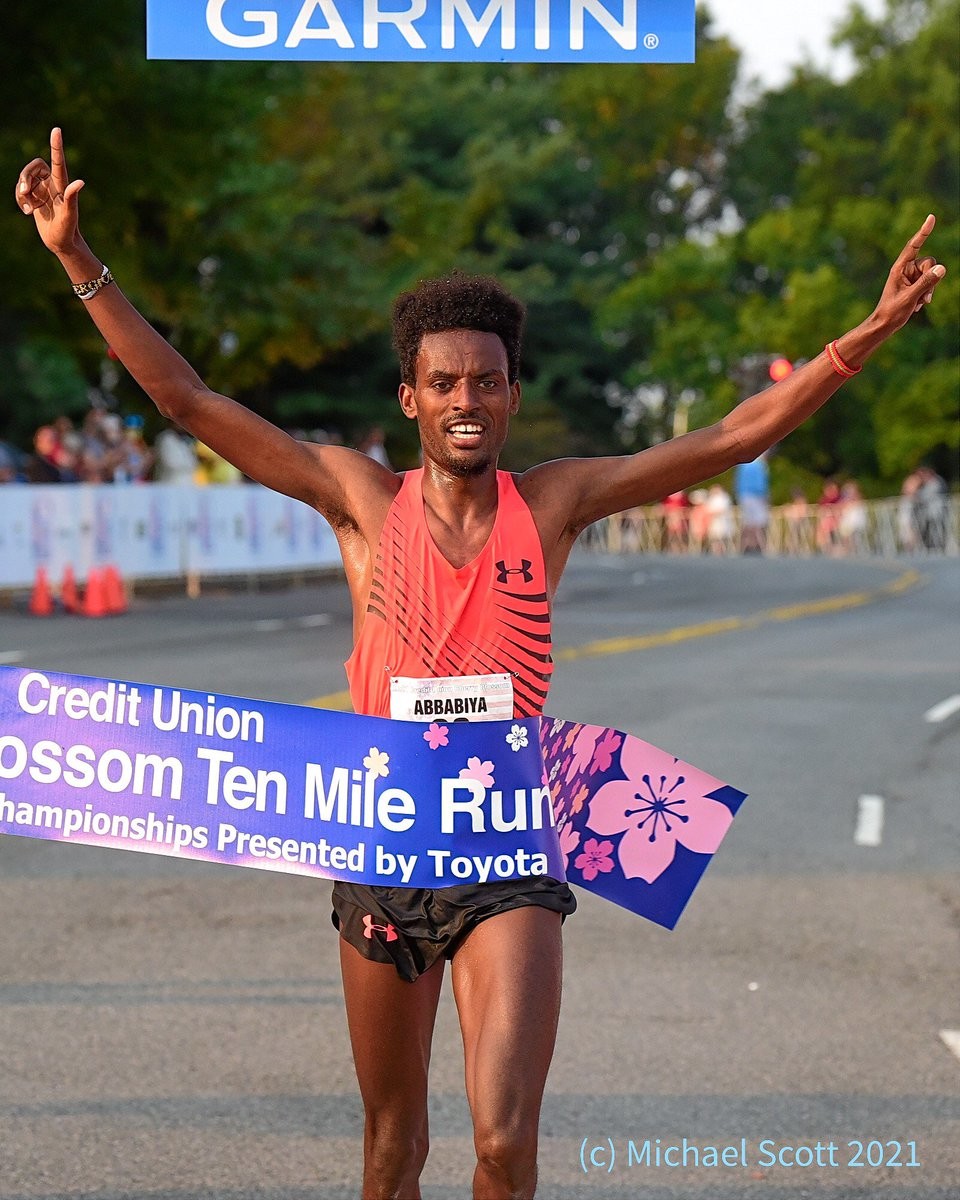
“I had zero expectations on place or time,” said Rojas in a post-race interview. “At seven or eight miles, I could tell Jenny and the others were working hard, and I was like ‘I’m not working hard.’ At that point I was OK letting myself believe I could win.”
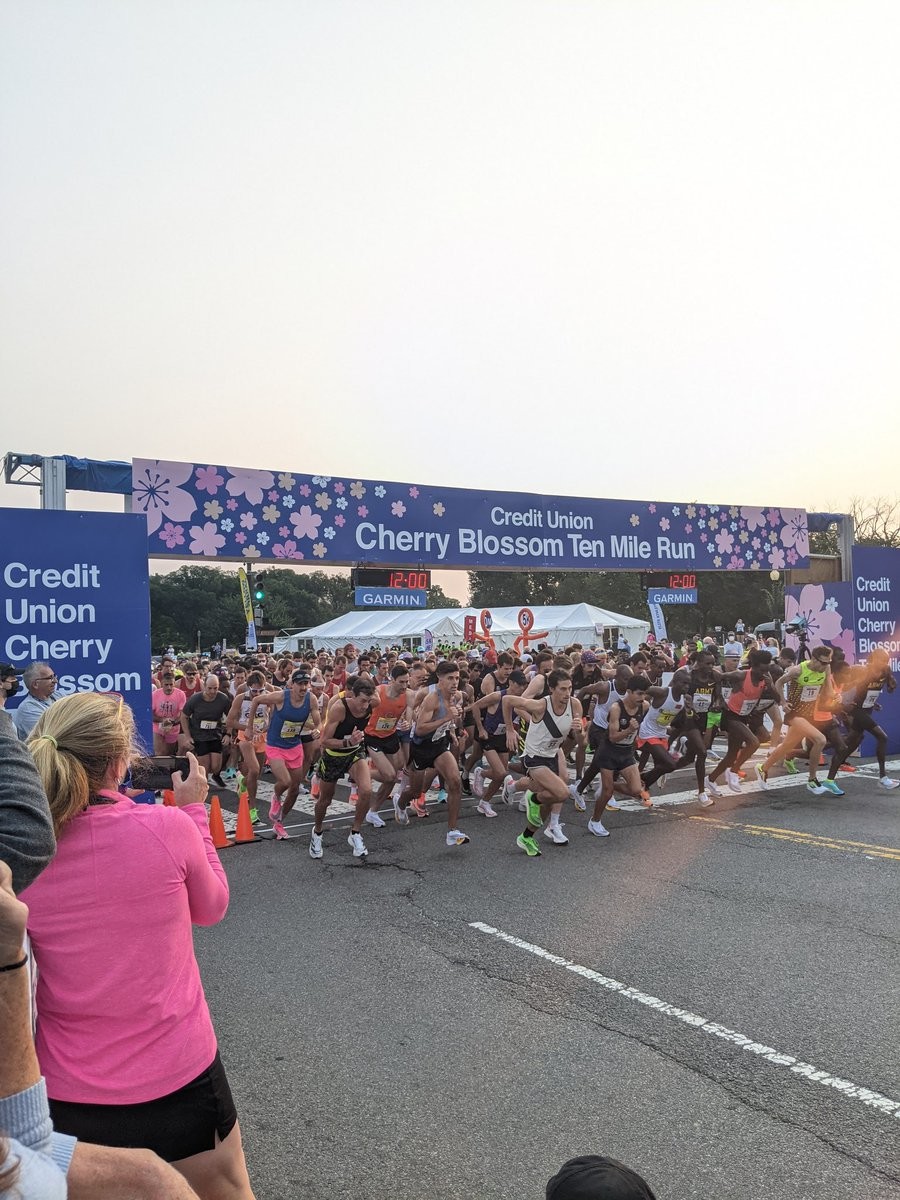
Rojas added: “With 800 to go, I knew Jenny was right there, I was really scared. I kicked around 600, and made that decision because I couldn’t let Jenny have the last 50-meter sprint. At that point, I was like ‘I’m fine with second, but just let me do this.’”
While she may have been a novice on the roads at anything longer than one mile, Simpson displayed confidence and savvy from the start. In fact, USATF.tv webcast commentator Carrie Tollefson remarked that Jenny cut the tightest tangent in the women’s lead pack of 14, going into a roundabout on the Virginia end of Memorial Bridge at a little more than 1 ½ miles into the race. Throughout the race, Simpson could be seen moving around the dwindling lead pack — side to side, forward and back — while eventual third place American Annie Frisbie oftentimes found herself in the lead, pushing the pace, or sharing pacesetting duties with Rojas and overall third place finisher Antonina Kwambai.
“When Nell pushed it up the last hill, once she got separation, I just couldn’t respond,” said Simpson. “She was really strong.”
Simpson added: “Sometimes the best thing that can happen with a new experience is to get second. I’m finishing hungry. Overall, the entire experience was 10 times better than I expected.”
In the men’s race, American Frank Lara —who would eventually finish fifth overall as fourth American — charged out hard from the start, and the men’s field quickly strung out. By 5K four men had broken away: Kimutai, Lara, and his fellow Americans Abbabiya Simbassa and Augustus Maiyo. By 10K, Kimutai had established a 17-second lead over the Maiyo and Simbassa, with Lara a few seconds adrift of his compatriots. As Kimutai’s lead grew, Maiyo and Simbassa continued to run side-by-side through 15K. Two minutes later, the 28 year-old Simbassa began to pull away from 38-year-old Maiyo, building himself a five second margin by the finish.
When asked if he felt guilty taking the 2021 USATF Men’s 10 Mile Championships title from the 38-year-old Maiyo, Simbassa replied: “I respect those guys, they know more than I do. I’m just out to do my best.”
Well, today, Simbassa’s best earned him the title of America’s best after so many recent second-place finishes in USATF Championship races, and elicited this comment: “It feels good. I’ve been hunting for a long time, and it finally happened today.”
Here’s a compilation of place, times and money earned by the top-10 American women and men as well as open prize money winners, and RRCA Roads Scholar-RunPro Development Award winners.
by Running USA
Login to leave a comment
Cherry Blossom Ten Mile Run
The Credit Union Cherry Blossom is known as "The Runner's Rite of Spring" in the Nation's Capital. The staging area for the event is on the Washington Monument Grounds, and the course passes in sight of all of the major Washington, DC Memorials. The event serves as a fundraiser for the Children's Miracle Network Hospitals, a consortium of 170 premier...
more...48th Edition of Credit Union Cherry Blossom Ten Mile Run to Feature Strong Men’s and Women’s Fields
It has been a long time coming — too long — and America’s finest distance runners are eager to toe the starting line at the 2021 Credit Union Cherry Blossom Ten Mile (CUCB), to be held in our Nation’s Capital on Sunday, September 12. With $26,000 in U.S. championship prize money on offer as well as a $10,000 bonus for an American Record (the bonus will be split if both the male and female break the American records), road racing fans can look forward to hotly contested races among both the men and women.
“It has been nearly two years since the last time the U.S. Ten Mile Championships for men and women were held,” said event director Phil Stewart. “I know a host of talented Americans are eager to take an important middle-distance test as most of them prepare for fall marathons, of which there are plenty, with all six World Marathon Majors events taking place over a six-week period between September 26 and November 7.”
This will be the third time one or more of the USATF 10 Mile Championships have been hosted by CUCB alongside the traditional international competition: the women’s championships were part of the 2013 Credit Union Cherry Blossom Ten Mile, with Janet Bawcom winning the title in 53:28 while placing fourth overall. A year later in 2014, race organizers hosted both the men’s and women’s championships. Christo Landry (46:41) was the first American to cross the finish line—in sixth place overall—while Bawcom repeated as the U.S. women’s champion by placing second overall in 52:12. Both of Bawcom’s times established American records at the time.
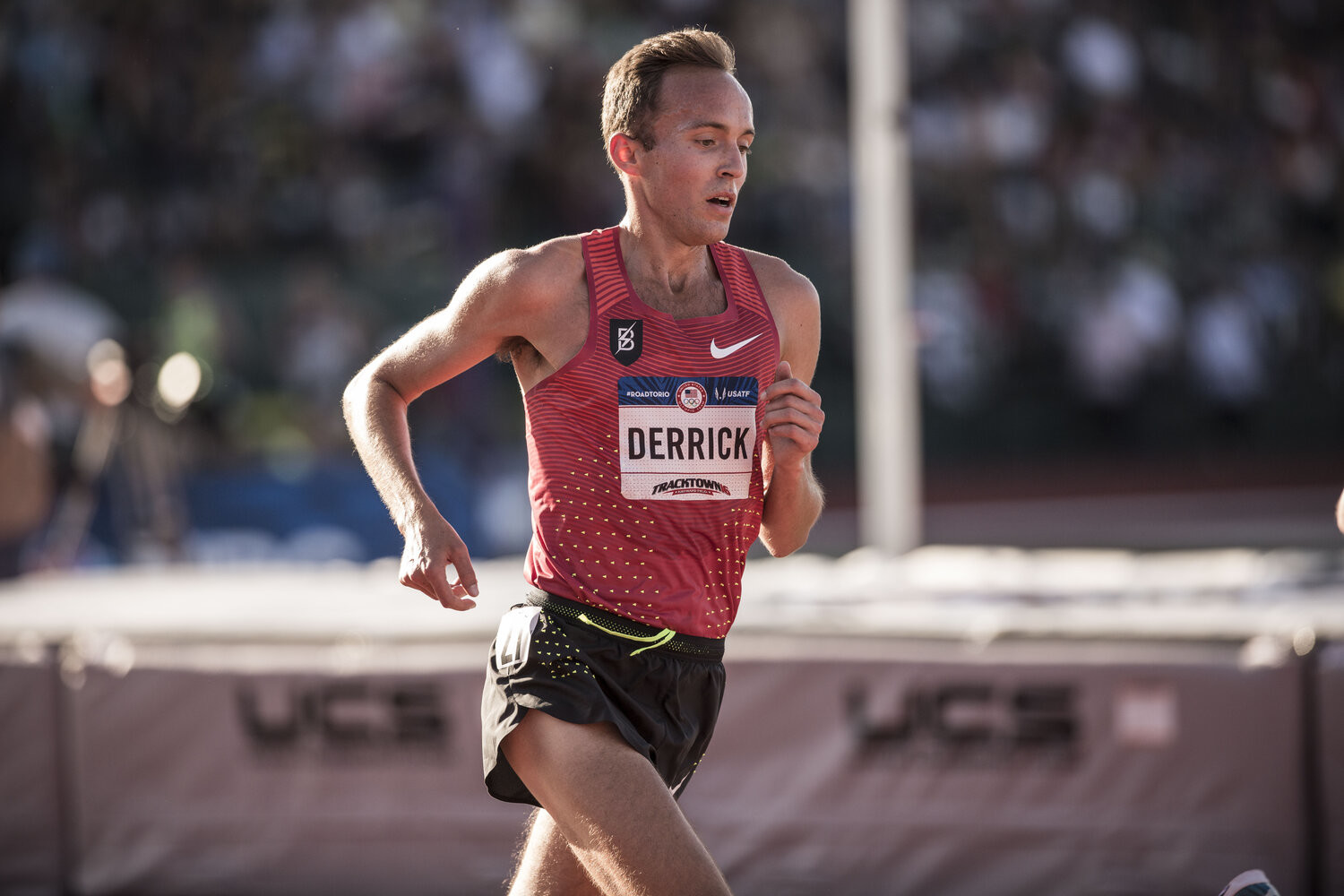
Keira D’Amato broke Bawcom’s American Record last fall at the Up Dawg Ten Mile, running 51:23 in a small invitational race organized by the Cherry Blossom Race Committee specifically for her to chase Bawcom’s record. D’Amato’s effort was recently verified as a women’s only World Record by the Association of Road Racing Statisticians as well. (ARRS is the only organization keeping world records at the 10-mile distance.)
D’Amato will be joined on the starting line by two American women who have broken 53 minutes for 10 miles: Jordan Hasay (52:49) and Emma Bates (52:51). Three other Americans have run 54:00 or faster: Natosha Rogers (53:45), Diane Nukuri (53:56), and Annie Frisbie (54:00).
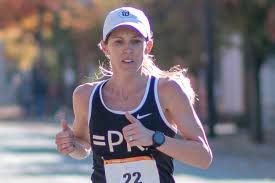
On the men’s side, Futsum Zienasellassie will be defending the USATF 10 Mile Championship he won in Minneapolis in 2019 (the last time American runners competed for this title, thanks to Covid-19). His winning time of 46:55 is one of four sub-47:00 marks among the American men entered in the race. Chris Derrick boasts the fastest personal best (46:53), which he ran at CUCB in 2018 when he was top American and fifth overall. Abbabiya Simbassa ran 46:57 to place second behind Zienasellassie in Minneapolis in 2019, and Kiya Dandena ran 46:58 in 2017 at CUCB. The current pending men’s American record is 45:54 set by Galen Rupp last fall. Rupp’s time bettered Greg Meyer’s time of 46:13 from the 1983 Cherry Blossom Ten Mile.
Here’s a complete listing of elite American athletes who have confirmed their entry into the 2021 Credit Union Cherry Blossom Ten Mile, with personal bests noted in parentheses:
Women:
Keira D’Amato (51:23)
Jordan Hasay (52:49)
Emma Bates (52:51)
Natosha Rogers (53:45)
Diane Nukuri (53:56)
Annie Frisbie (54:00)
Bria Wetsch (54:14)
Susanna Sullivan (54:22)
Bethany Sachtleben (54:42)
Grayson Murphy (54:51)
Carrie Verdon (56:57)
Danielle Shanahan (31:22.9 10K)
Amy Davis (32:13 10K)
Abbie McNulty (33:07 10K)
Stephanie Bruce (1:09:55 half marathon)
Nell Rojas (1:10:45 half marathon)
Men:
Chris Derrick (46:53)
Futsum Zienasellassie (46:55)
Abbabiya Simbassa (46:57)
Kiya Dandena (46:58)
Augustus Maiyo (47:05)
Elkanah Kibet (47:15)
Girma Mecheso (47:22)
Noah Droddy (47:28)
Louis Serafini. (47:35)
Emmanuel Bor (47:39)
Reed Fischer (47:50)
Shadrack Biwott (47:53)
John Raneri (47:53)
Tyler McAndless (47:56)
Dhruvil. Patel (48:37)
Frank Lara (48:37)
Joel Reichow (48:41)
Alex Monroe (48:57)
Willie Milam (49:10)
Robert Brandt (27:39.2 10K)
Brendan Gregg (44:25 15K)
Reid Buchanan (44:40 15K)
Emmanuel Roudolff (1:04:08 half marathon).
by Running USA
Login to leave a comment
Cherry Blossom Ten Mile Run
The Credit Union Cherry Blossom is known as "The Runner's Rite of Spring" in the Nation's Capital. The staging area for the event is on the Washington Monument Grounds, and the course passes in sight of all of the major Washington, DC Memorials. The event serves as a fundraiser for the Children's Miracle Network Hospitals, a consortium of 170 premier...
more...Kenyan compatriots, training partners and rivals Elisha Barno and Dominic Ondoro will renew their Medtronic Twin Cities Marathon rivalry on Sunday
Between them, the pair has won the last four editions of the event, with Barno entering this year’s race as the defending champion, but Ondoro still possessing the event record. A wide-open women’s race will crown a new champion this year, with 2018 champ Sinke Biyadgilgn of Kenya racing elsewhere this fall.
Among the top women’s contenders are former Grandma’s Marathon record-holder Sarah Kiptoo of Kenya, 2014 Medtronic Twin Cities Marathon runner-up Heather Lieberg of Helena, Mont., and Team USA Minnesota rising star Dakotah Lindwurm of Burnsville.
The men’s and women’s marathon favorites will be racing for $5000 winners’ checks and $25,000 course record bonuses.
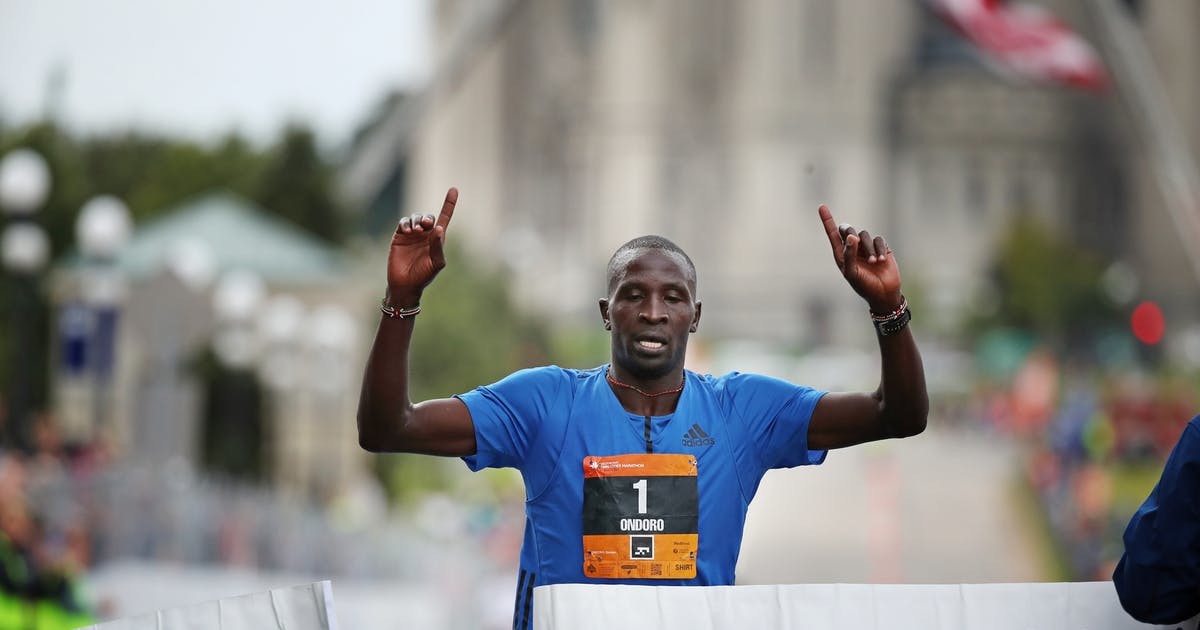
In the Medtronic TC 10 Mile, set for earlier Sunday morning, balanced men’s and women’s fields will race for USATF titles, $12,500 winners’ checks and a $10,000 “Equalizer Bonus for the first champion – female or male – to cross the finish line in a competition where the women start the race ahead of the men.
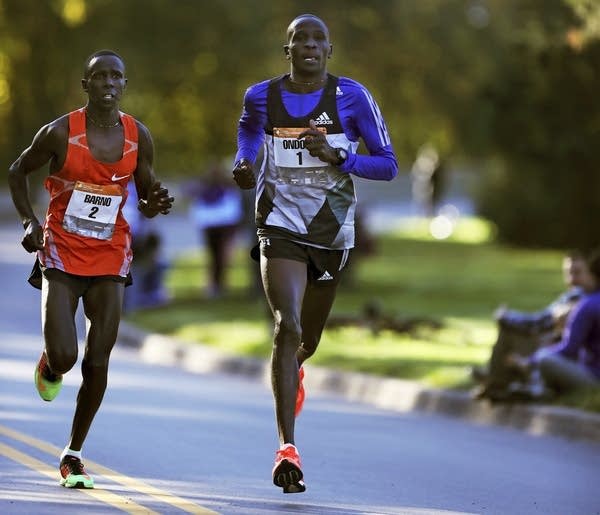
With defending champions Shadrack Kipchirchir and Sarah Hall not in the field this year, attention is focused on Josef Tessema of Castle Rock, Colo., last year’s 5th place finisher, Scott Fauble, a USATF Championship runner-up at 25K and half marathon, and local favorite Tyler Jermann of Burnsville, who represents Team USA Minnesota.
The women’s field is headlined by Katy Jermann, (spouse of Tyler) runner up at the recent USATF 20K Championships, Anne-Marie Blaney of Rochester Hills, Mich., 6th here last year, and 2019 Grandma’s Marathon champion Nell Rojas of Boulder, Colo.
The Medtronic TC 10 Mile with its more than 13,000 runners will start at approximately 6:54 a.m. Sunday, with the Medtronic Twin Cities Marathon and its more than 8,700 participants starting at 7:55 a.m.
Medtronic Twin Cities Marathon Weekend kicks off at 11:00 a.m. on Friday, October 4, with the opening of the Health & Fitness Expo at Saint Paul RiverCentre.
Login to leave a comment
Medtronic Twin Cities Marathon
The Medtronic Twin Cities Marathon Weekend offer races, walks and activities for every age and ability level! Learn more about the weekend's events and activities by using the navigation bar at the left or top of your screen. The Twin Cities Marathonis a running event in the Minneapolis-Saint Paul area. The TCM was first run in 1982, and typically takes...
more...Stephen Sambu of Kenya and Leonard Korir of the U.S., Sara Hall and Des Linden will return for the 47th running of the New Balance Falmouth Road Race
Stephen Sambu of Kenya and Leonard Korir of the U.S., who together staged an epic battle to the finish line in 2017, and Americans Sara Hall and Des Linden will return for the 47th running of the New Balance Falmouth Road Race, organizers announced today.
The fields for the Wheelchair Division presented by Spaulding Rehabilitation Hospital Cape Cod and the Aetna Falmouth Elite Mile will be announced next week.
Sambu won the New Balance Falmouth Road Race every year from 2014-2017, becoming the first four-time winner of the men’s open division in race history. The runner-up in two of those victories was Korir, a 2016 Olympian at 10,000 meters who will represent the U.S. this fall at the IAAF World Championships. In 2017, Korir nearly denied Sambu his place in the history books in a fight to the finish that saw both athletes awarded the same time.
Sambu and Korir will be challenged by a tough international field that includes Thomas Ayeko of Uganda, who finished seventh in the 2019 IAAF World Cross Country Championships; David Bett of Kenya, who won the B.A.A. 10K in June; and Silas Kipruto of Kenya, winner of the 2019 Cooper River Bridge Run. Massachusetts native Colin Bennie, who was the top American at the AJC Peachtree Road Race on July 4, and Scott Fauble, a top contender to make Team USA at the 2020 Olympic Marathon Trials in February and runner-up here last year to Canadian Ben Flanagan, should be in the hunt.
Flanagan’s season has been cut short by injury, but he will return to Falmouth to speak on a Past Champions panel at the Health & Fitness Expo, hand out gift bags at bib pickup and run with a group of local youth.
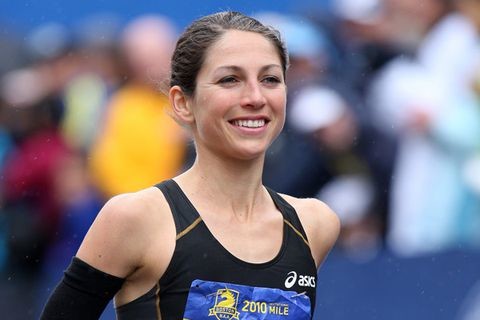
In the women’s open division, Hall – who finished second here in 2015 – comes in as the reigning USA 10K champion, and in her long career has won U.S. titles at distances ranging from the mile to the marathon. Fellow American Des Linden, a two-time OIympian and the 2018 Boston Marathon champion, will make her Falmouth competitive debut after running with the pack here last year in celebration of her Boston victory.
“It’s beautiful,” said Linden of the course after her 2018 run. “It helps you forget it’s really hard. Some really impressive things have been done on this course. It’s cool to cover it, and it would be really fun to race it.”
They will face a deep women’s field, highlighted by a trio of Kenyans: 2012 New Balance Falmouth Road Race Champion Margaret Wangari, 2018 NCAA 10,000-meter champion Sharon Lokedi and Iveen Chepkemoi, who recently finished second in the Boilermaker 15K in Utica, N.Y. Also challenging will be two athletes from Great Britain: Lily Partridge, the 2018 national marathon champion, andTish Jones, who will compete in the marathon at the 2019 World Championships.
Allie Kieffer, who finished fifth in the 2015 TCS New York City Marathon; Melissa Dock, the top American woman here last year who competed for Team USA at the 2019 Bolder Boulder;Molly Seidel, the 2015 NCAA 10,000-meter champion; and Nell Rojas, winner of the 2019 Grandma’s Marathon and daughter of Ric Rojas, who competed for Harvard and at one time held the 15K world record, round out a solid American lineup.
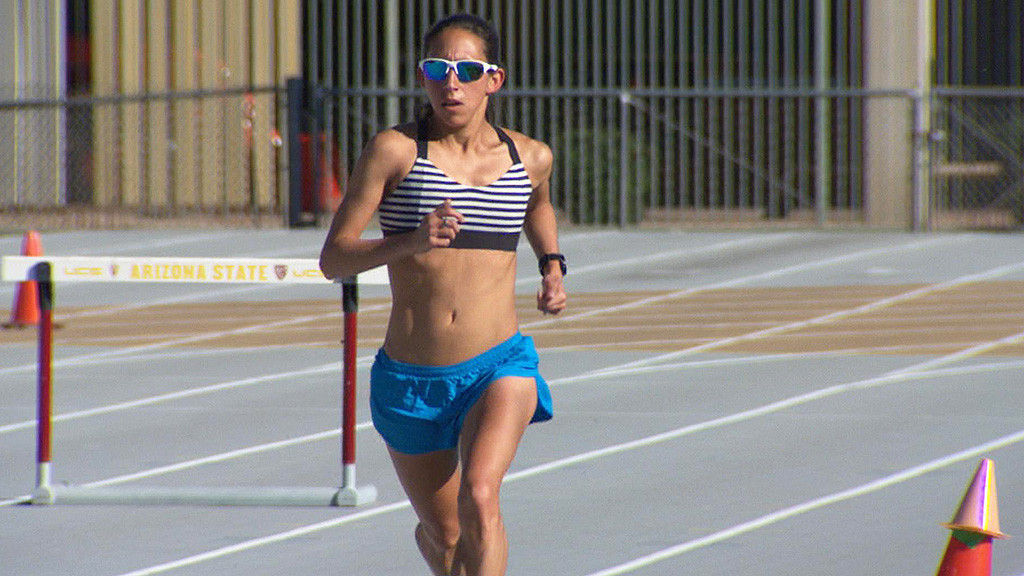
Three-time winner Caroline Chepkoech of Kenya will not return to defend her title.
First prize in the men’s and women’s open division is $10,000, part of a total $126,000 prize purse for Race Week events, which include the Aetna Falmouth Elite Mile the evening before the 7-miler. In addition, the men’s and women’s winners will seek to prevail in “The Countdown.”
A beat-the-clock handicap race, “The Countdown” features a finish-line clock that starts when the first woman breaks the tape, counting down the number of minutes and seconds the winning man has to beat, according to a pre-determined formula. If the clock runs out before he crosses the line, the victorious woman wins a $5,000 bonus; if it doesn’t, the winning man takes home the money. The time to beat this year is 3 minutes and 35 seconds.
Login to leave a comment
Falmouth Road Race
The Falmouth Road Race was established in 1973 and has become one of the premier running events of the summer season. Each year the race draws an international field of Olympians, elite runners and recreational runners out to enjoy the scenic 7-mile seaside course. The non-profit Falmouth Road Race organization is dedicated to promoting health and fitness for all in...
more...USA Olympic Trials Marathon has achieved the IAAF Gold Label Status
USA Track & Field (USATF) announced today that the 2020 USA Olympic Trials Marathon, scheduled for February 29, in Atlanta, has been granted IAAF Gold Label status. That's a critical development because it means that the top-5 male and female finishers will automatically achieve 2020 Olympic Games qualifying marks, regardless of their finish times. As part of the Tokyo Olympic Games qualifying program unveiled by the International Association of Athletics Federations earlier this year, top-5 finishers at Gold Label marathons are given automatic Olympic Games qualifiers. As such, the six-athlete USA Olympic team in the marathon can be named with certainty on the day of the Trials with the top-3 male and female finishers nominated for the team.
In a press release, USATF said that "the announcement of the Tokyo 2020 Qualification System in March presented challenges to USATF and its partners as planning for marathon trials had begun well before the changes to the qualification system were announced." Those partners include the not-for-profit Atlanta Track Club, which will host the Trials, as well as NBC the network which will broadcast them. The Trials would be devalued for both of these parties if the team could not be named that day.
Right now only a handful of USA athletes have achieved the Olympic Games qualifying standards (2:11:30 for men and 2:29:30 for women since January 1, 2019). On the men's side, there are only two, Scott Fauble and Jared Ward who ran 2:09:09 and 2:09:25, respectively, at last April's Boston Marathon (they also finished in the top-10, which also confers qualifying status at any Abbott World Marathon Majors event). On the women's side there are nine: Emily Sisson (2:23:08), Jordan Hasay (2:25:20), Kellyn Taylor (2:26:27), Molly Huddle (2:26:33), Aliphine Tuliamuk (2:26:50), Des Linden (2:27:00), Nell Rojas (2:28:06), Roberta Groner (2:29:09), and Lindsay Flanagan (2:30:07/9th place at Boston). Those athletes lose the relative advantage of having a qualifying mark in advance of the race.
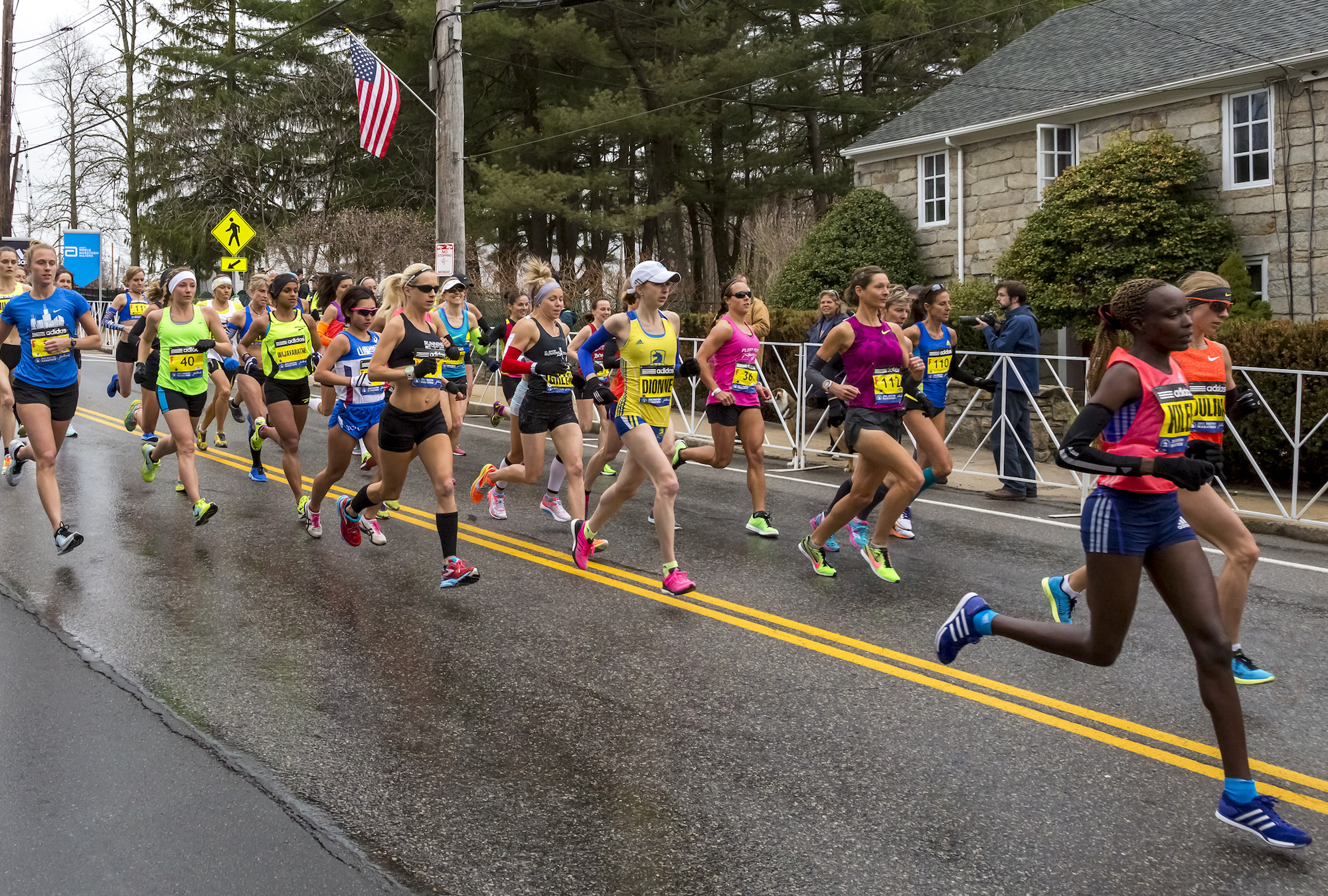
But, for most of the 181 men and 340 women who have qualified, according to a tally done by MarathonGuide.com, this announcement will be good news. Athletes can now approach the trials in the traditional way, with their focus only finish place and not on time. That's particularly important considering the difficulty of the Atlanta course which has a number of challenging hills.
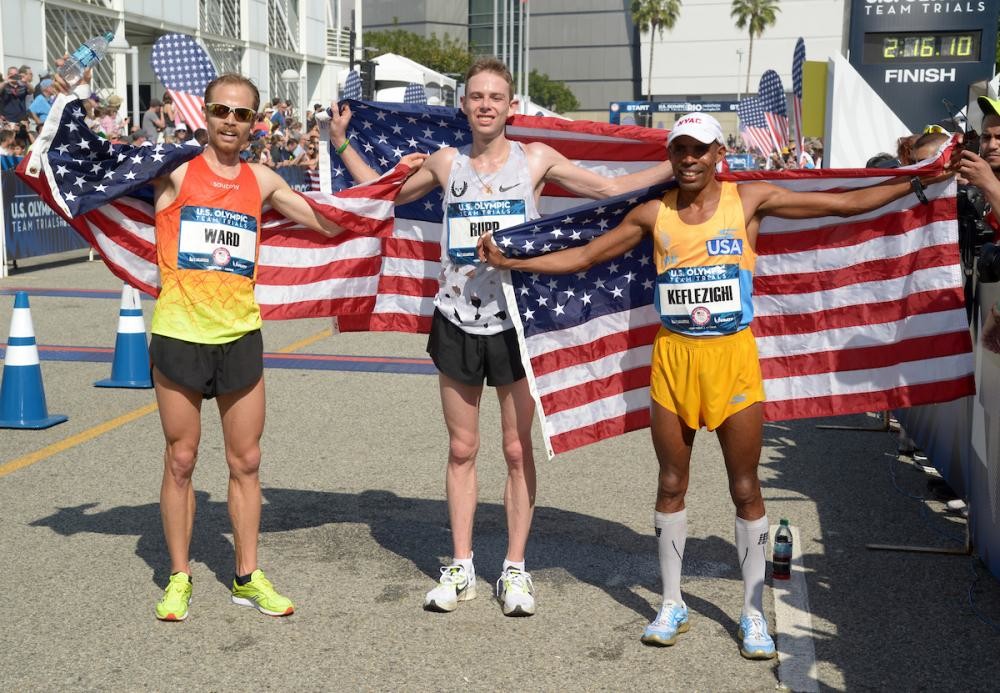
"Hilly is an understatement," said Brogan Austin who won the men's division of an 8-mile test event held on part of the course last March. "I definitely have a new respect for this marathon. I only ran eight miles. I can't imagine doing four times that distance."
Amy Cragg, the winner of the 2016 Trials in Los Angeles, agreed. "It's going to be really, really tough," she told Race Results Weekly after winning the women's division of the test event last March. "We're going to send a good women's team, a really good women's team (to Tokyo). If you can get through this course, you're going to be ready."
Login to leave a comment
2028 US Olympic Trials Marathon
Most countries around the world use a selection committee to choose their Olympic Team Members, but not the USA. Prior to 1968, a series of races were used to select the USA Olympic Marathon team, but beginning in 1968 the format was changed to a single race on a single day with the top three finishers selected to be part...
more...

